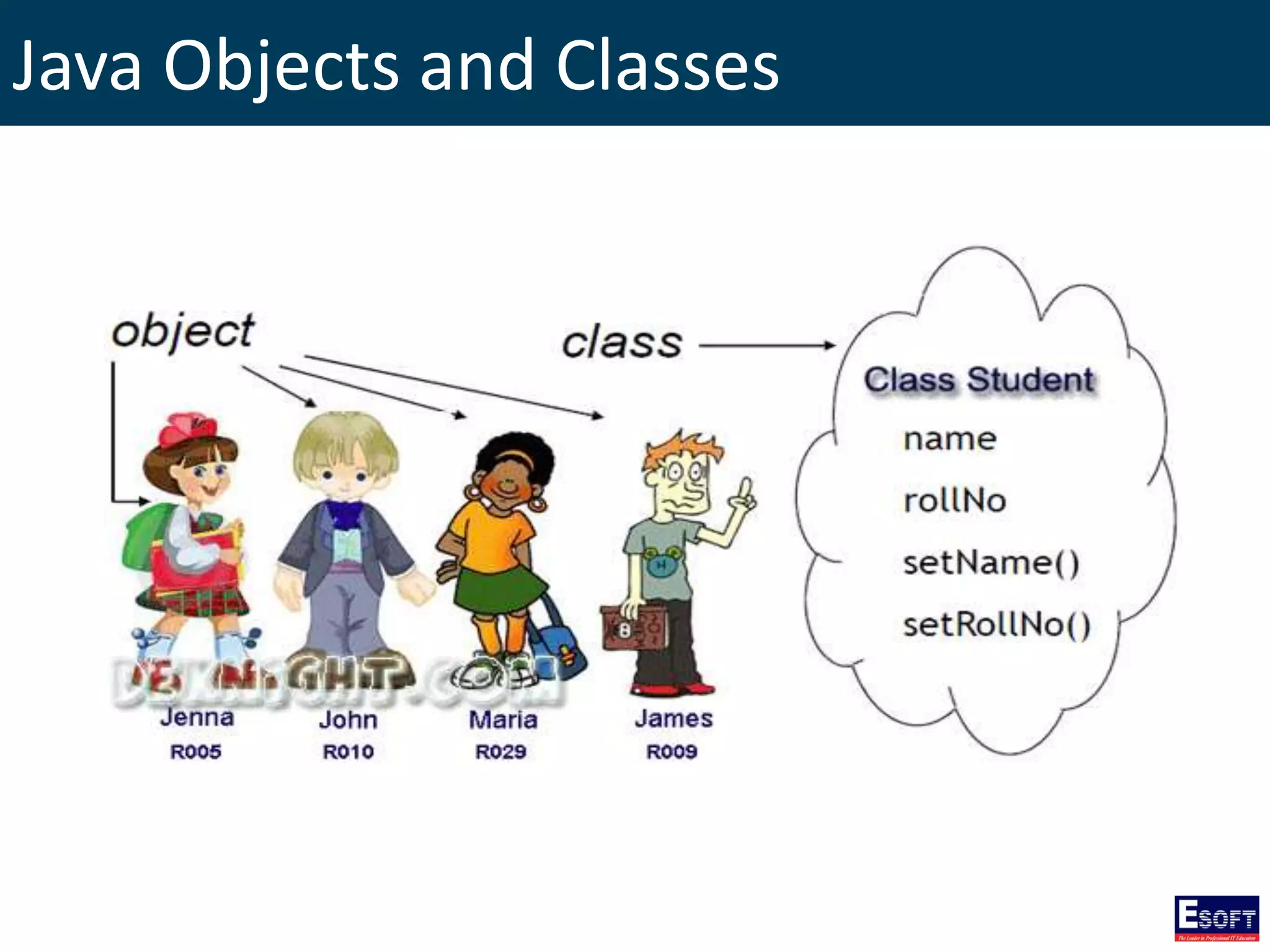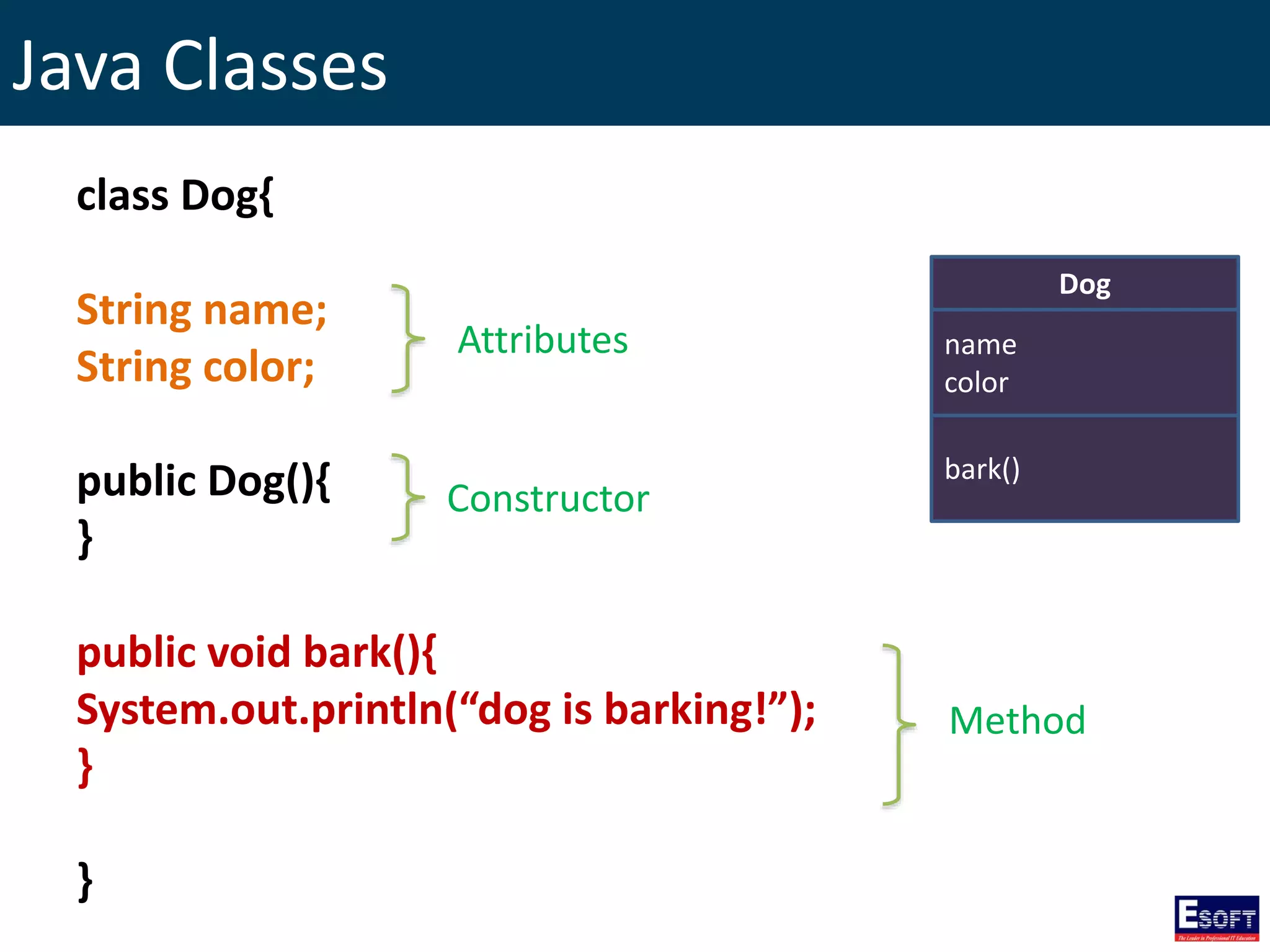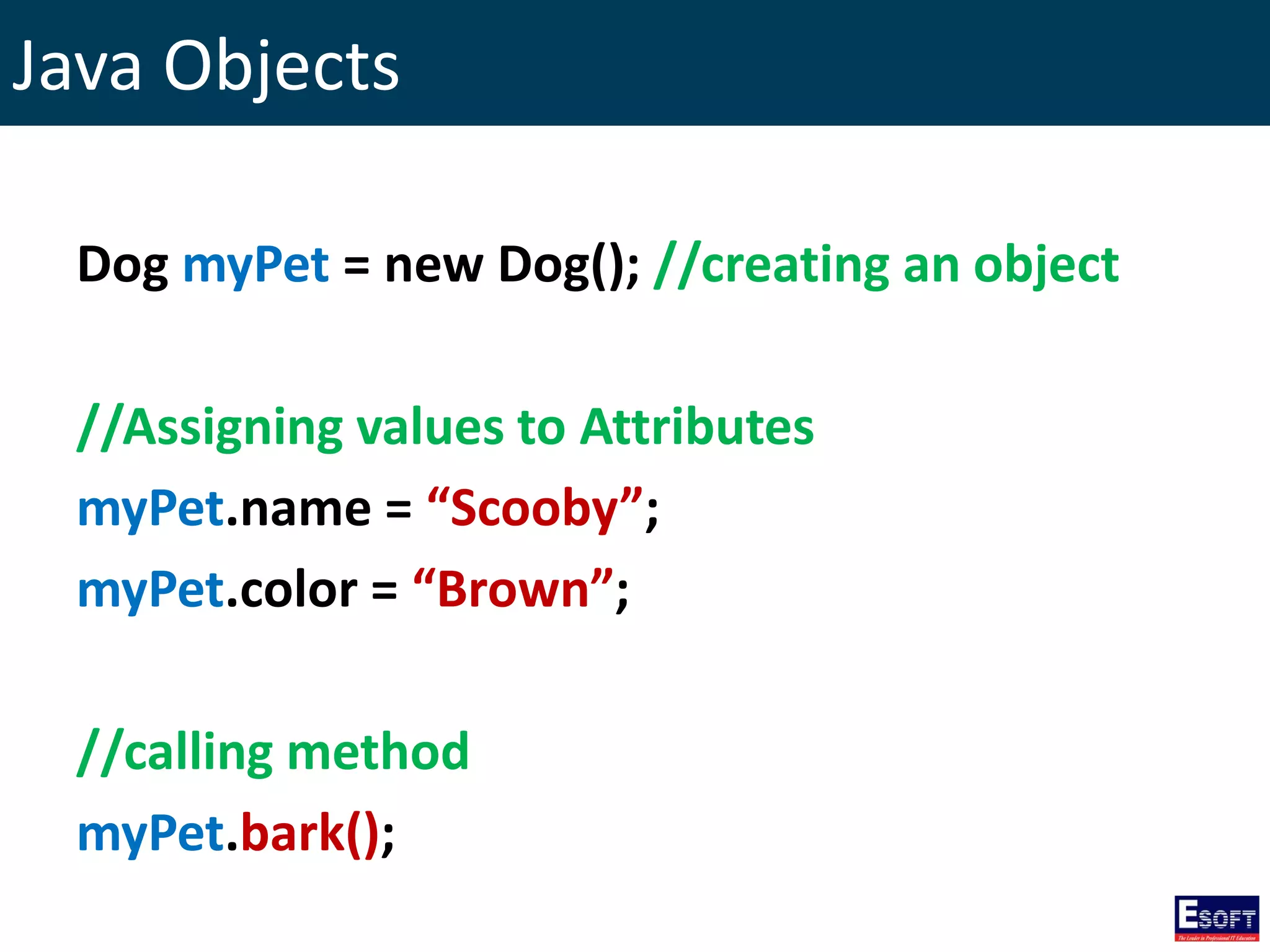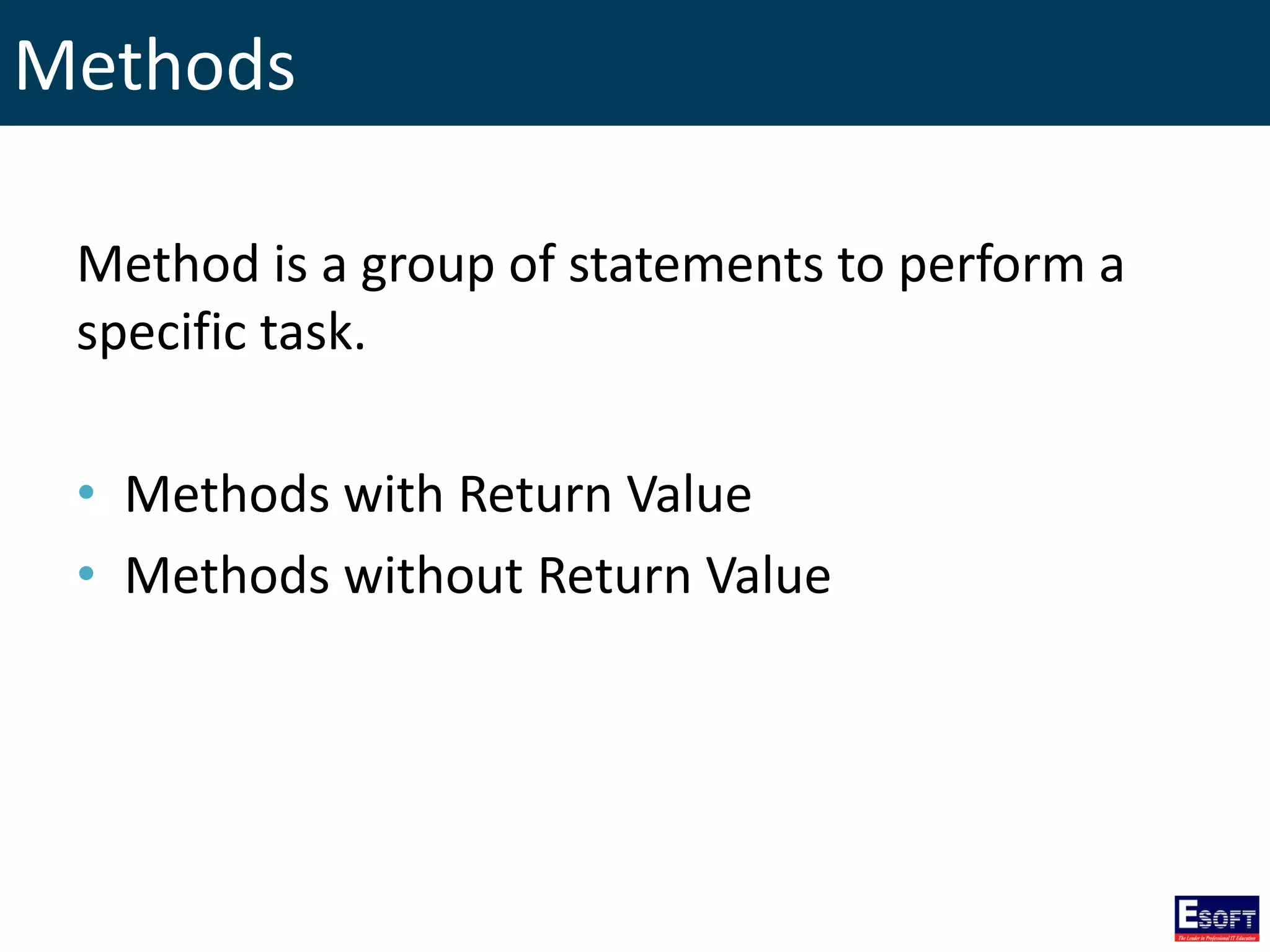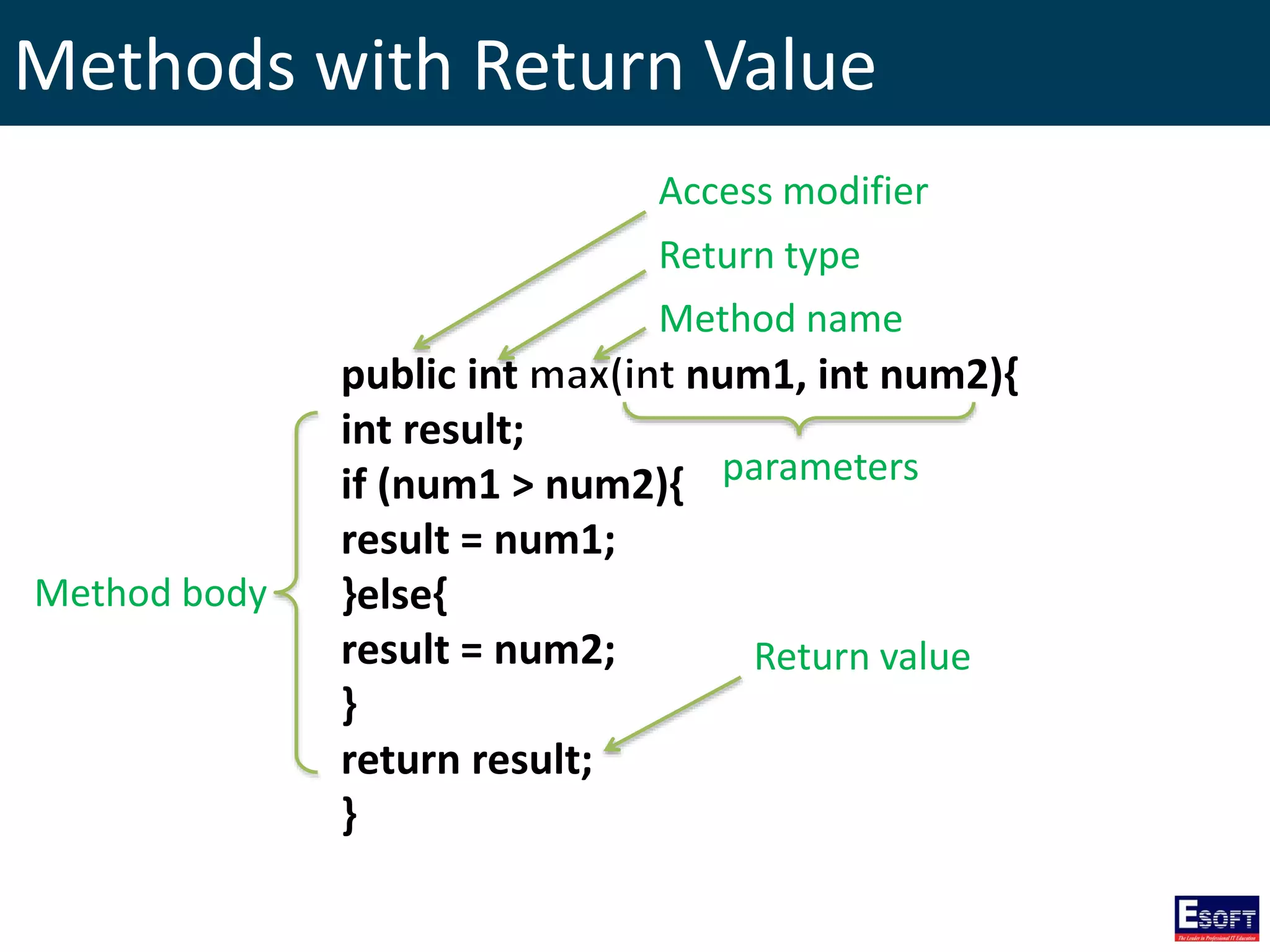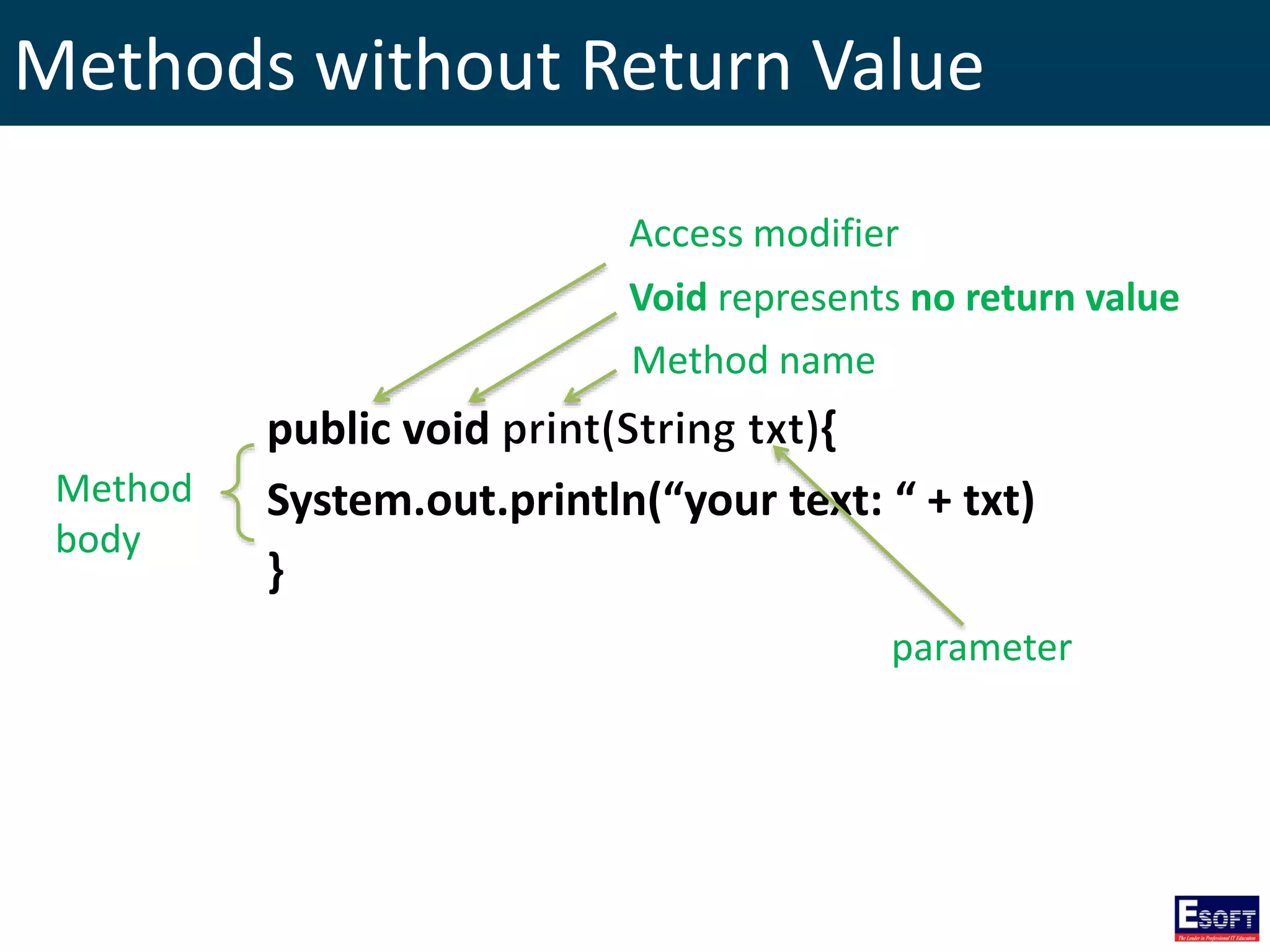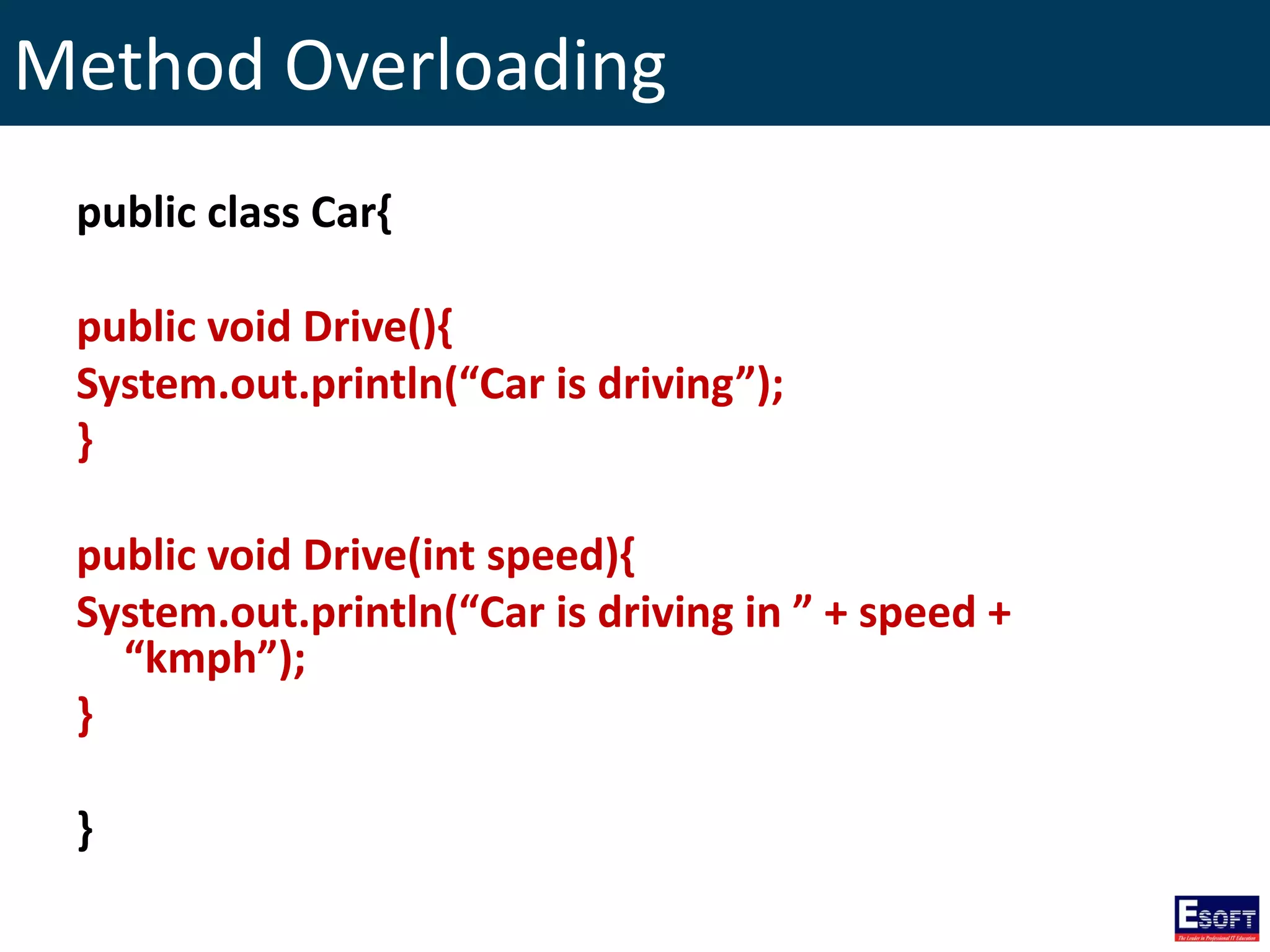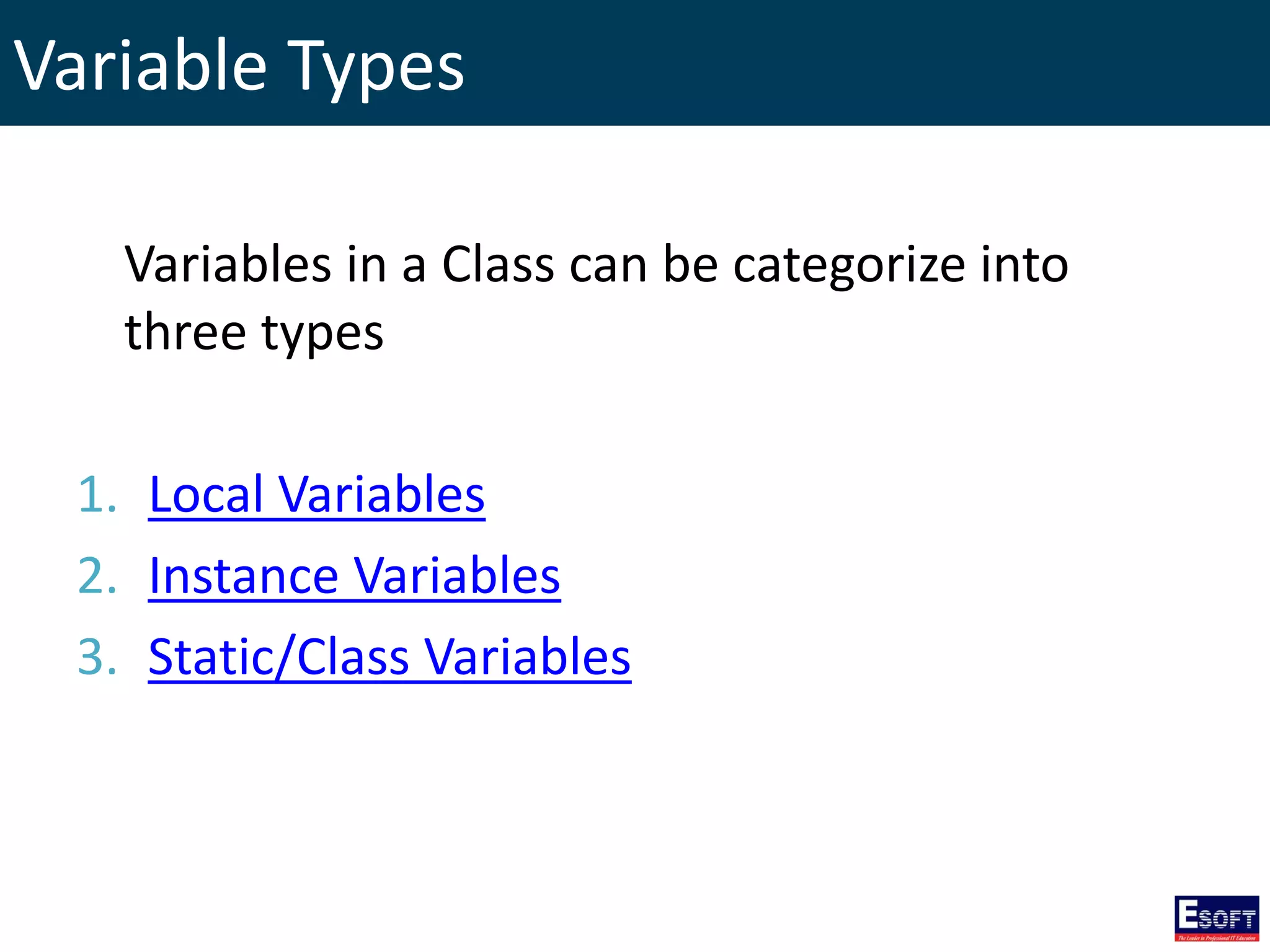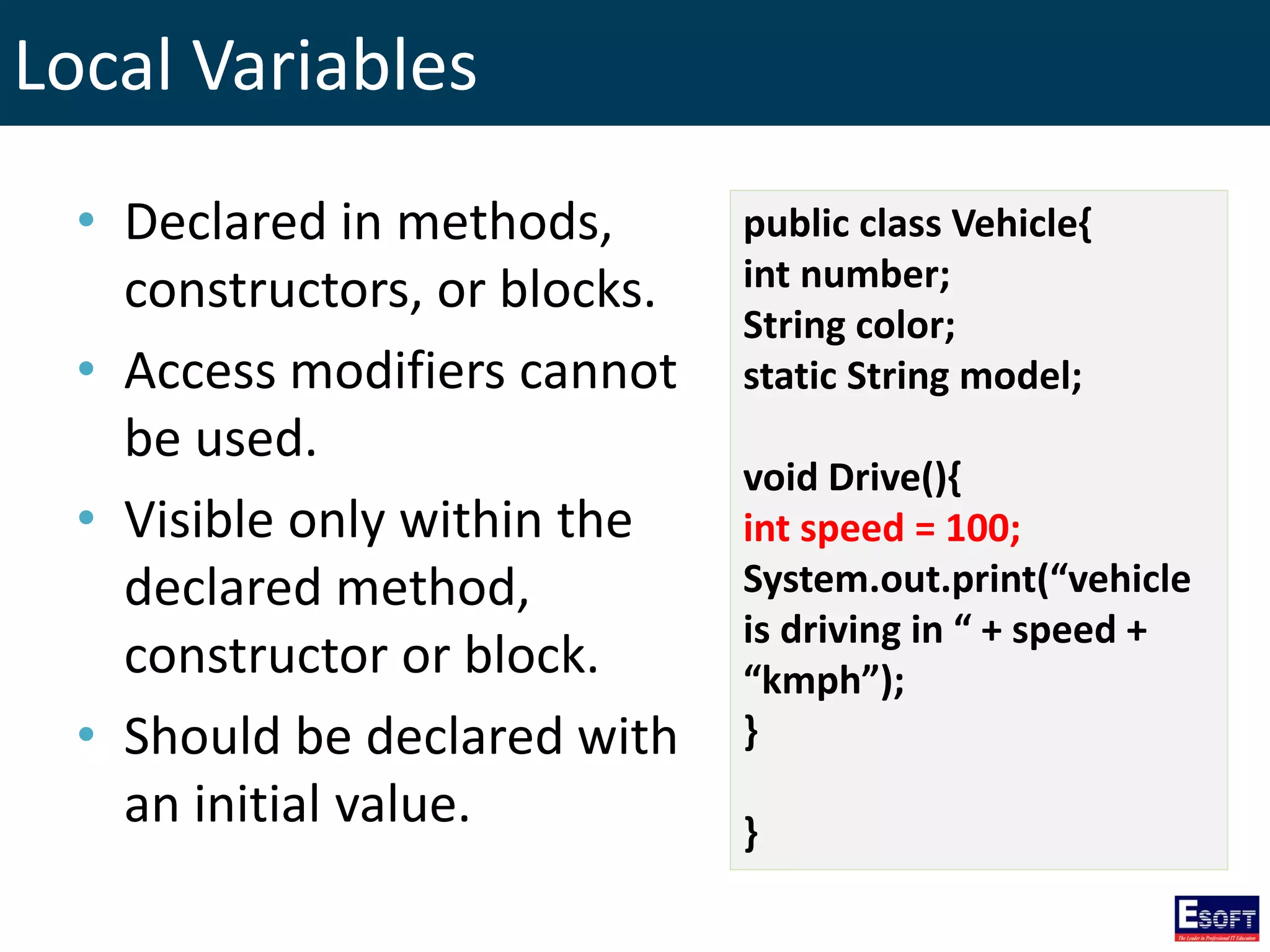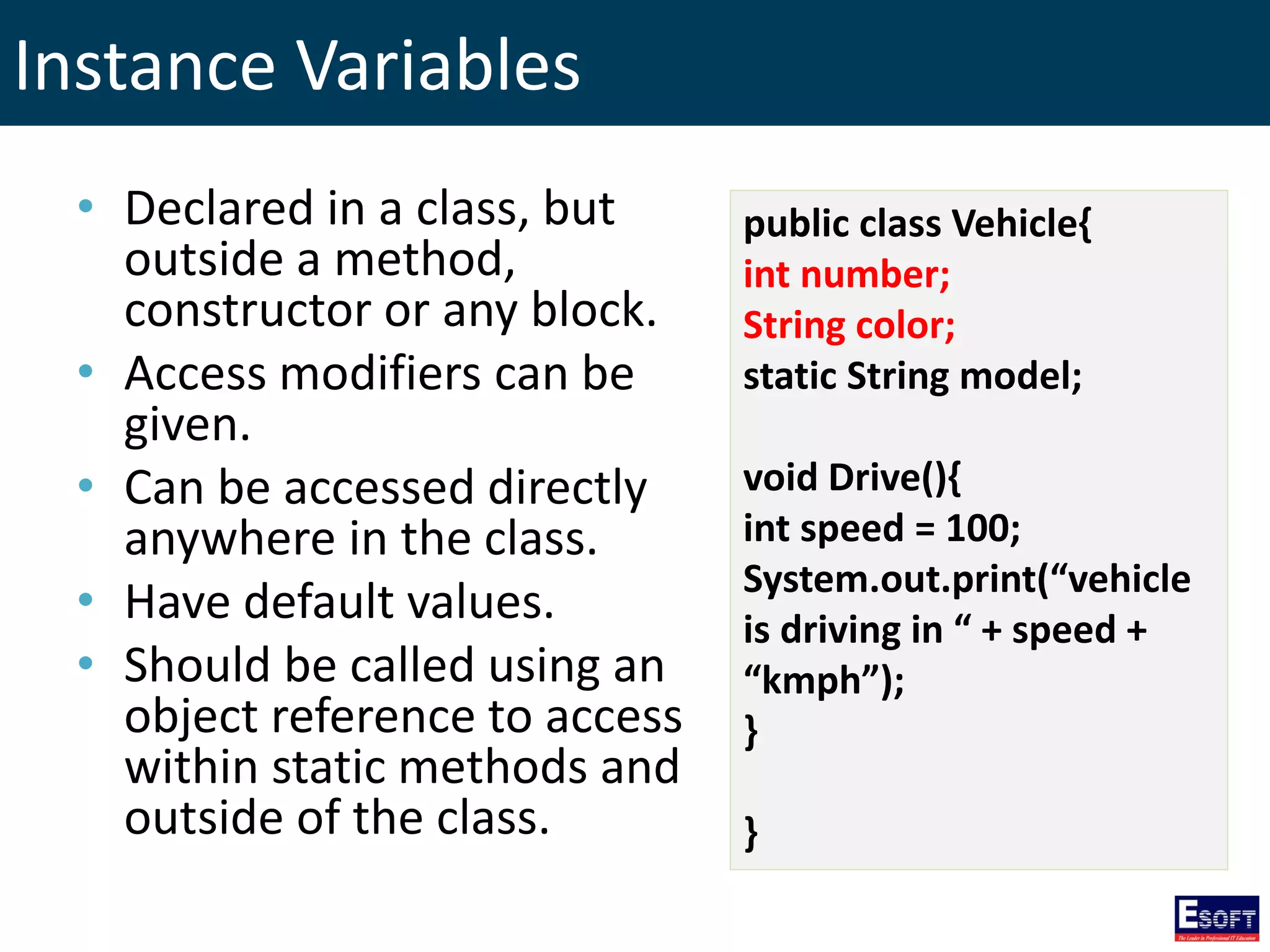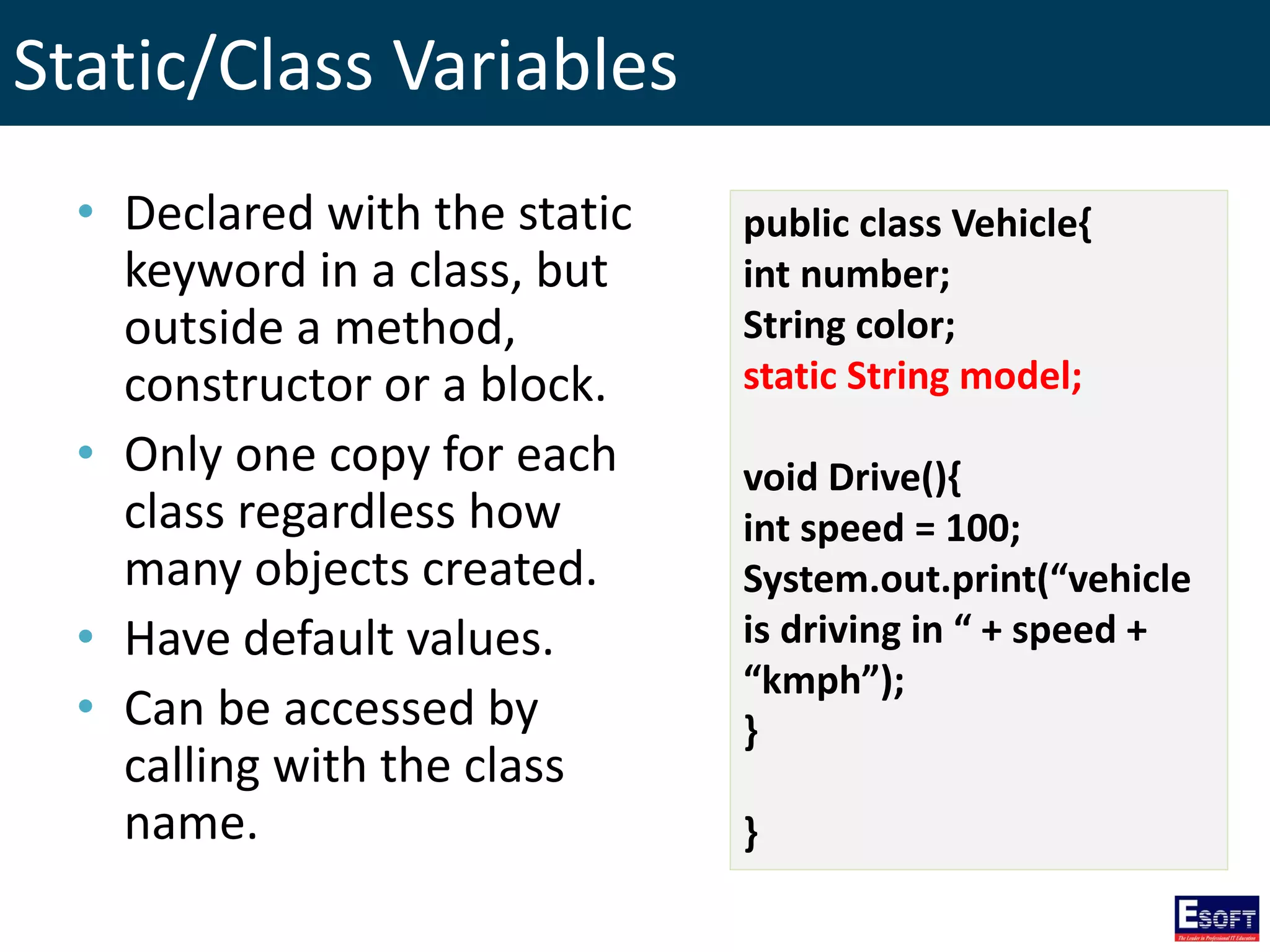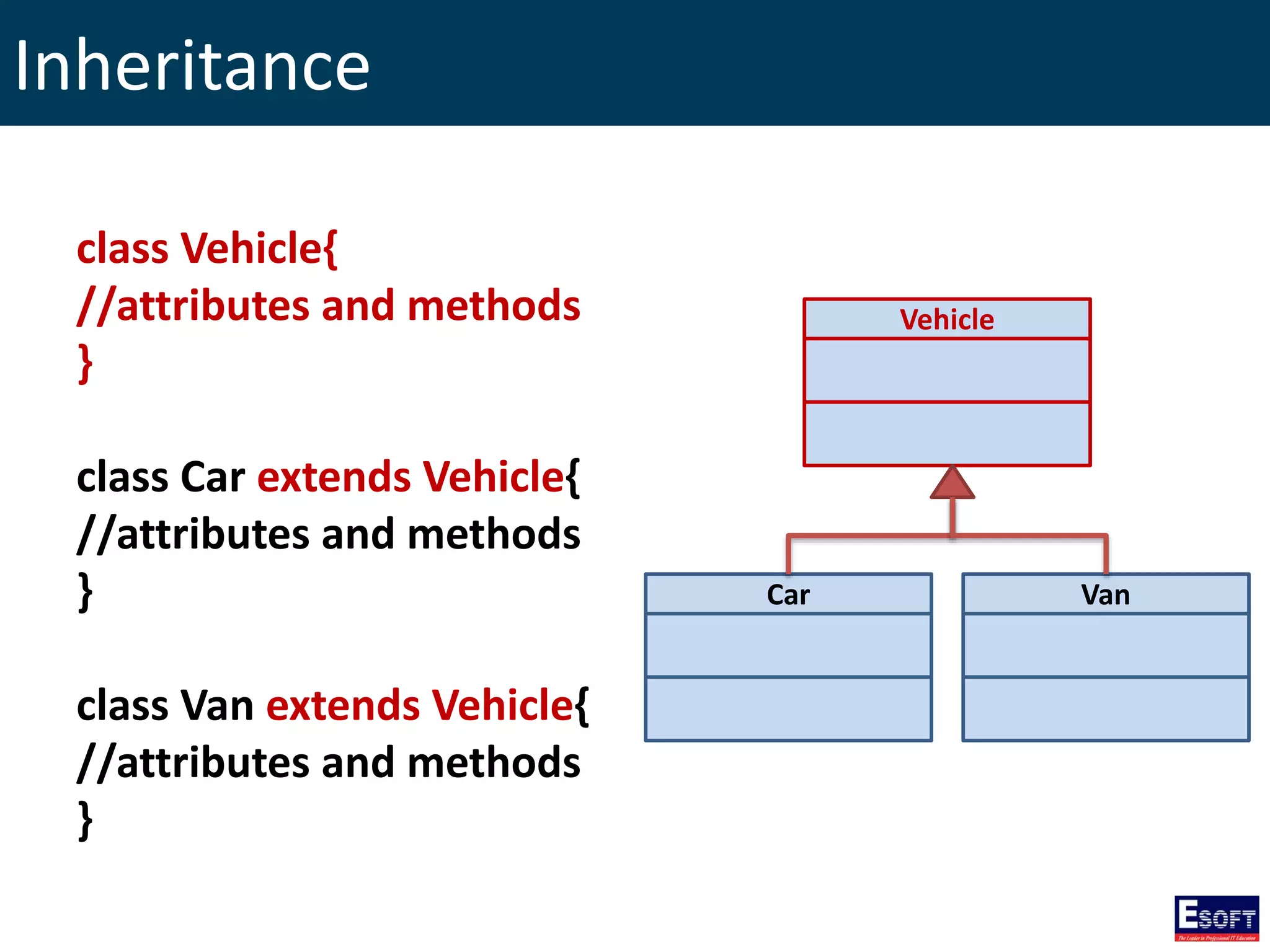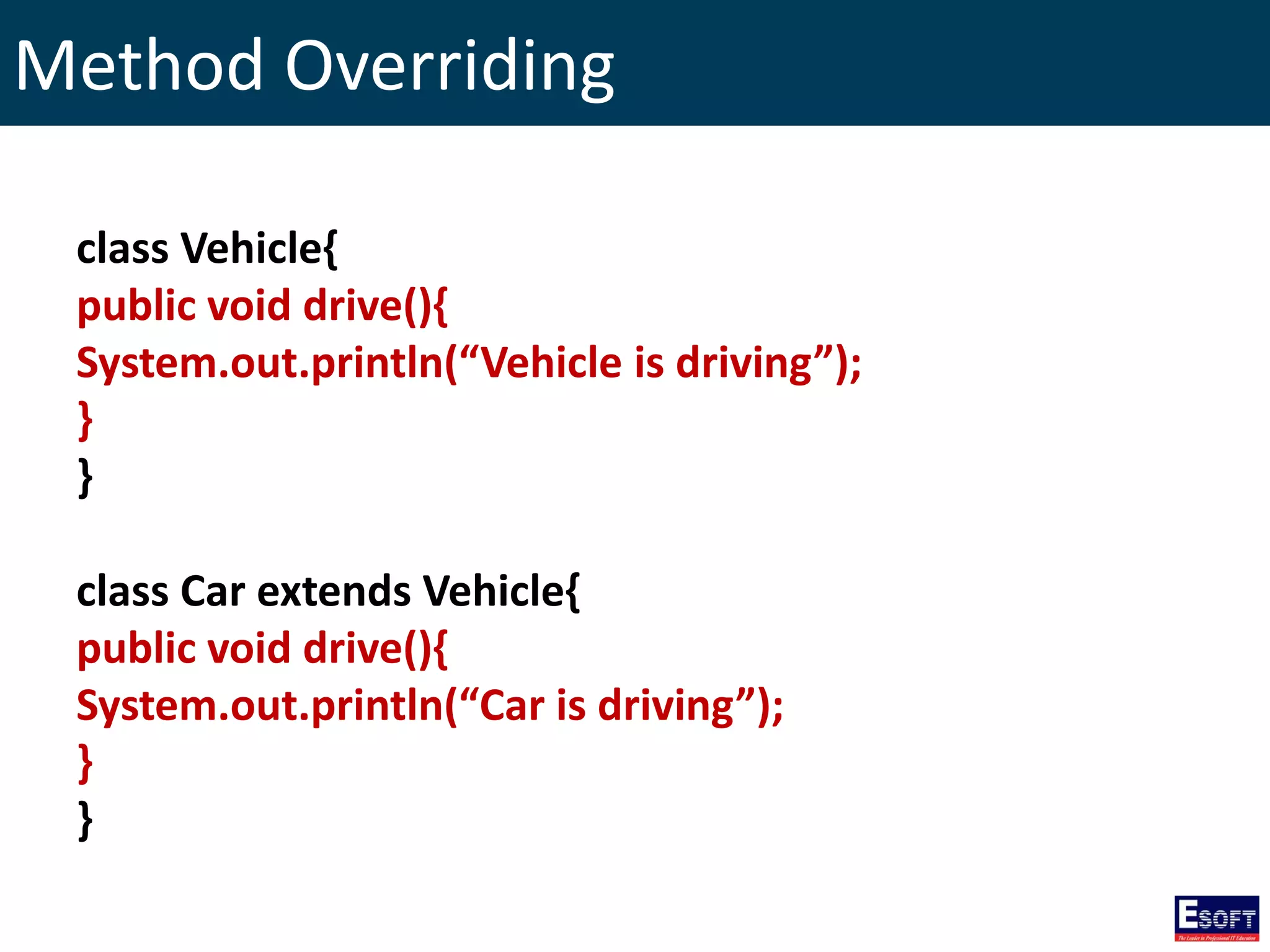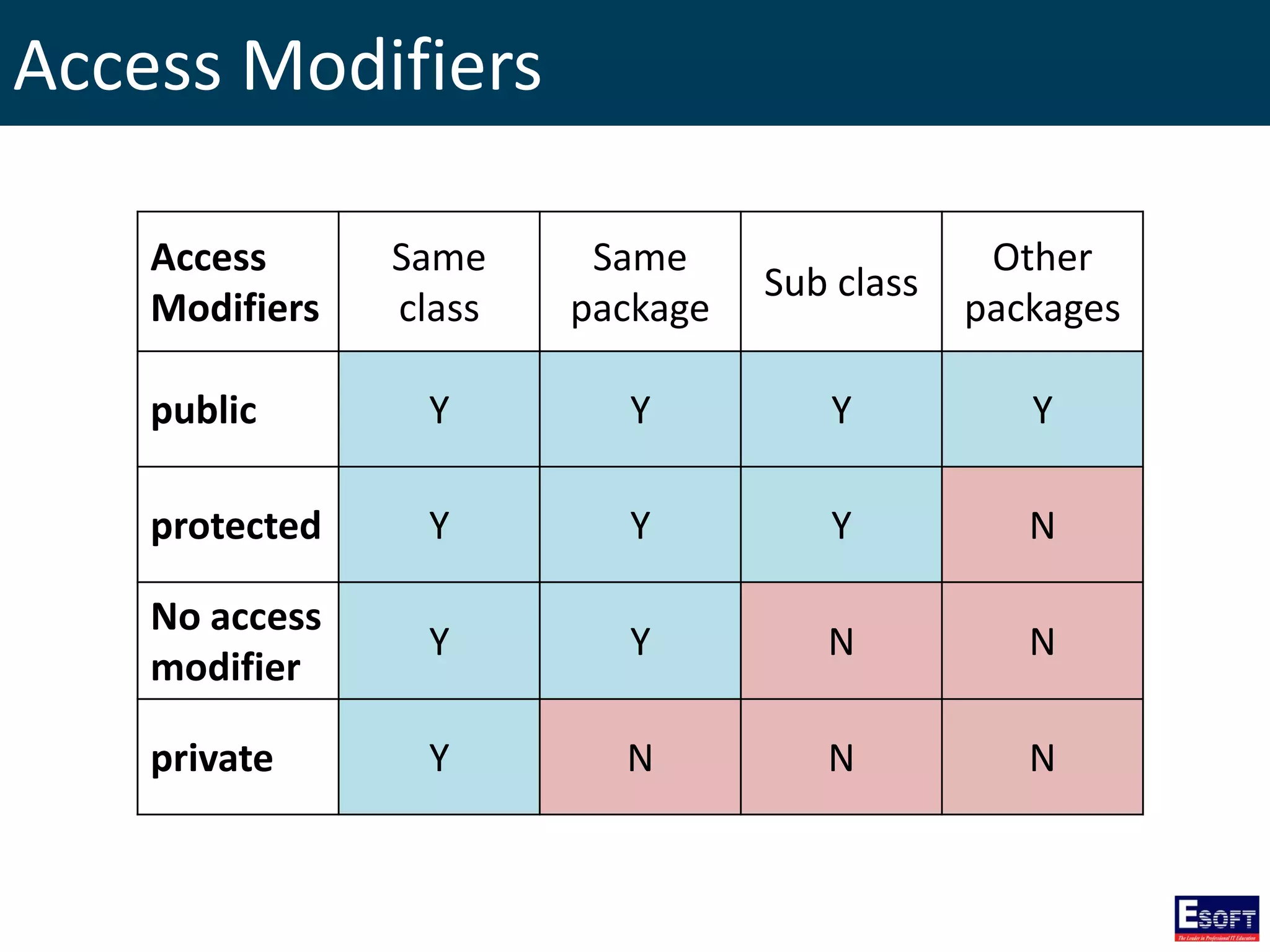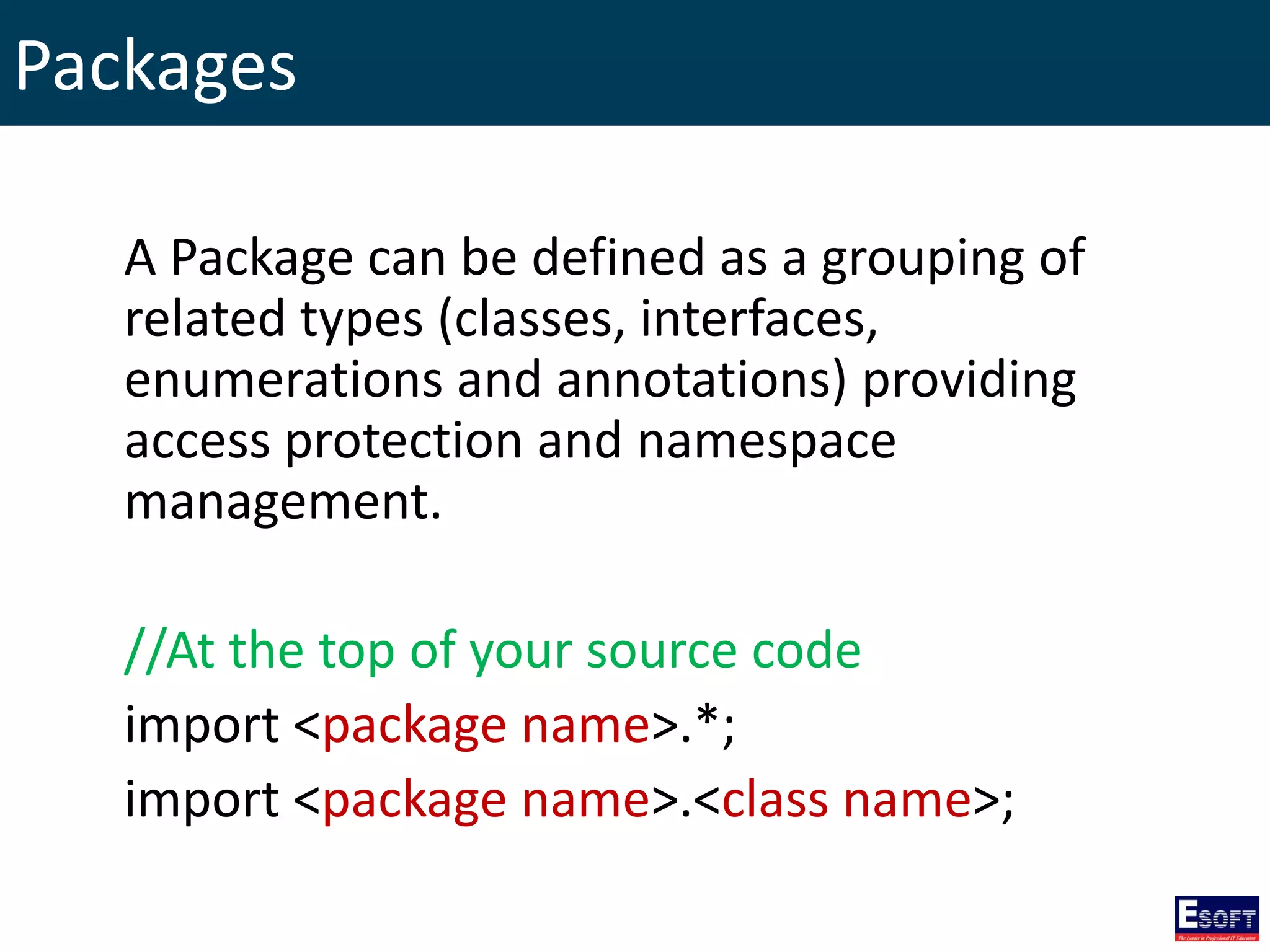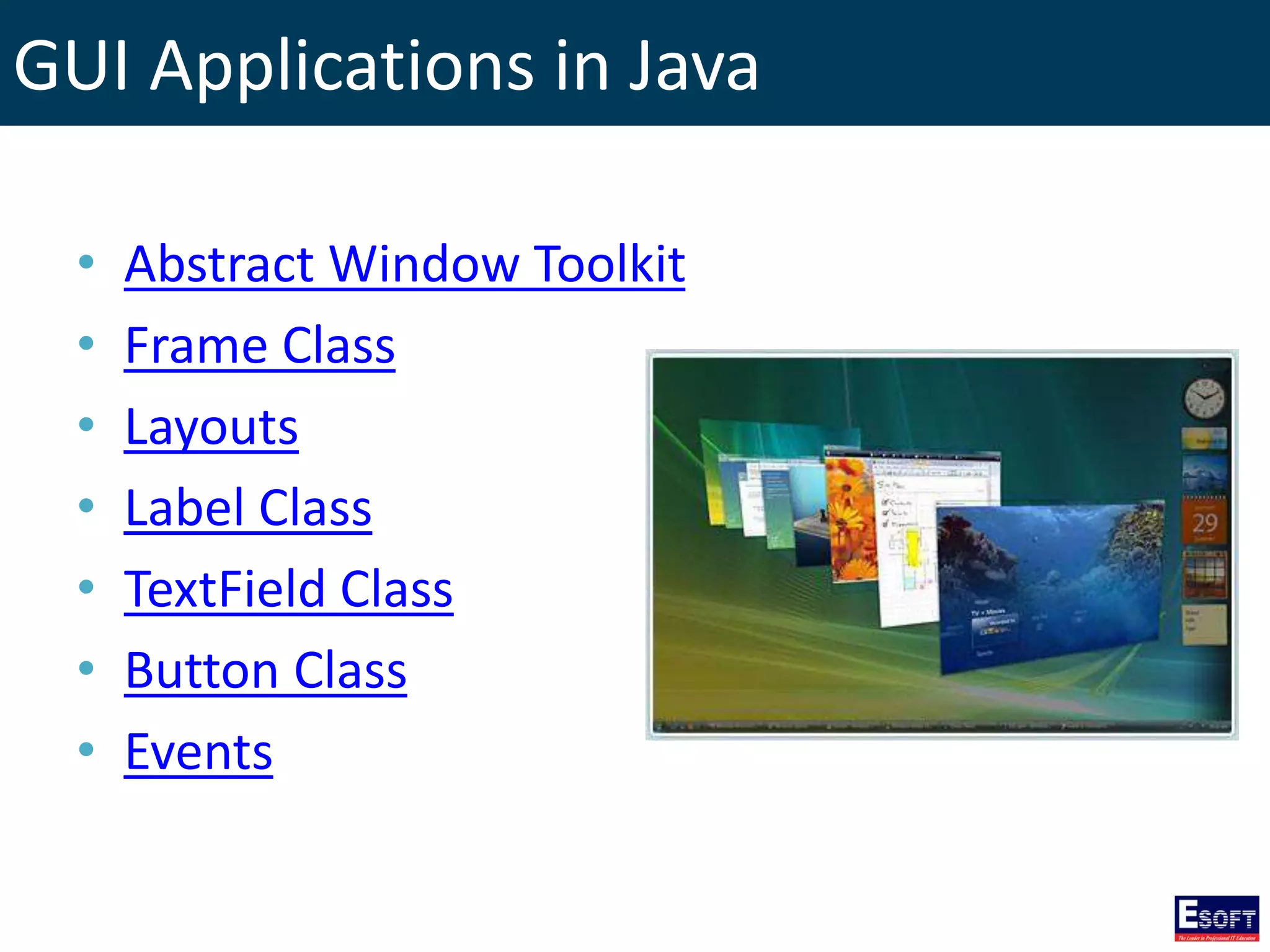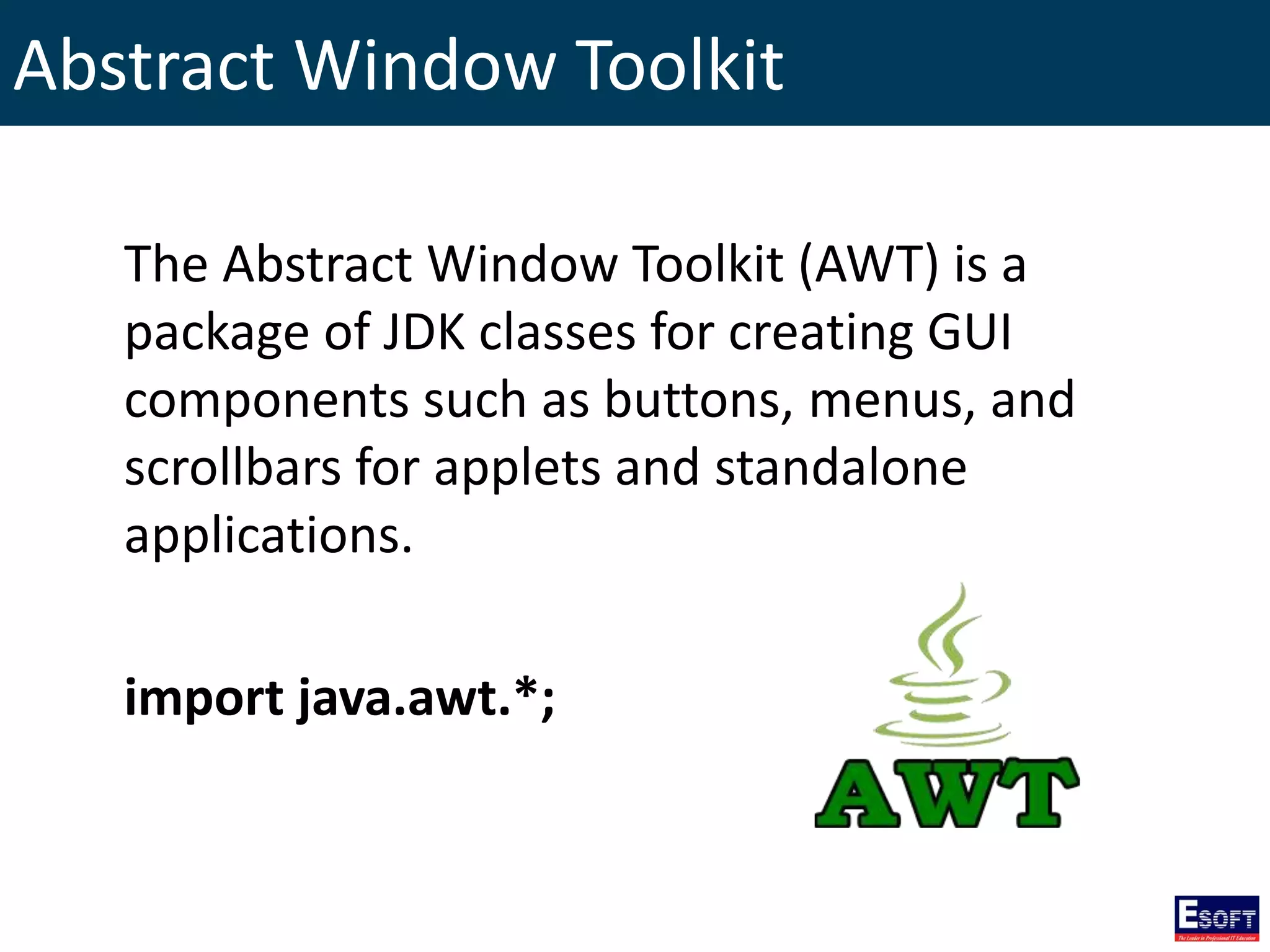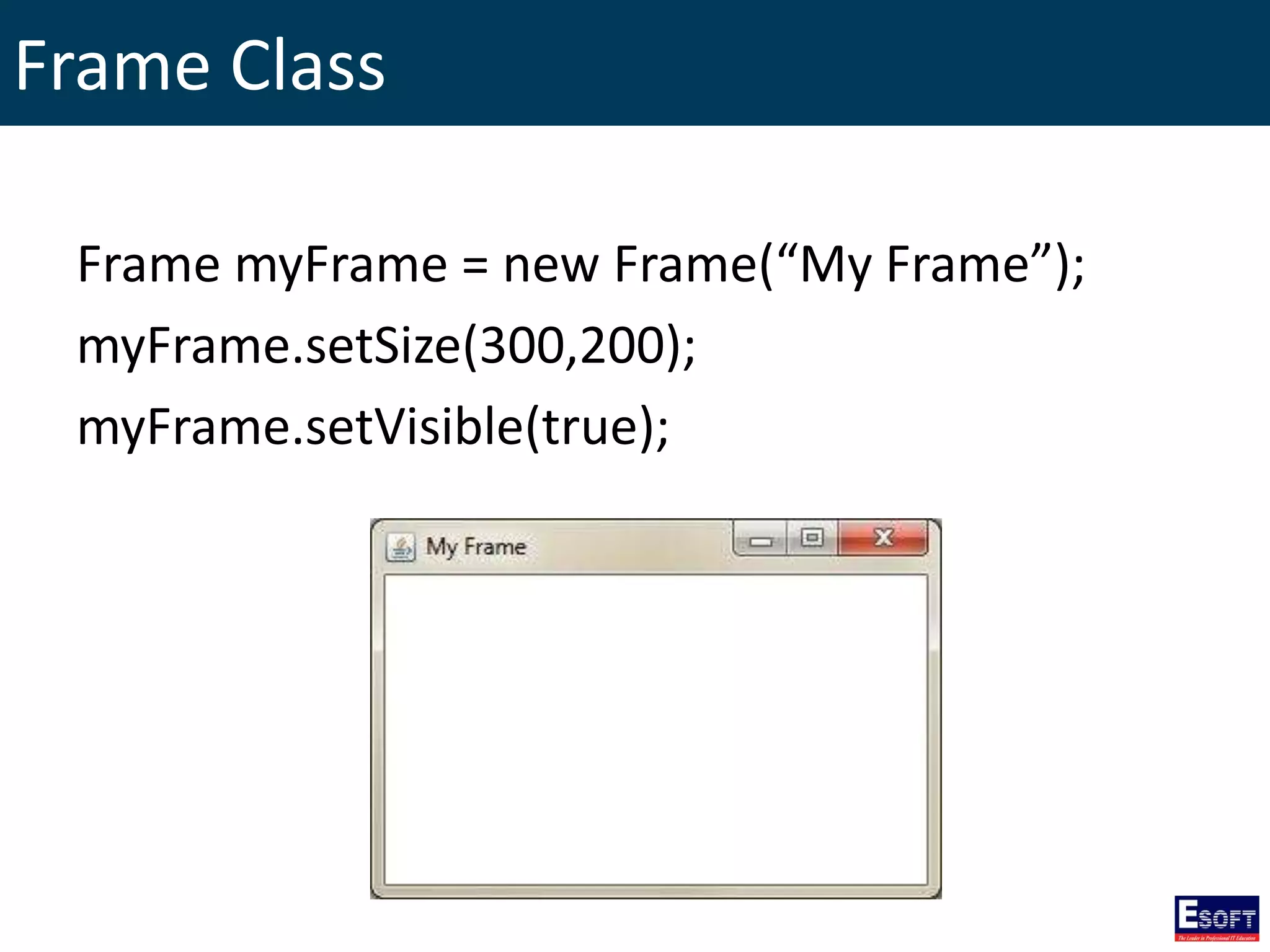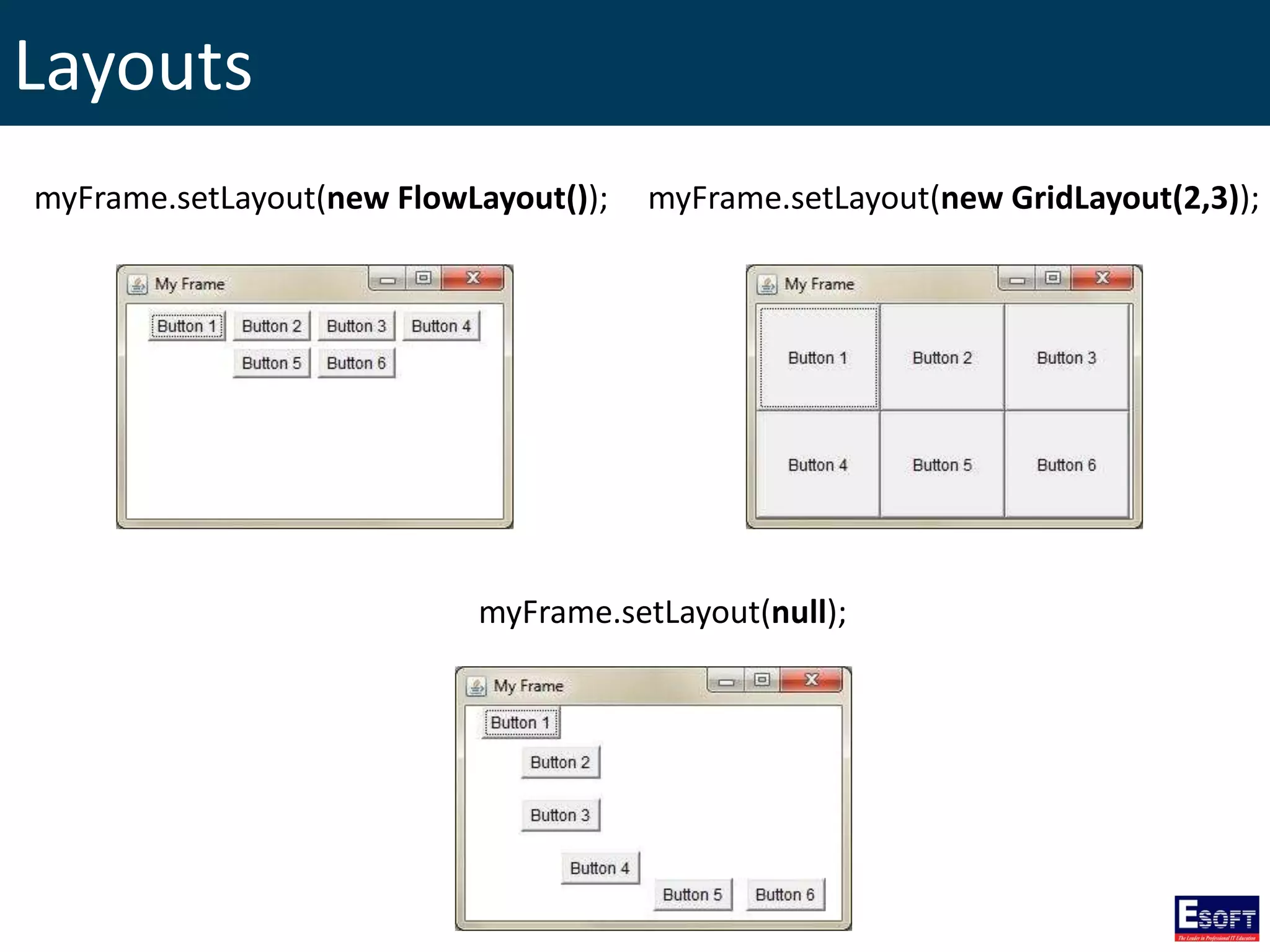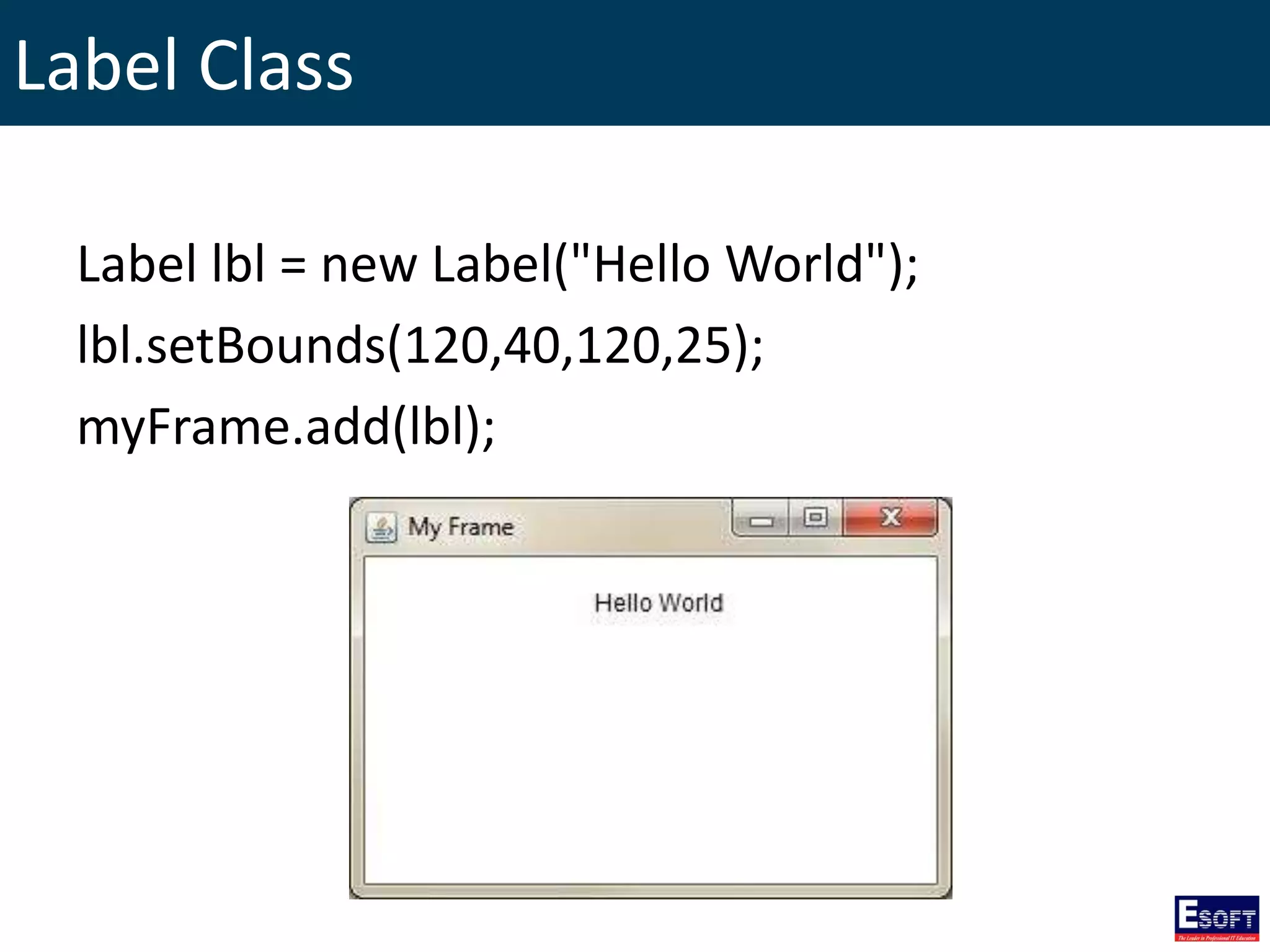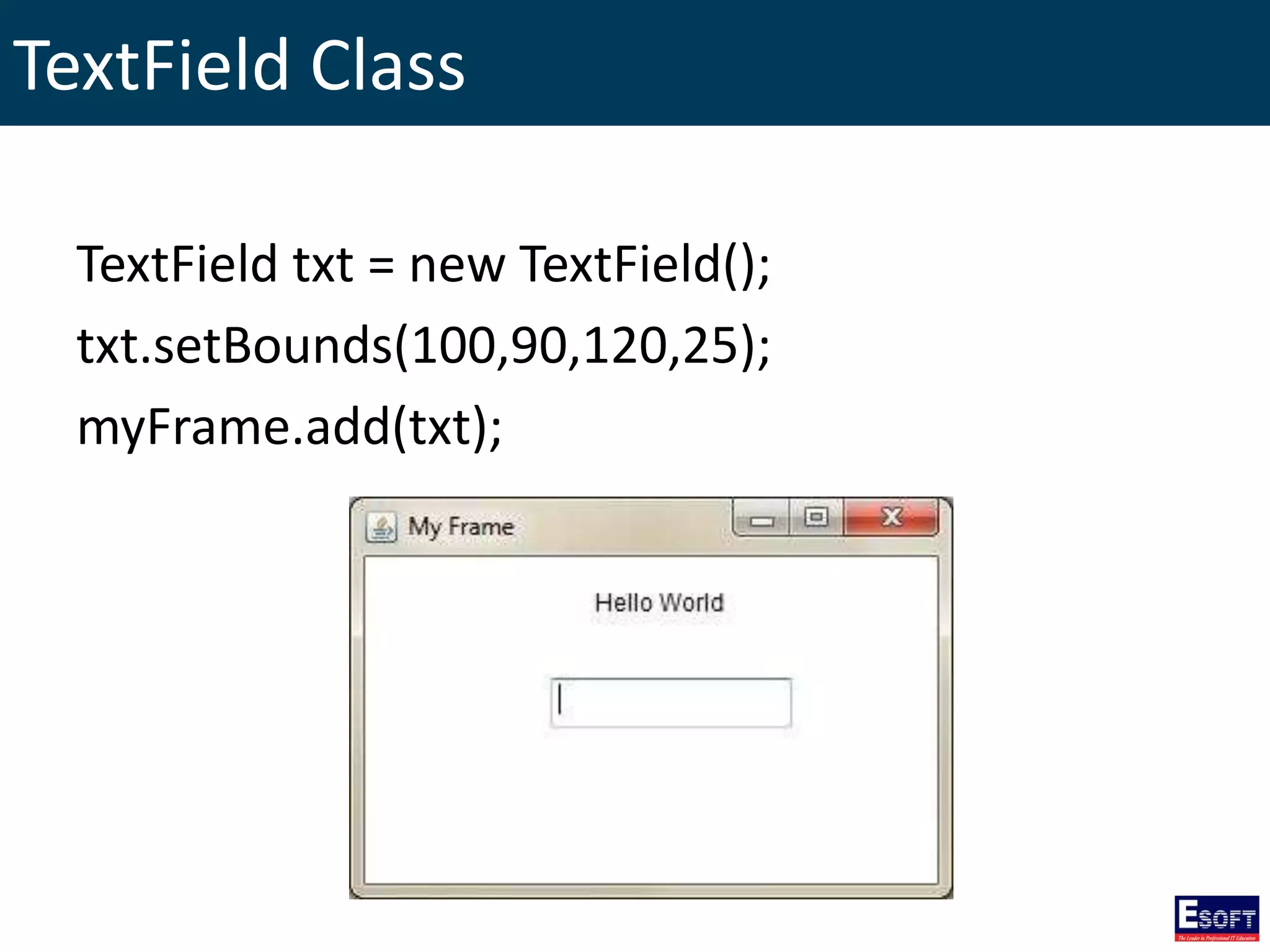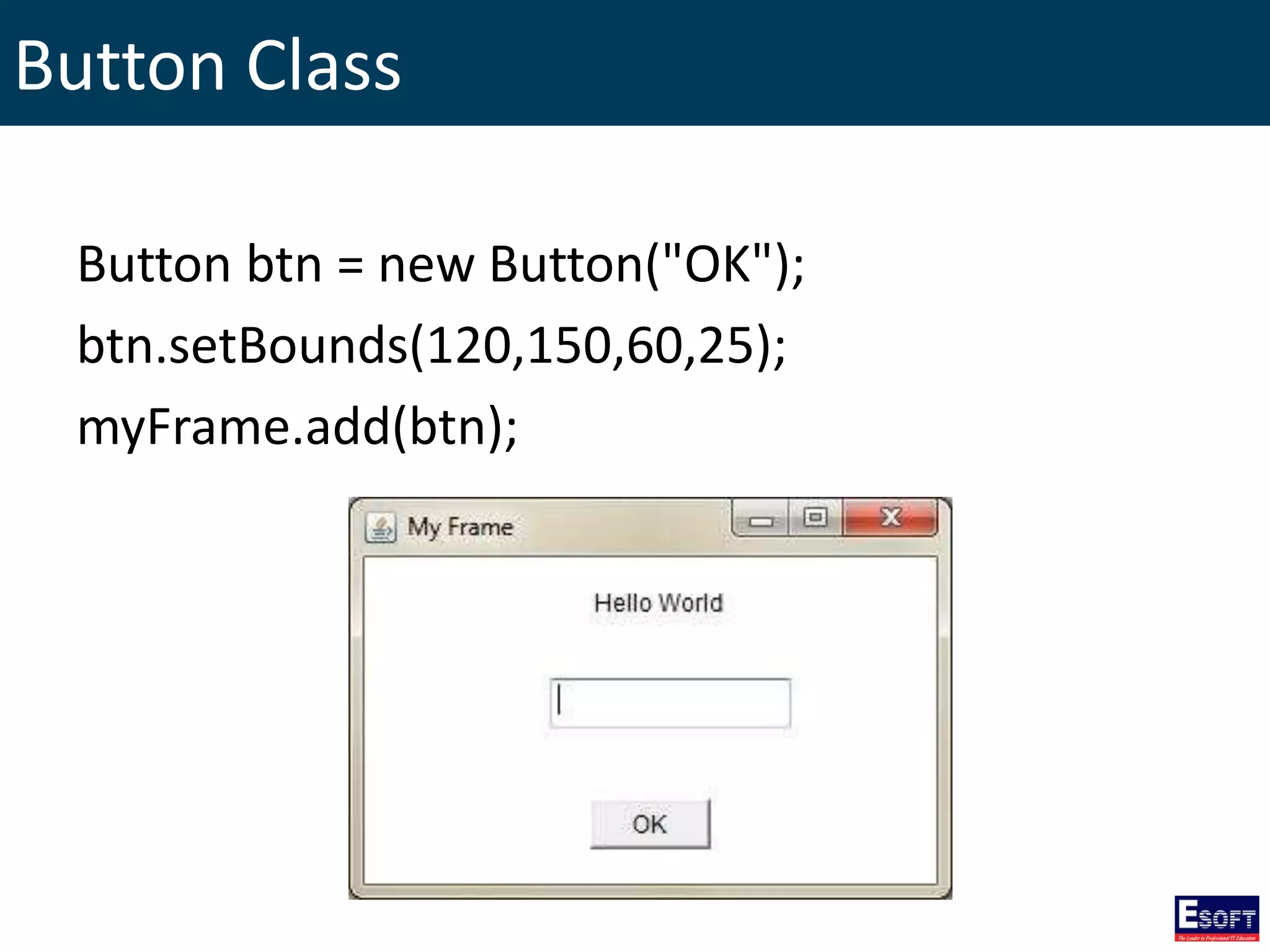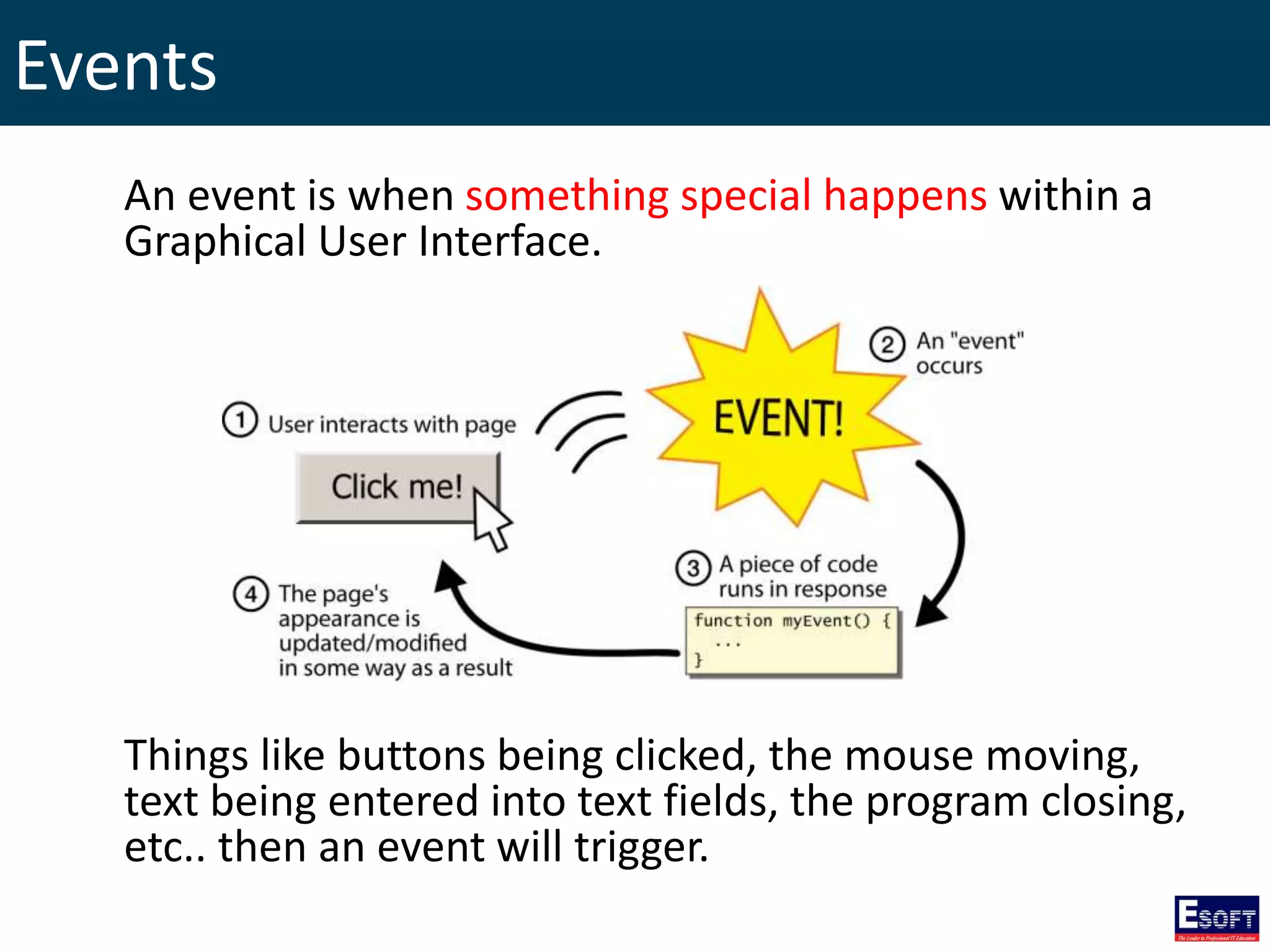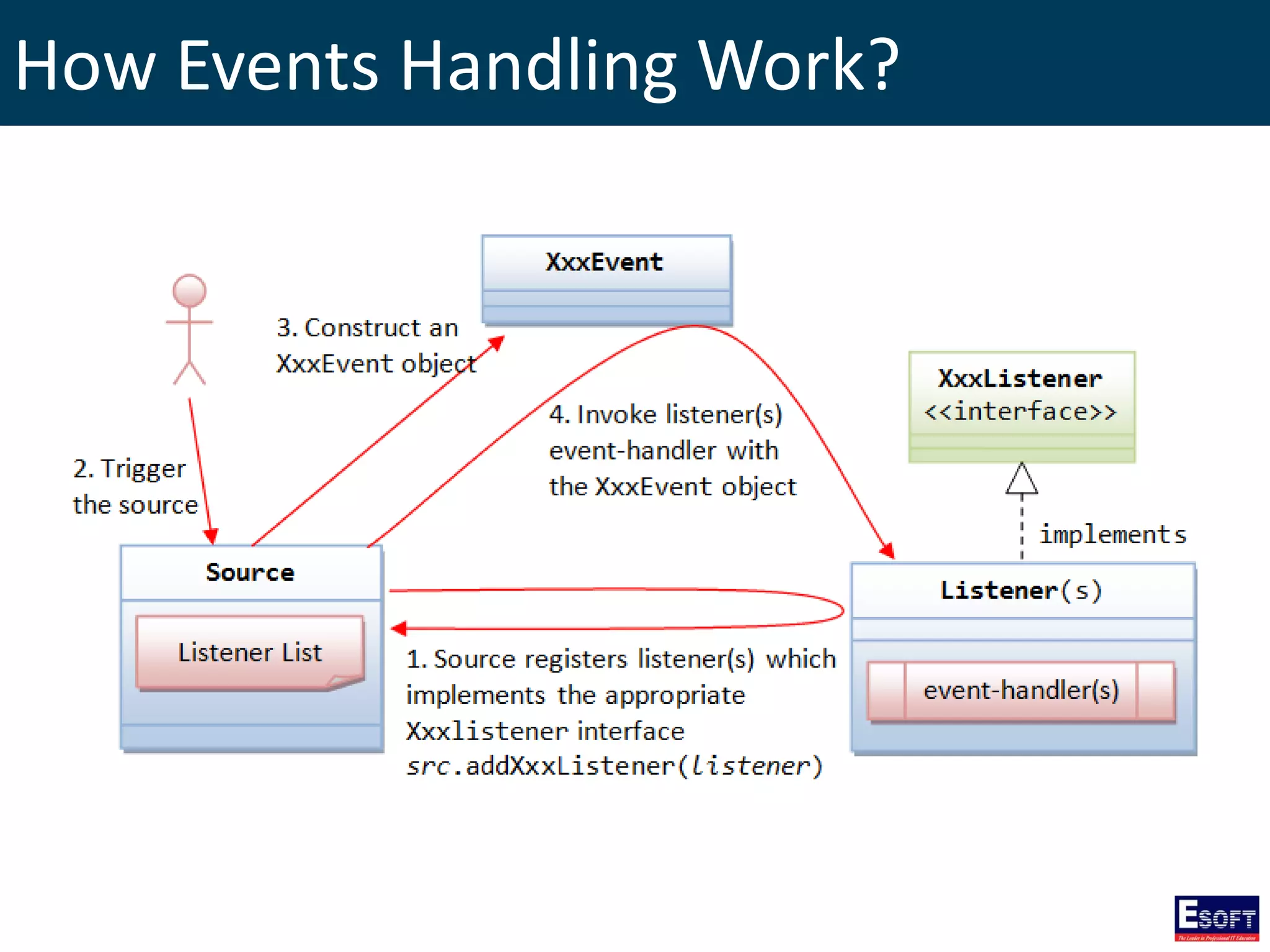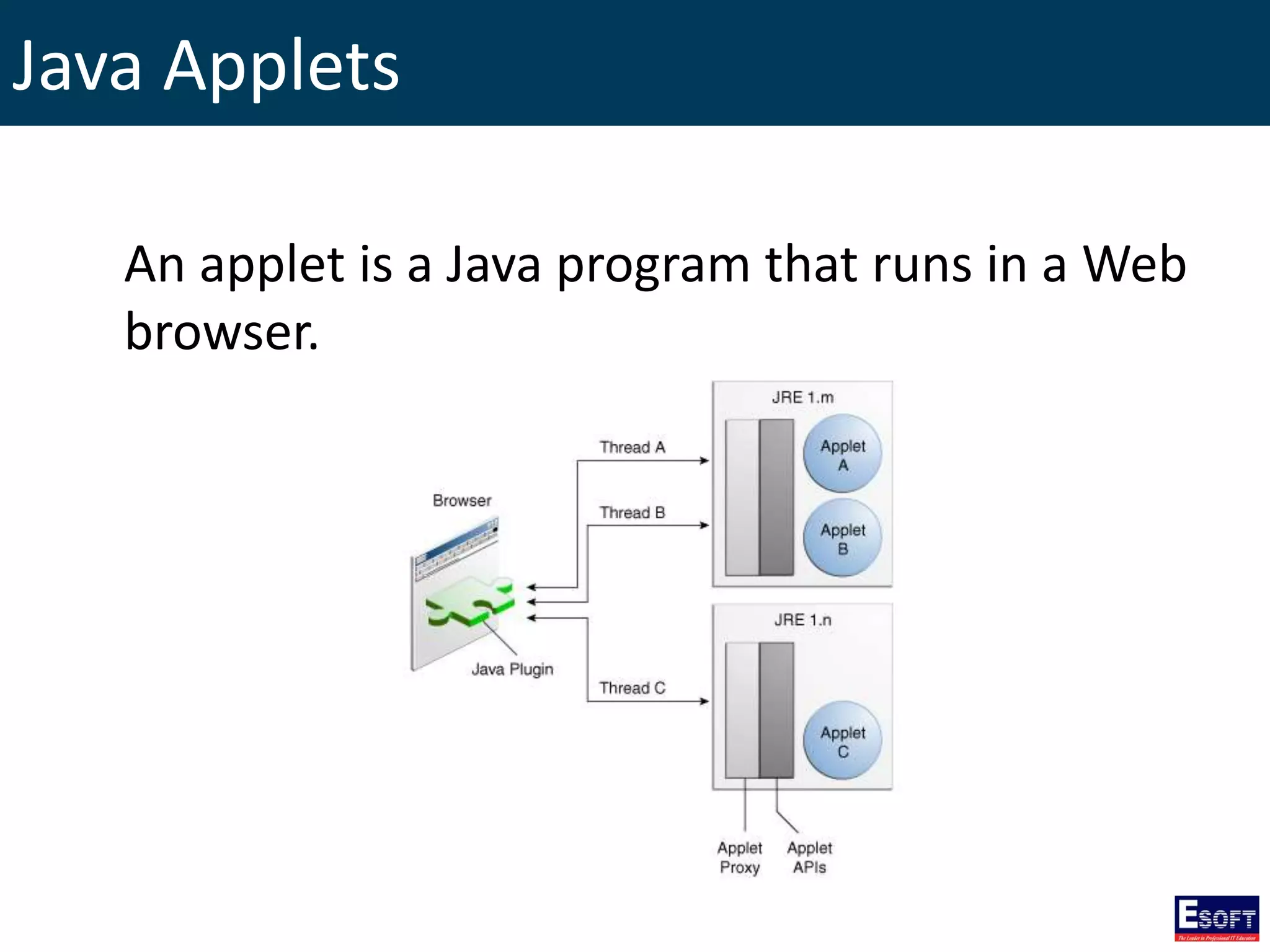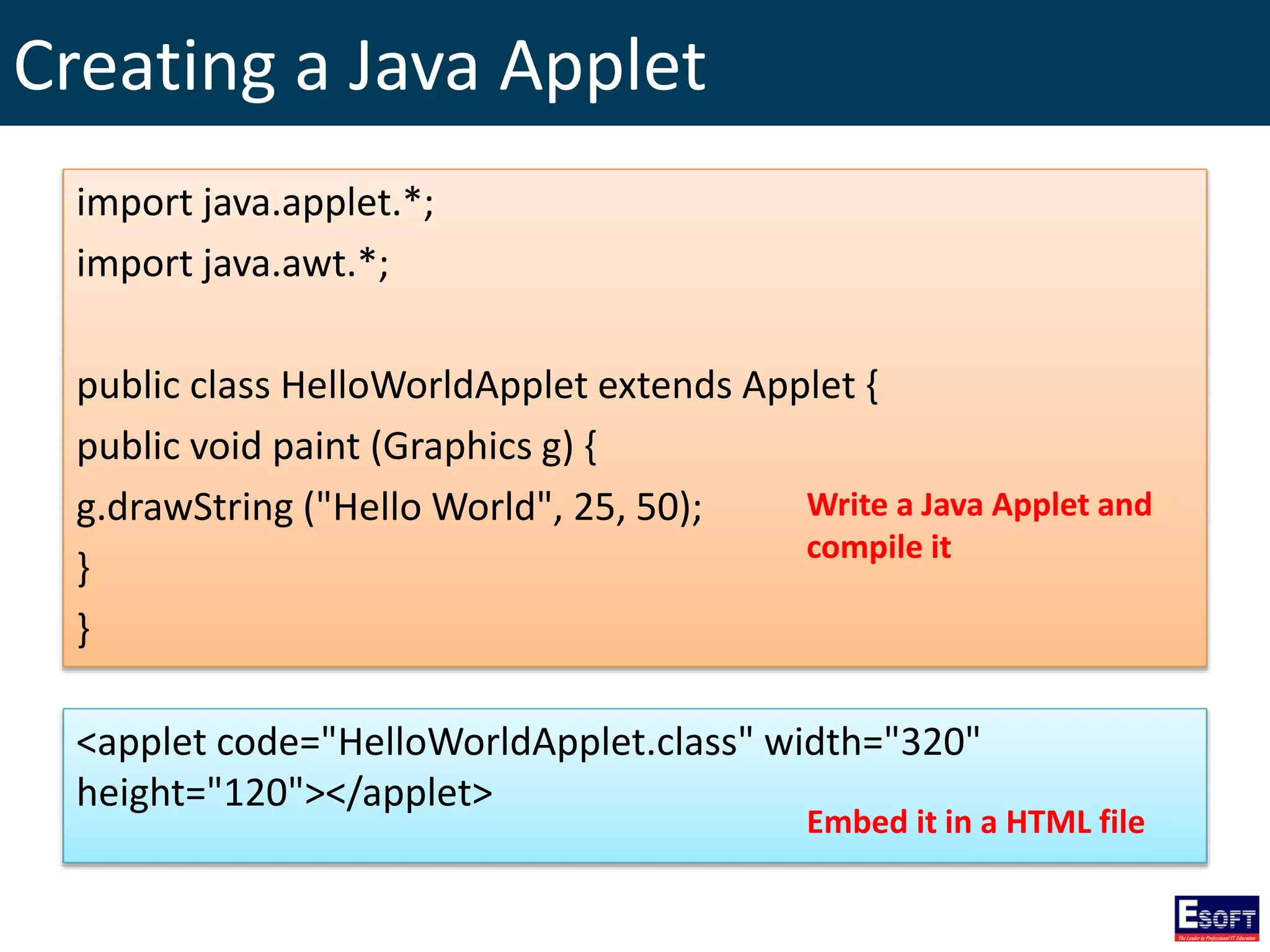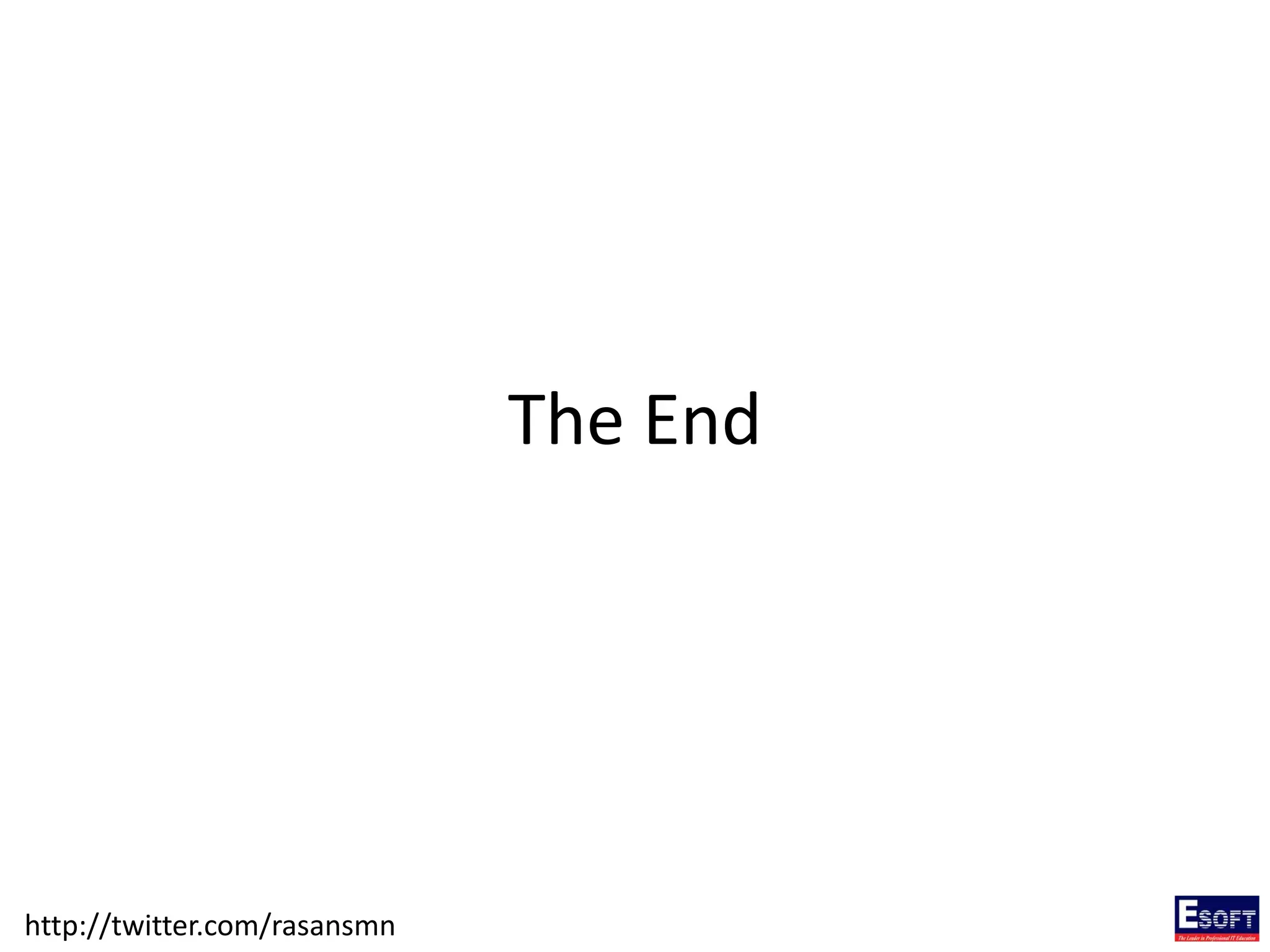The document provides a comprehensive guide to Java programming, covering topics such as introduction to Java, its features, programming basics, data types, control structures, and object-oriented concepts. It also includes practical examples and explanations of Java applications, GUI components, and applets. The content is structured to support learners in understanding and applying Java programming effectively.
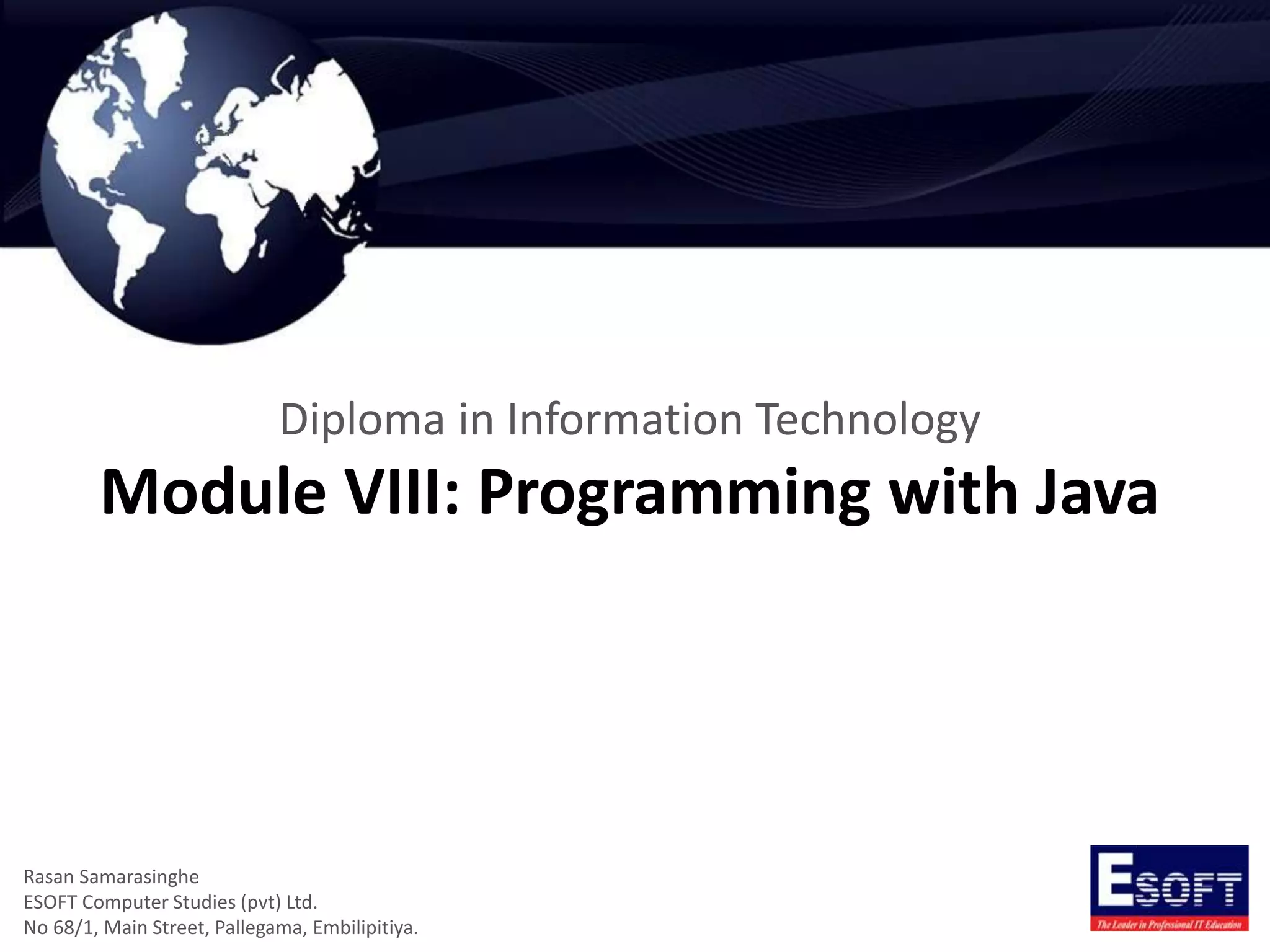
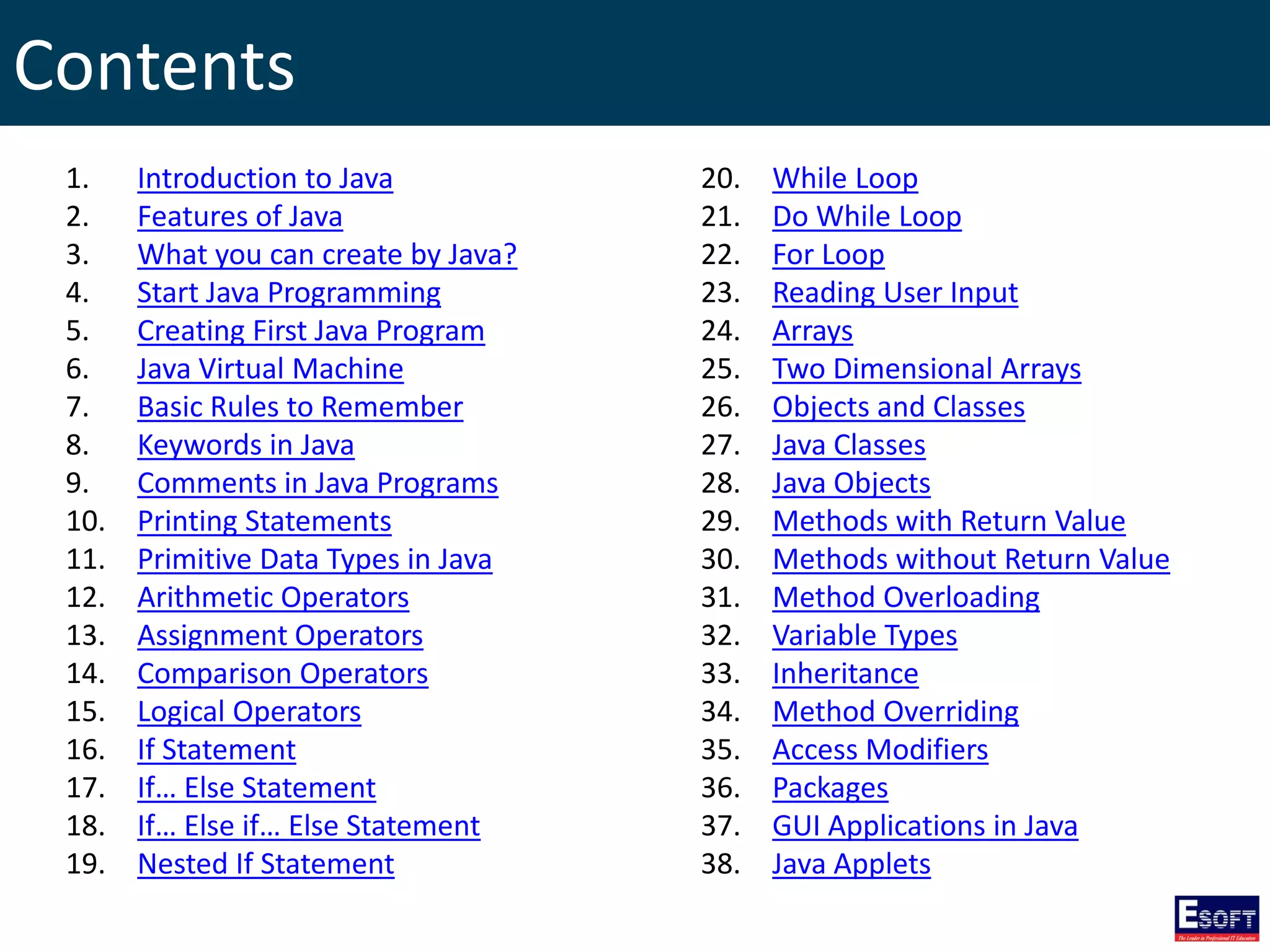
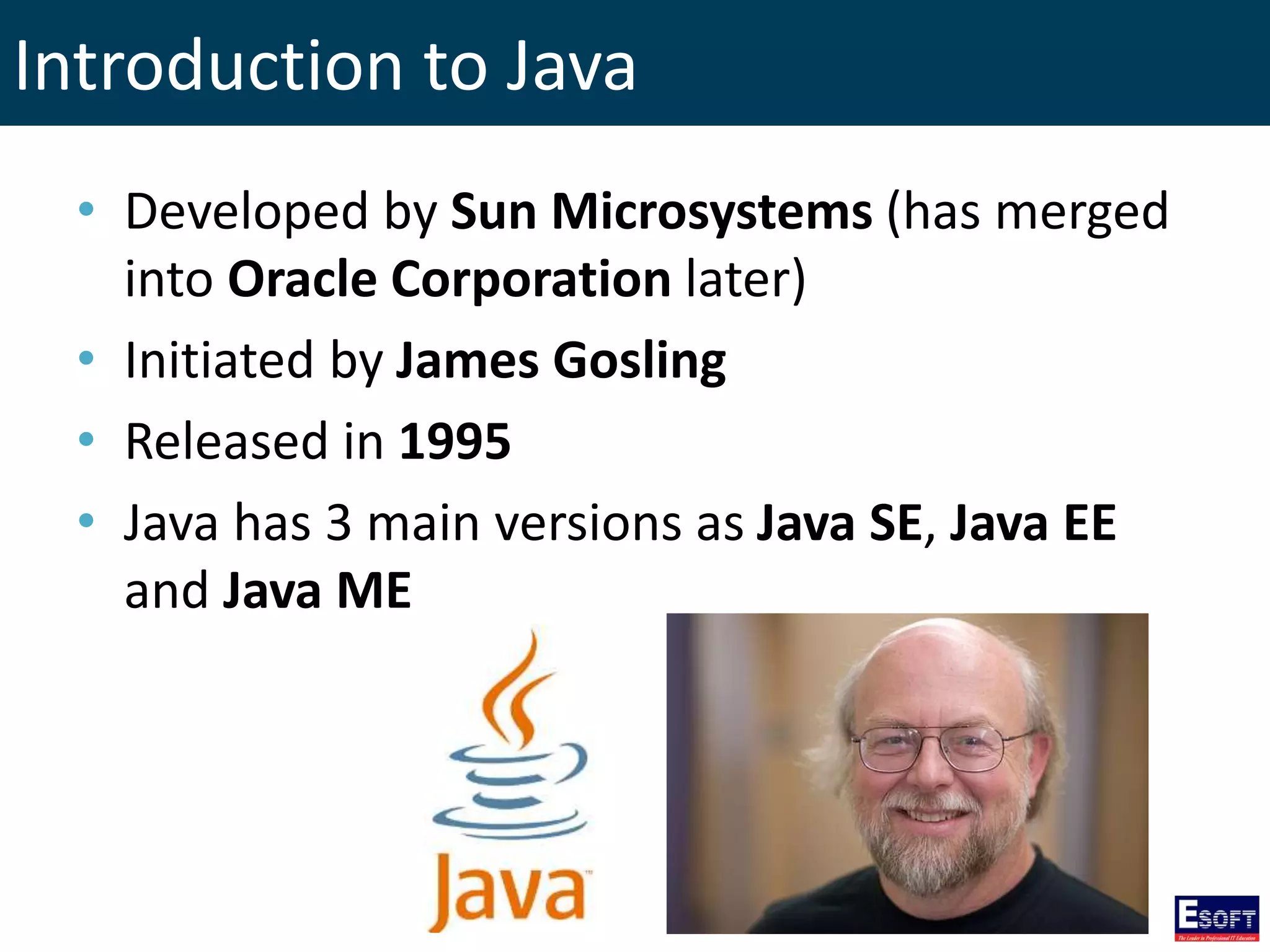
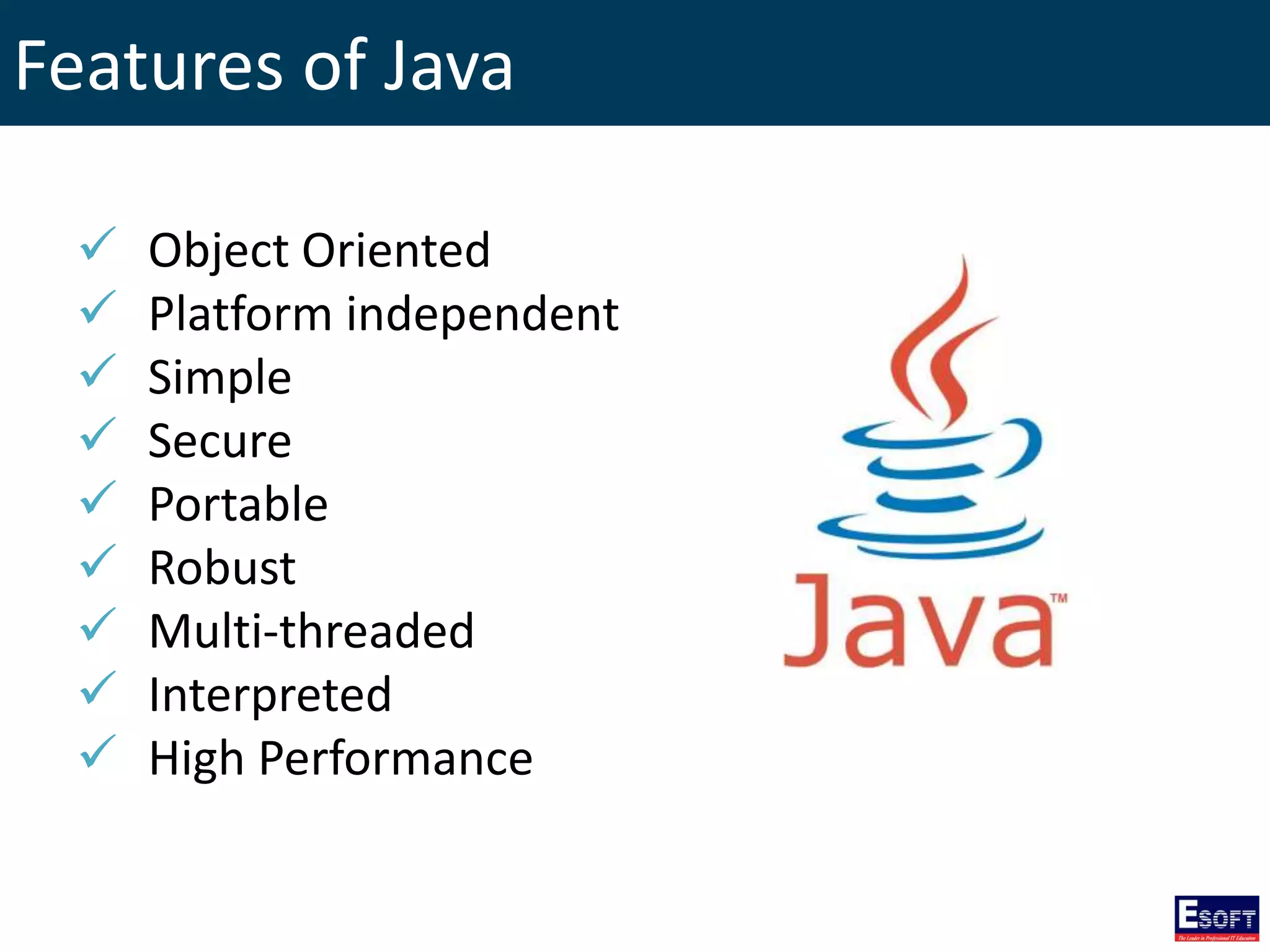
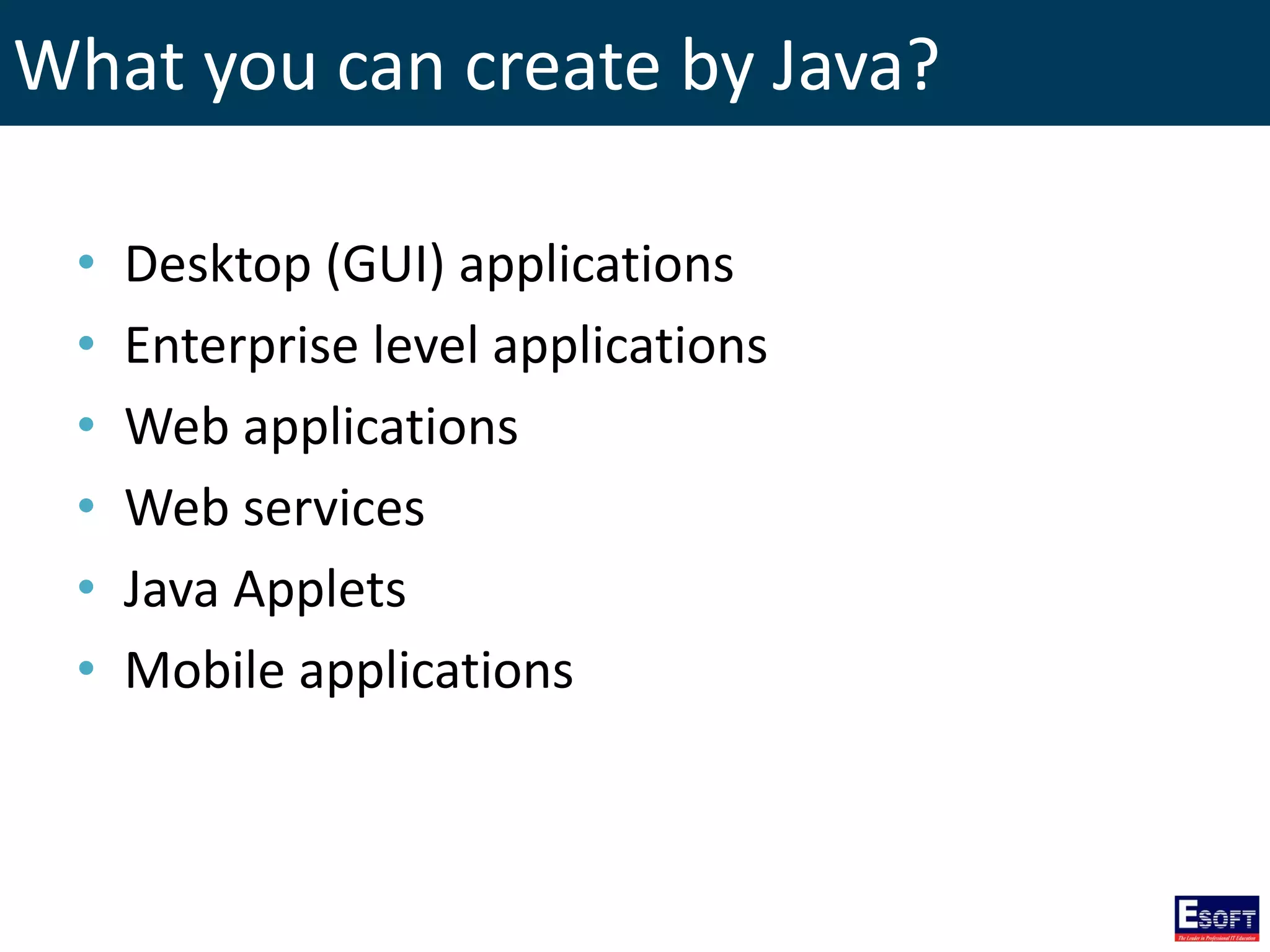
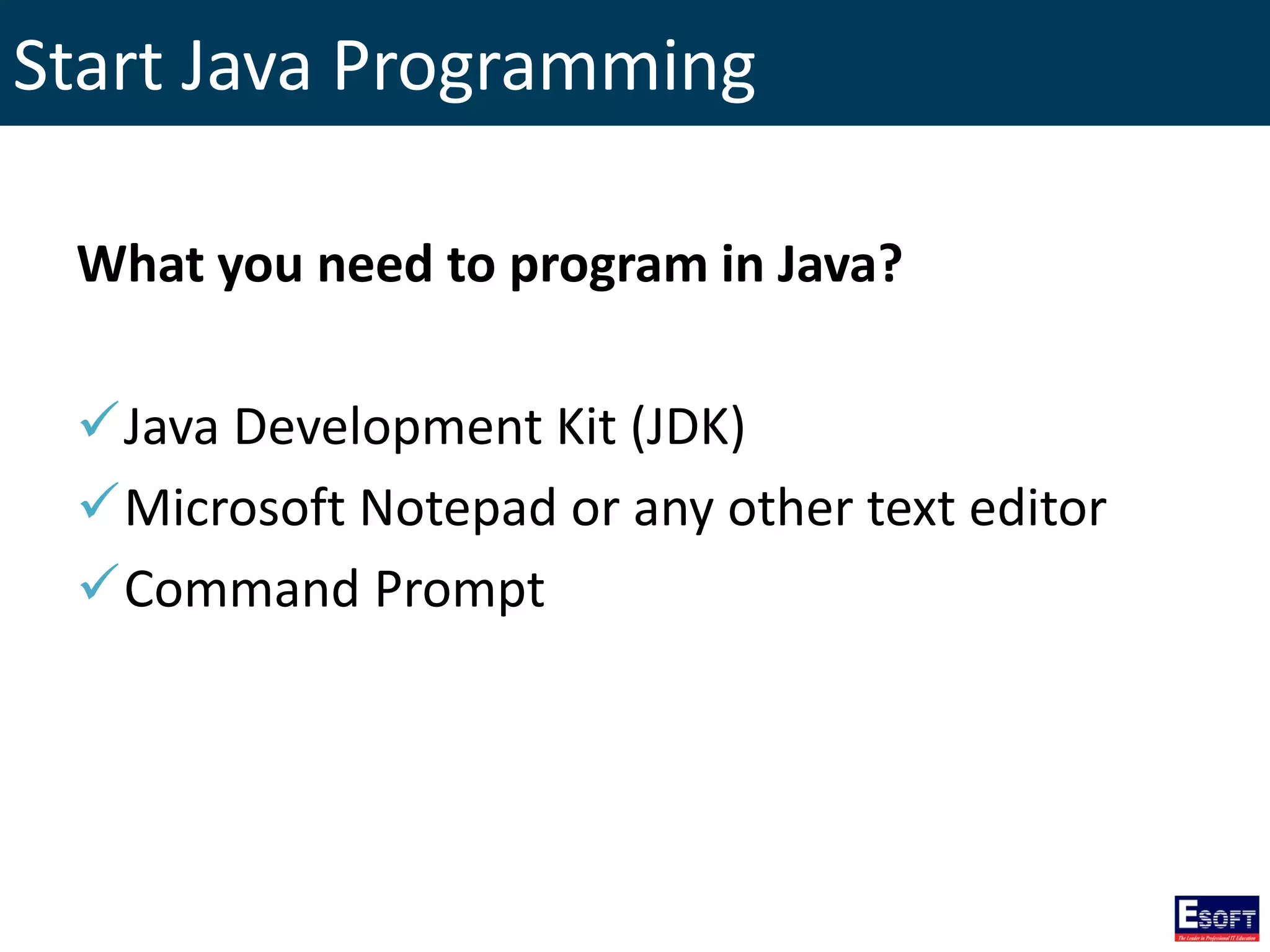
![Creating First Java Program
public class MyFirstApp{
public static void main(String[] args){
System.out.println("Hello World");
}
}
MyFirstApp.java](https://image.slidesharecdn.com/moduleviii-160810184317/75/DITEC-Programming-with-Java-7-2048.jpg)
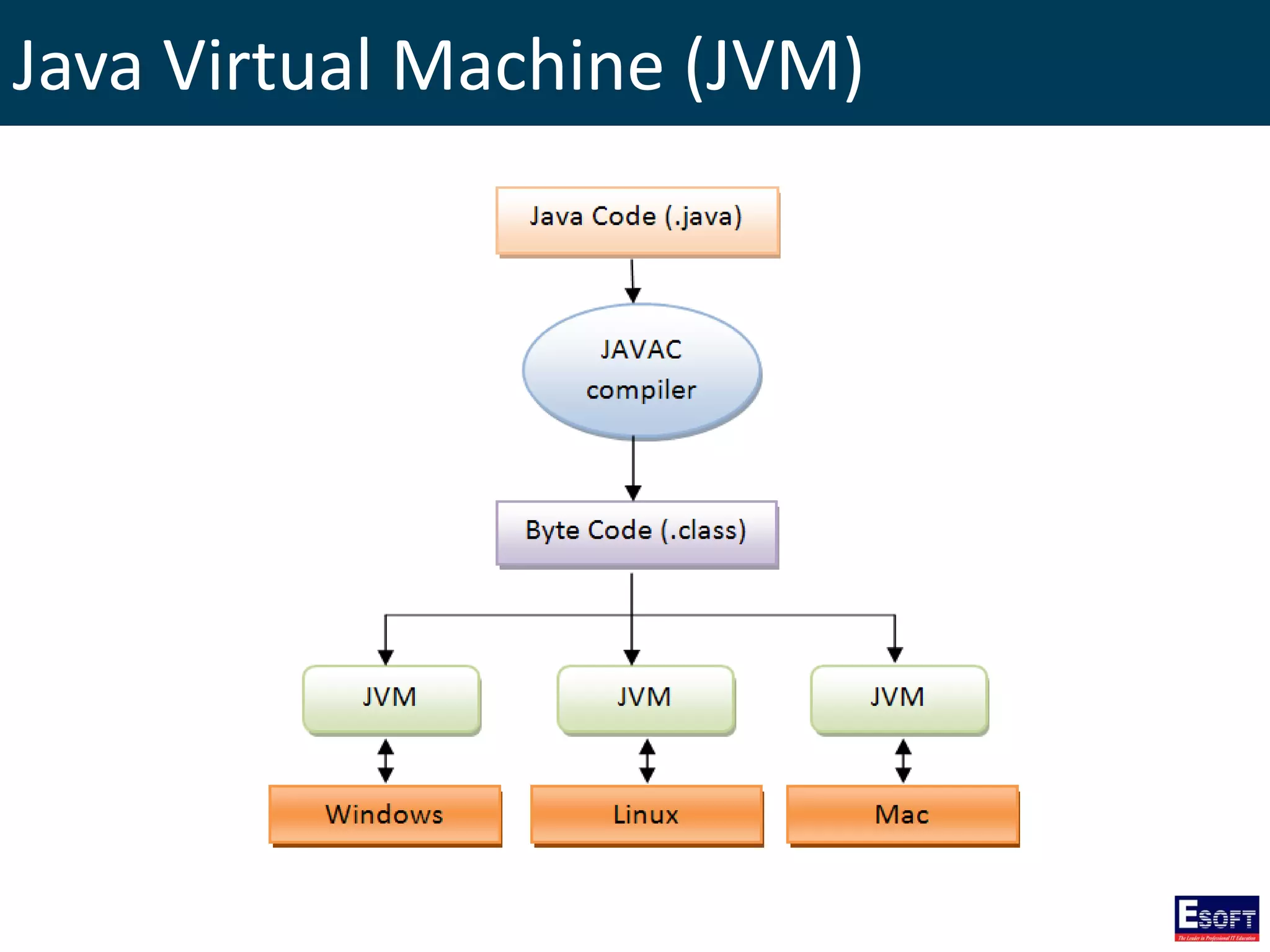
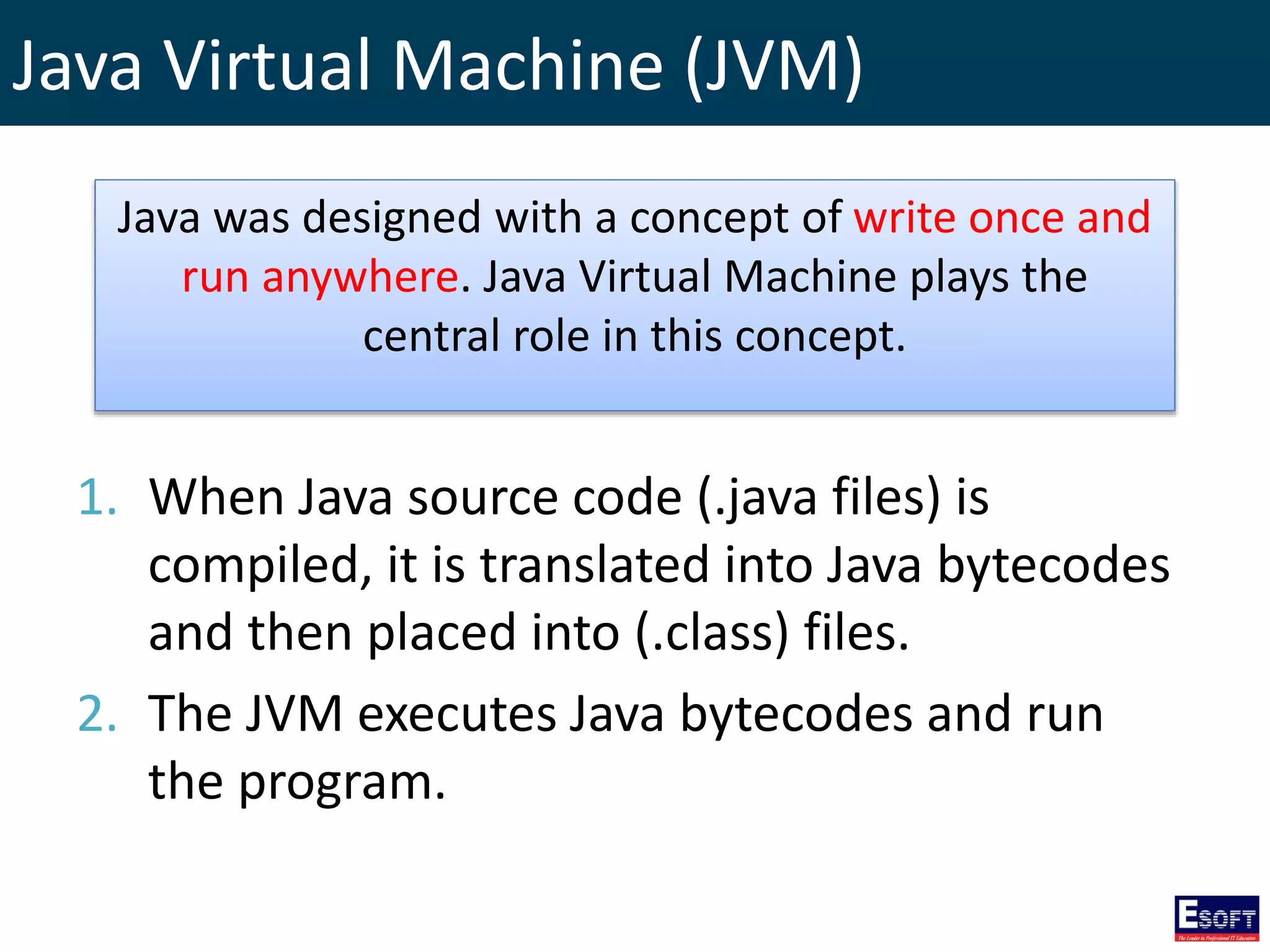
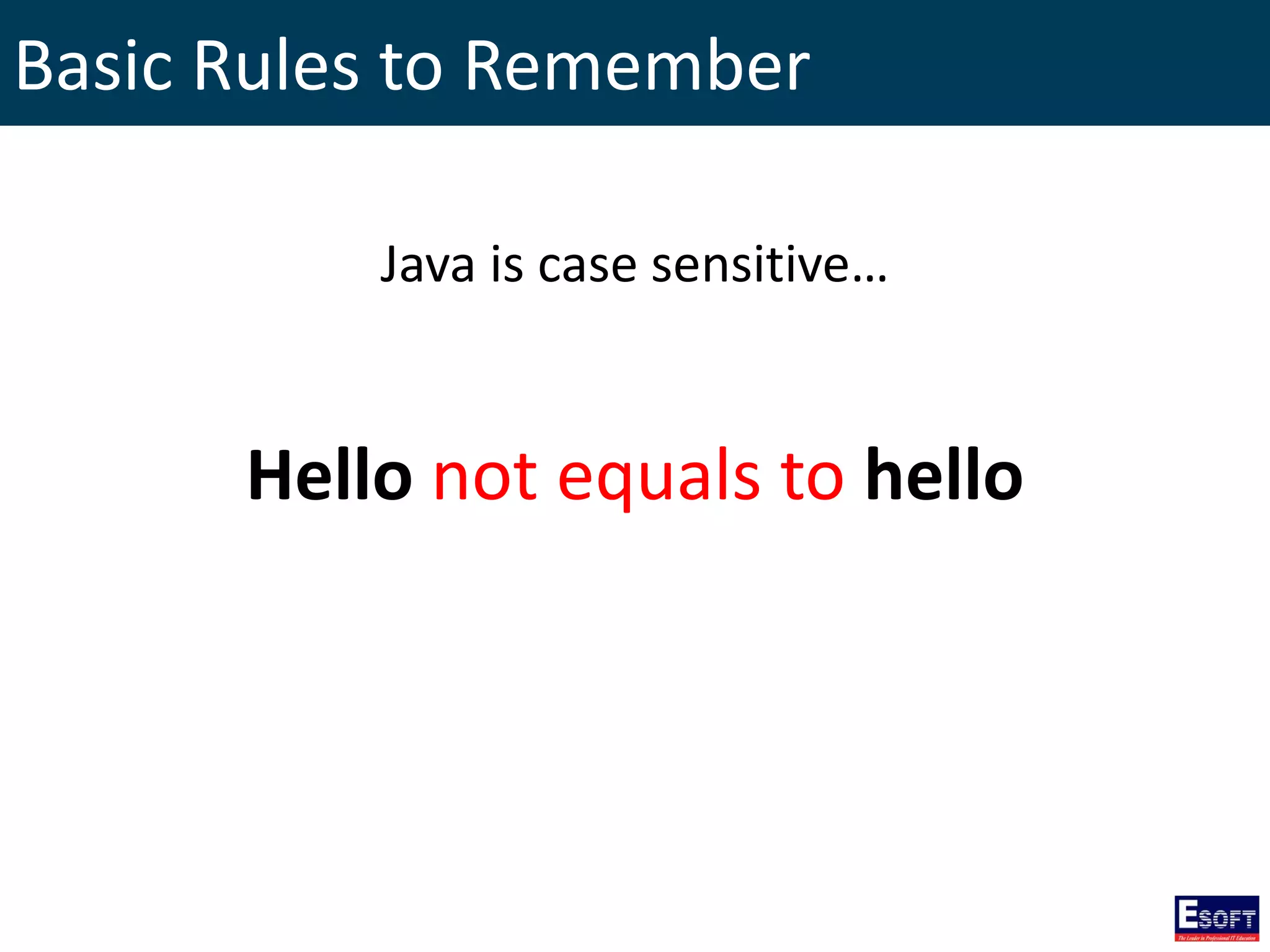
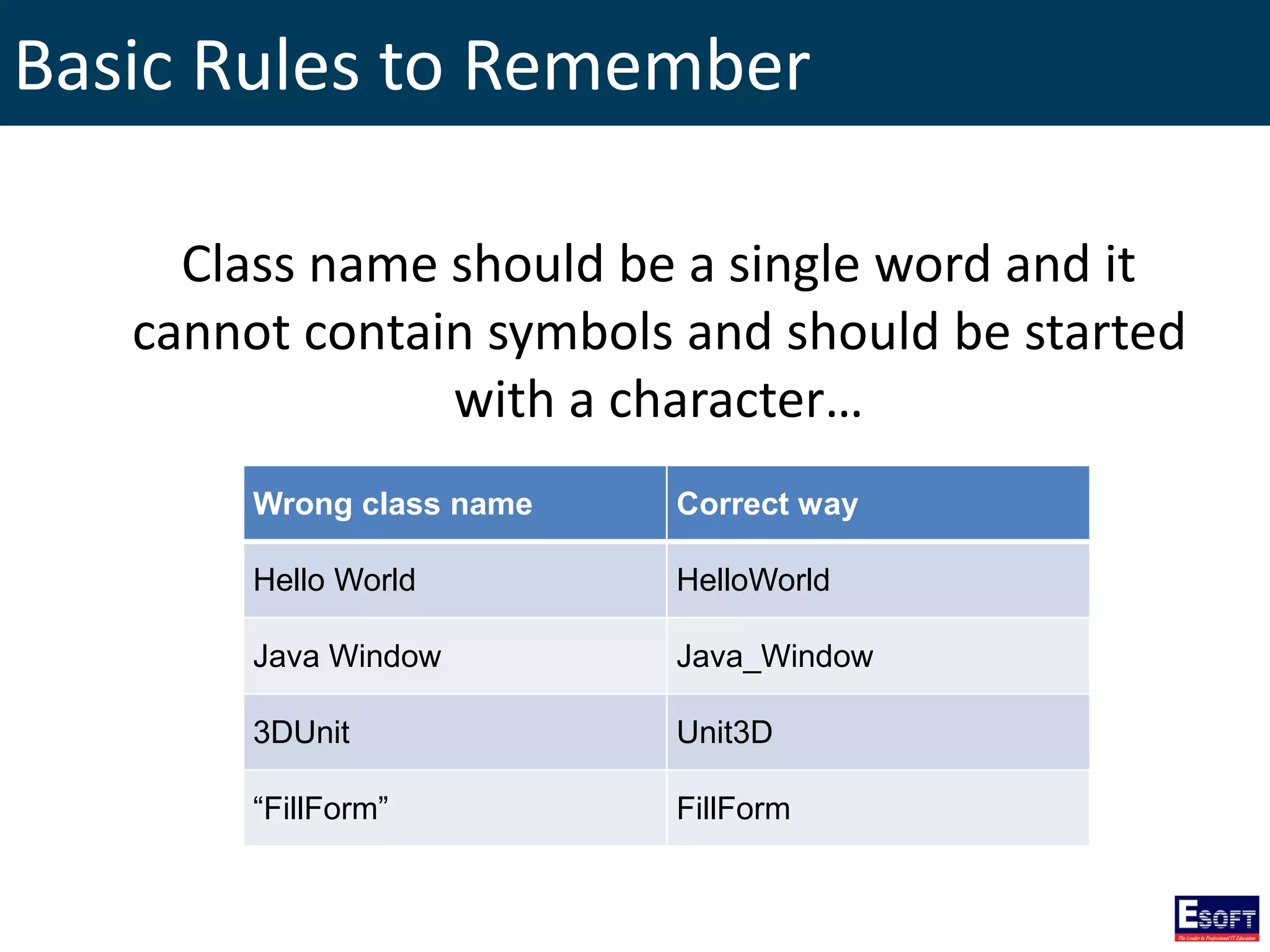
![public class MyFirstApp{
public static void main(String[] args){
System.out.println("Hello World");
}
}
Basic Rules to Remember
Name of the program file should exactly match
the class name...
Save as MyFirstApp.java](https://image.slidesharecdn.com/moduleviii-160810184317/75/DITEC-Programming-with-Java-12-2048.jpg)
![Basic Rules to Remember
Main method which is a mandatory part of
every java program…
public class MyFirstApp{
public static void main(String[] args){
System.out.println("Hello World");
}
}](https://image.slidesharecdn.com/moduleviii-160810184317/75/DITEC-Programming-with-Java-13-2048.jpg)
![Basic Rules to Remember
Tokens must be separated by Whitespaces
Except ( ) ; { } . [ ] + - * /
public class MyFirstApp{
public static void main(String[] args){
System.out.println("Hello World");
}
}](https://image.slidesharecdn.com/moduleviii-160810184317/75/DITEC-Programming-with-Java-14-2048.jpg)
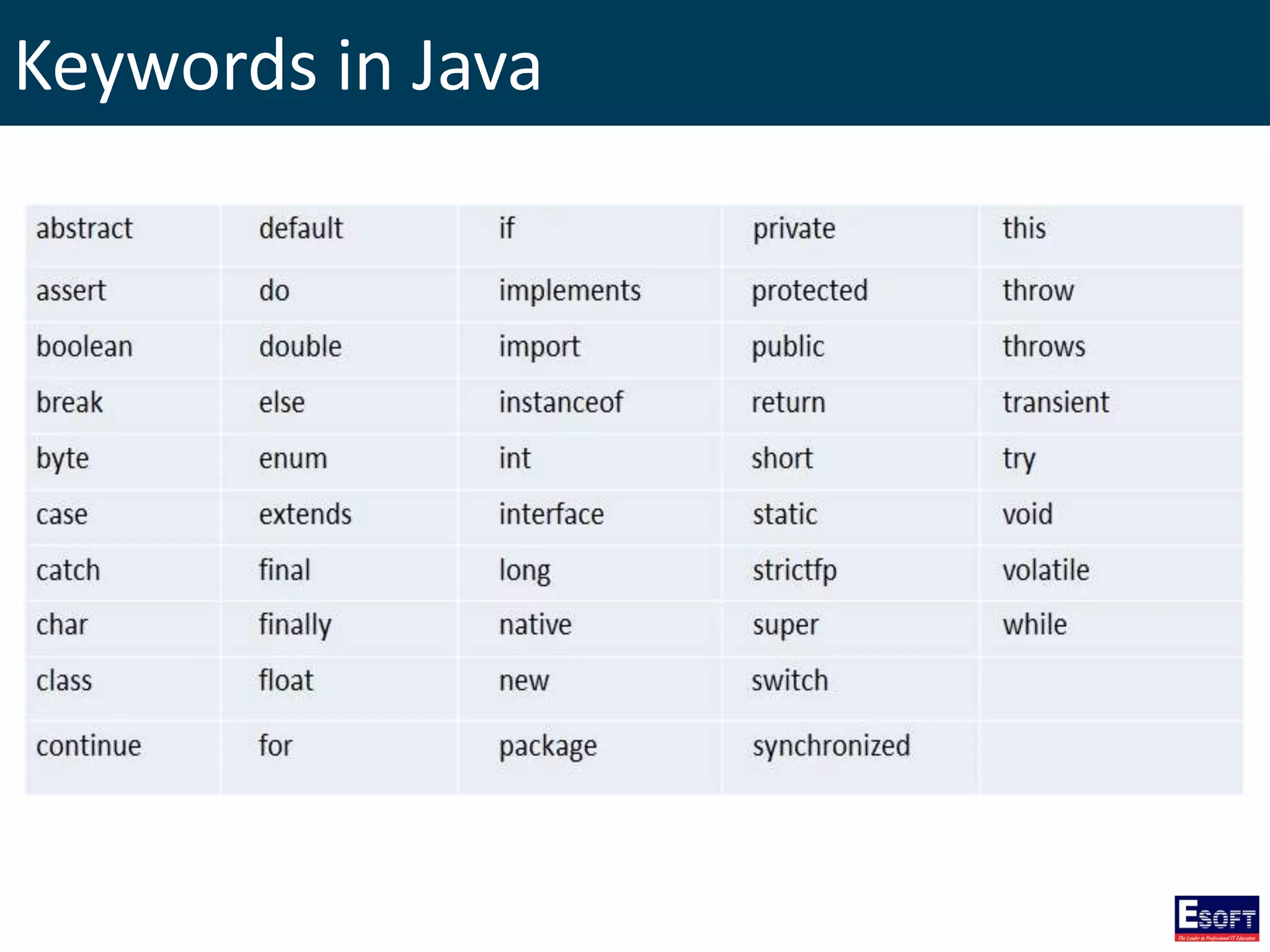
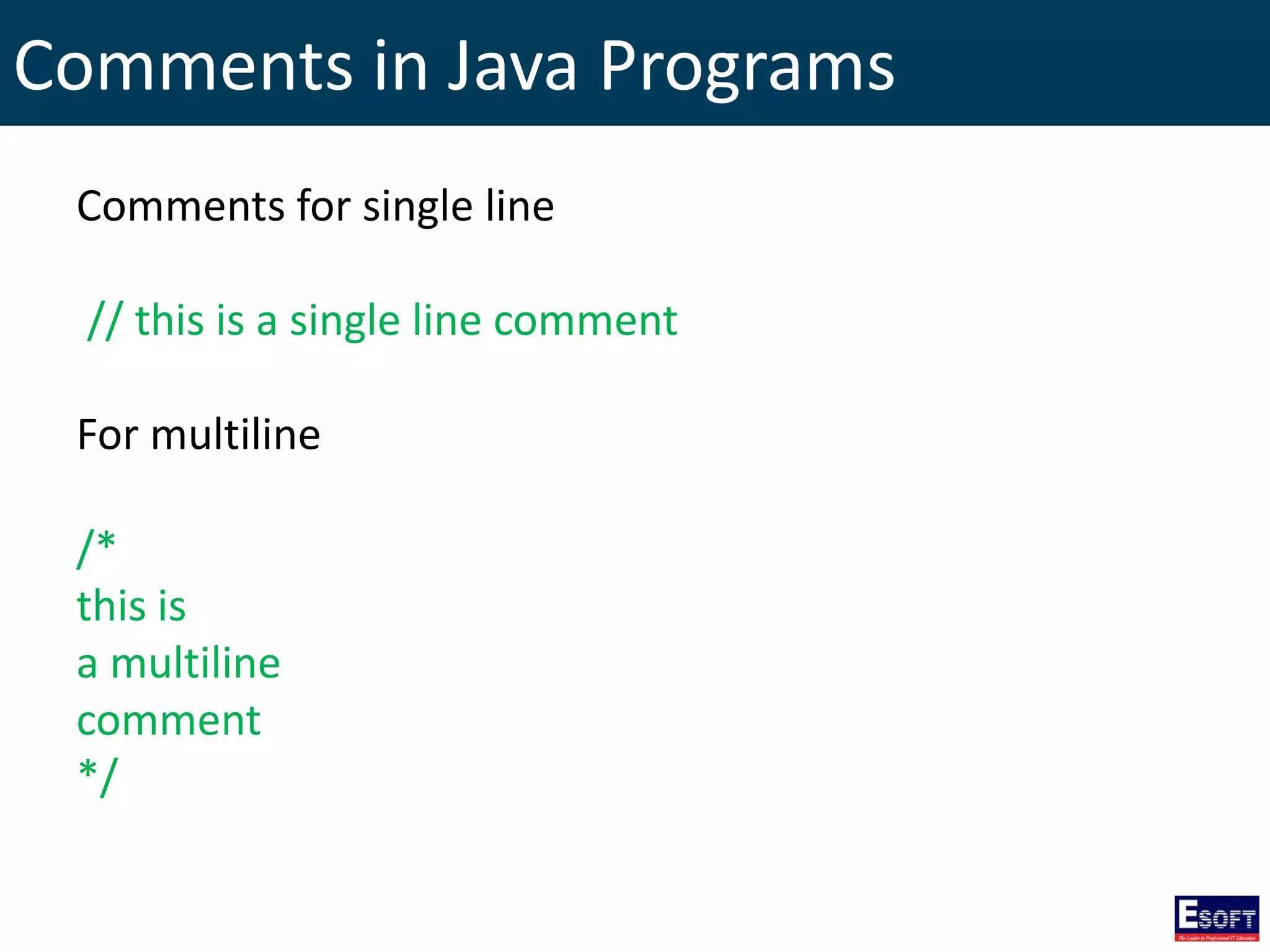
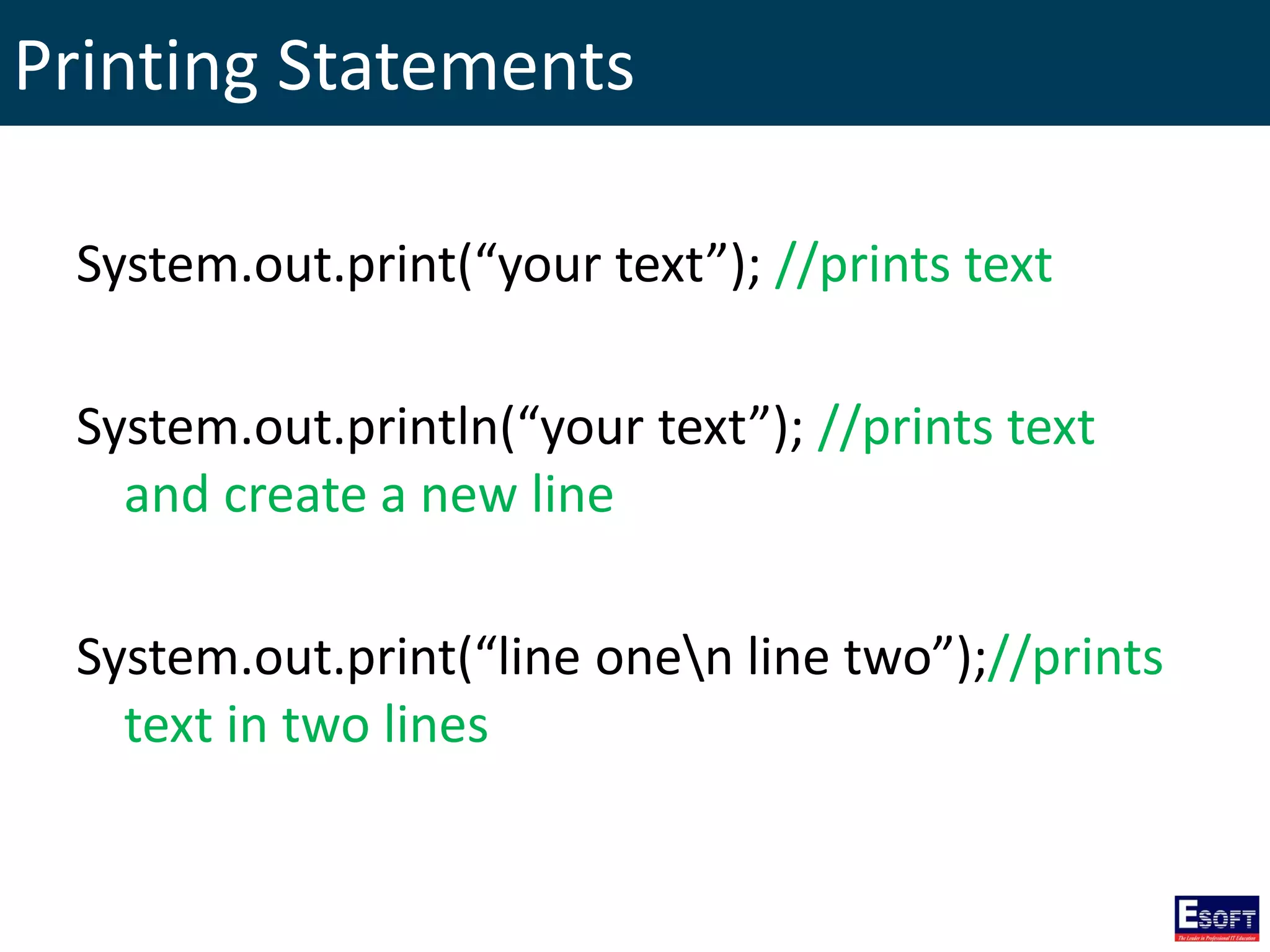
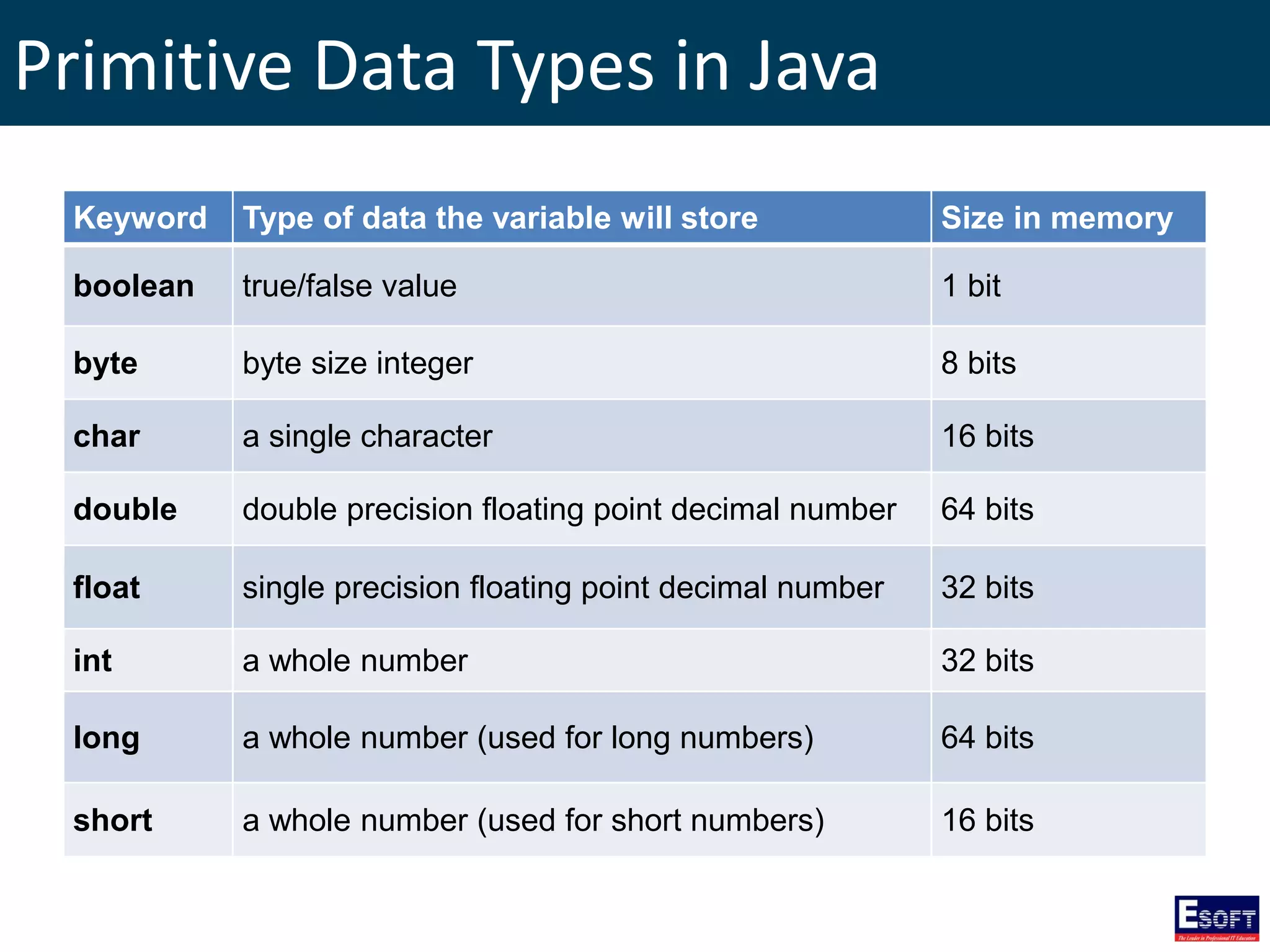
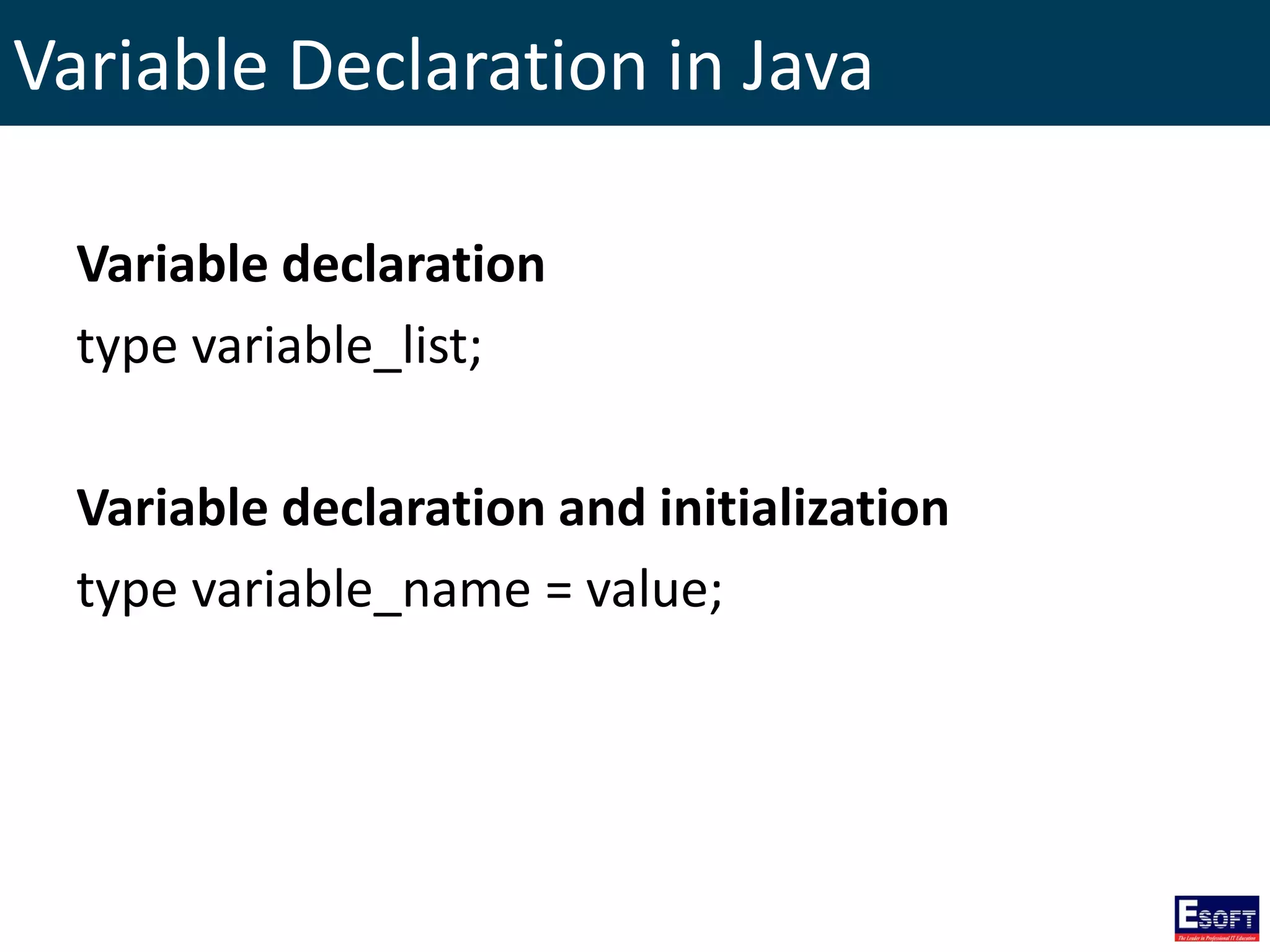
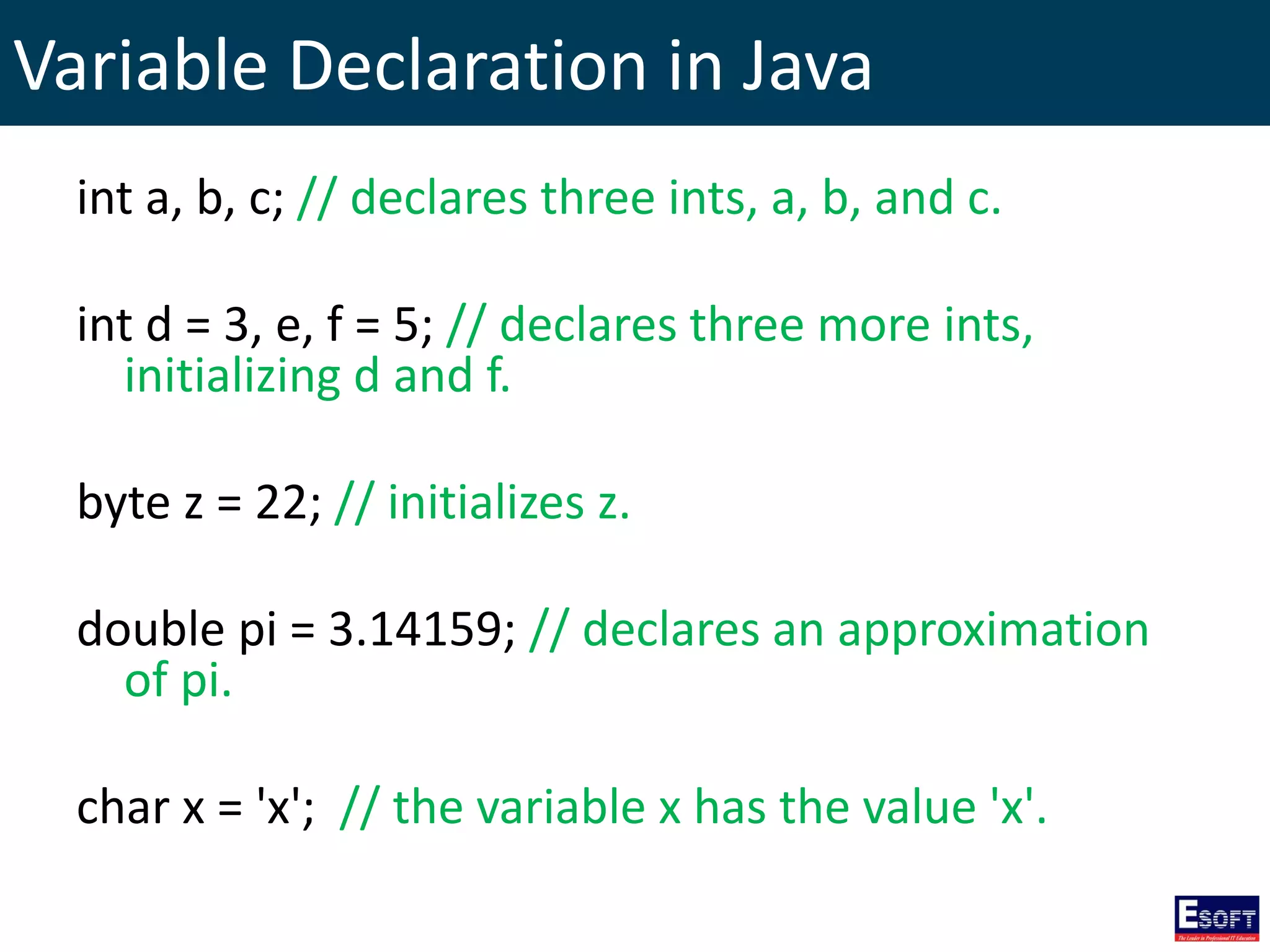
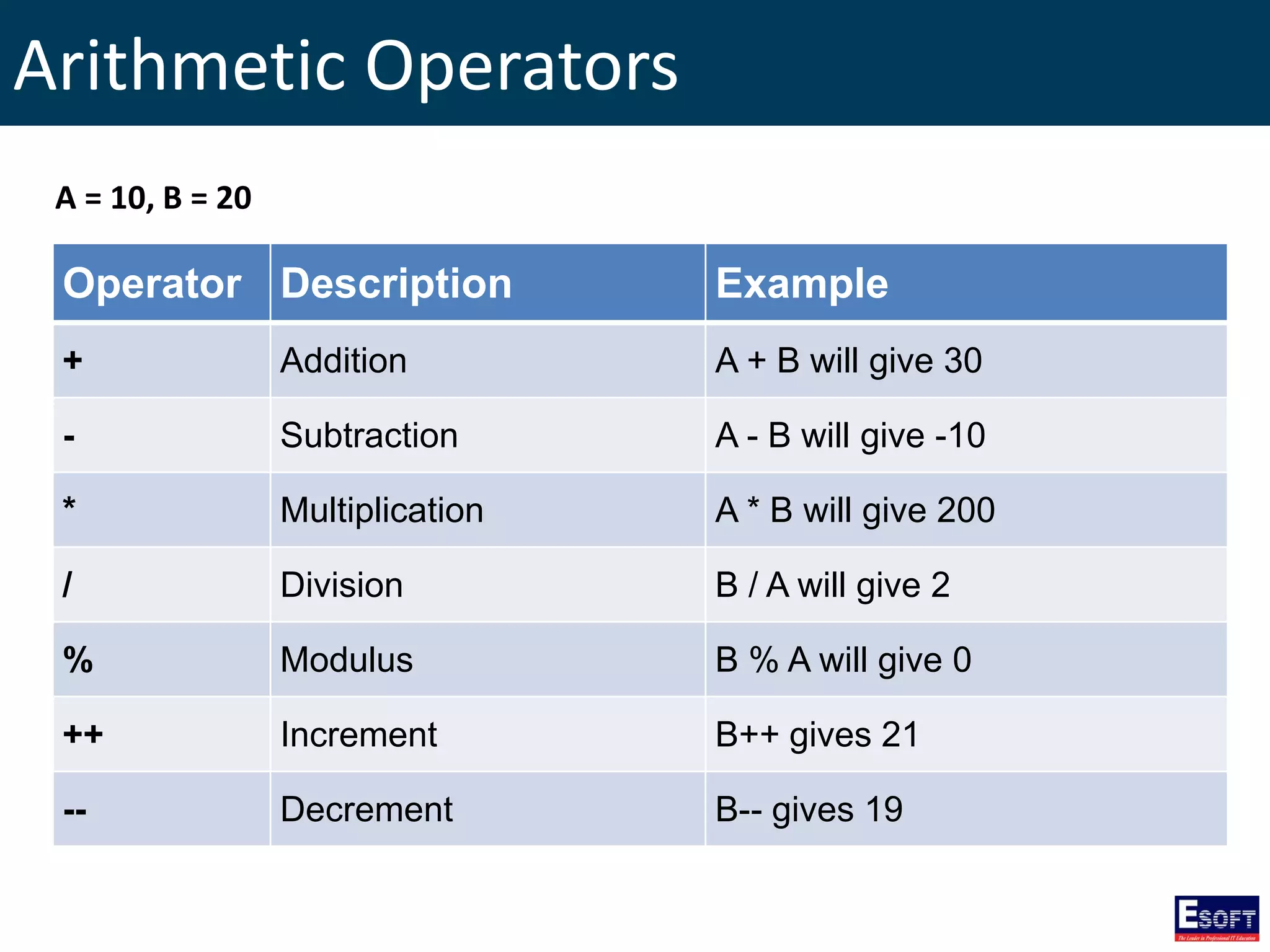
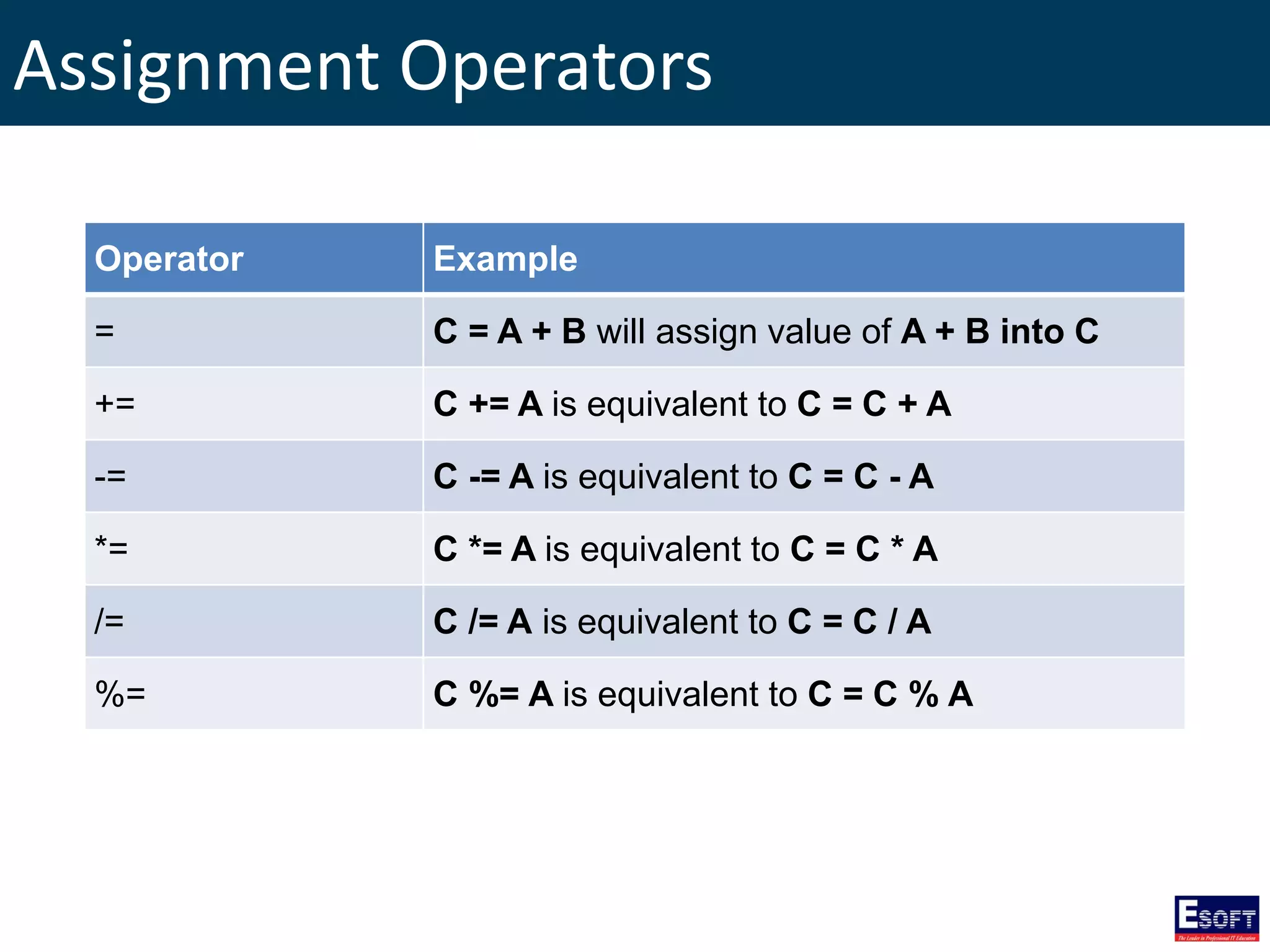
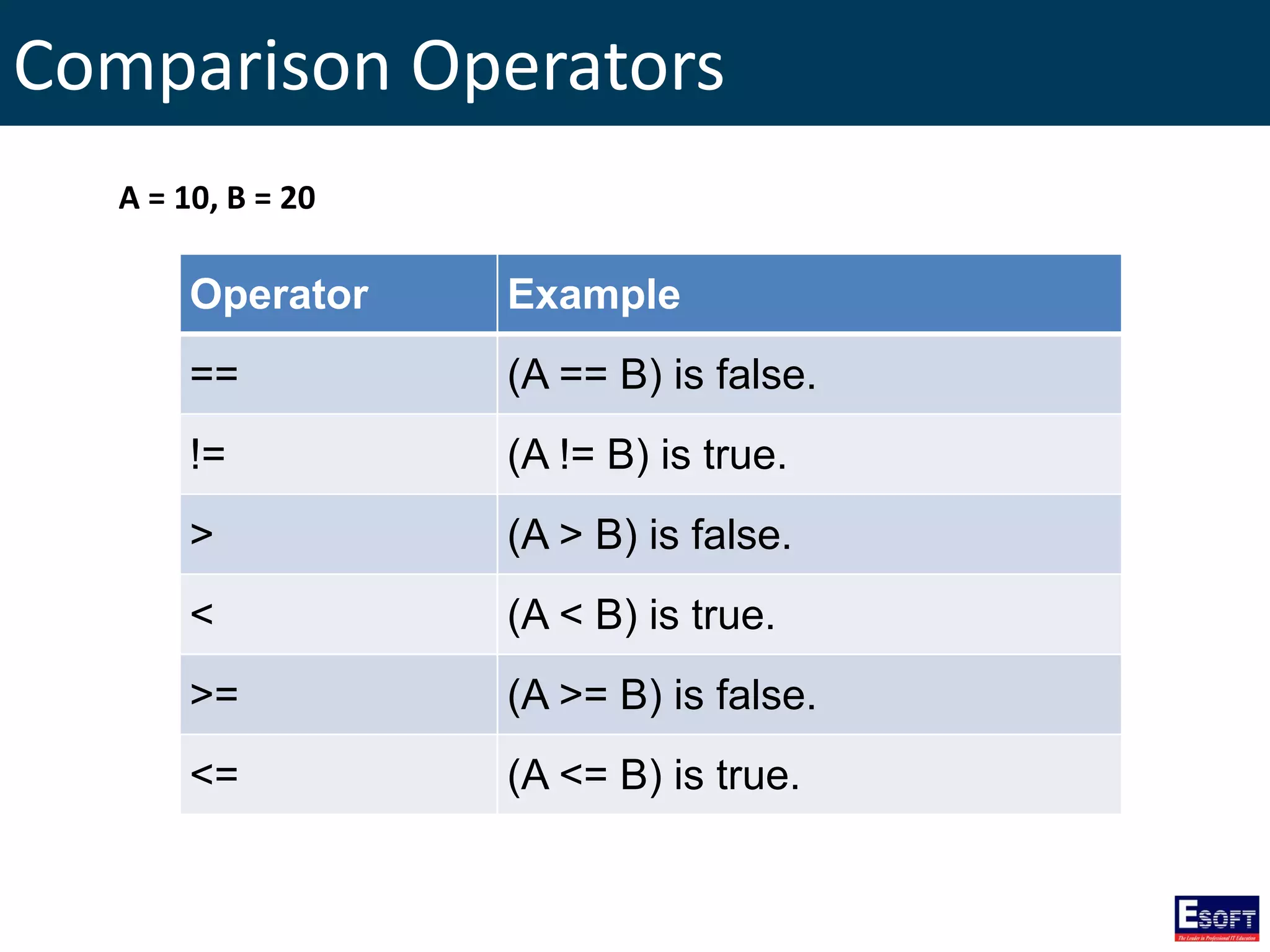
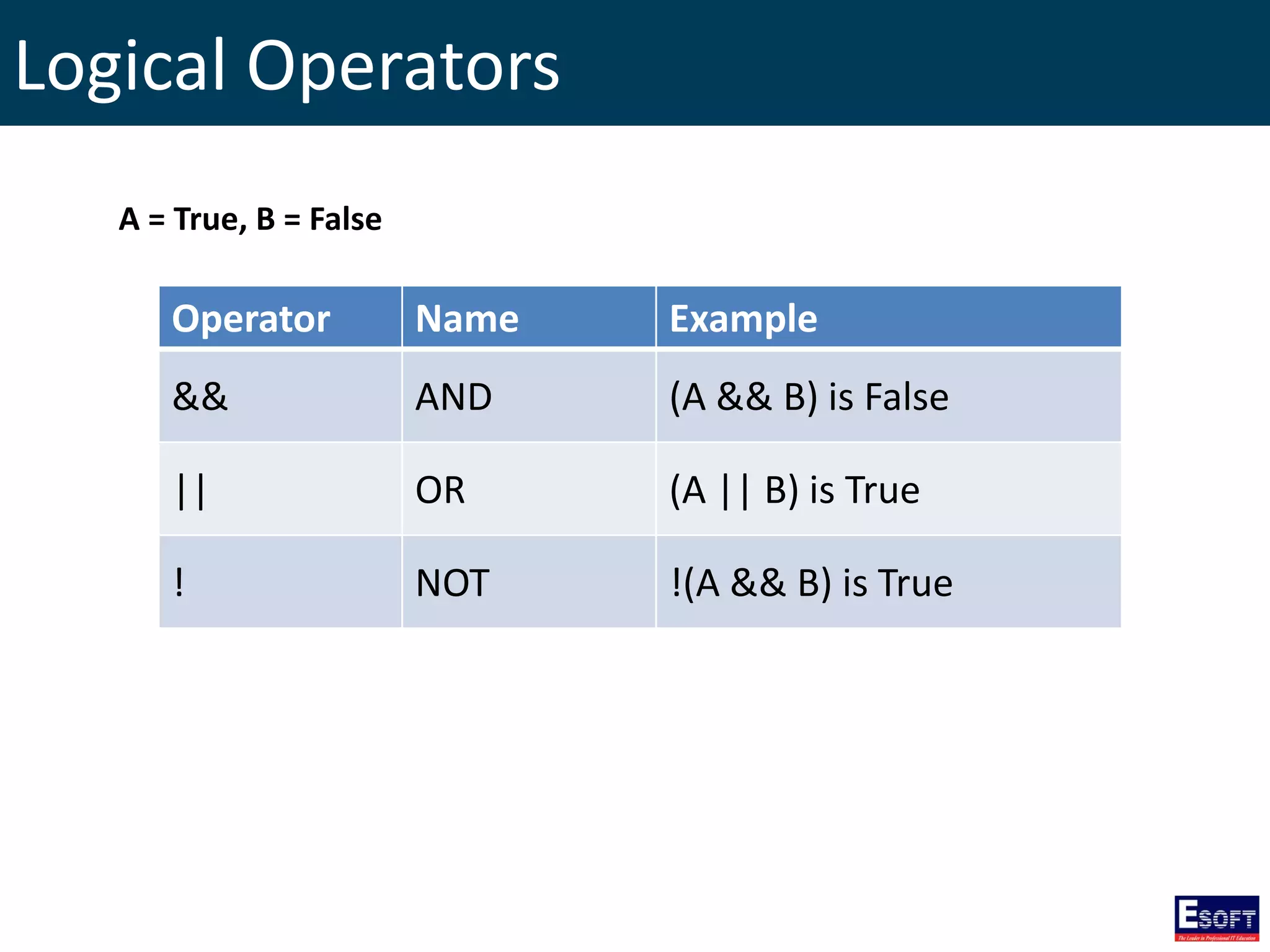
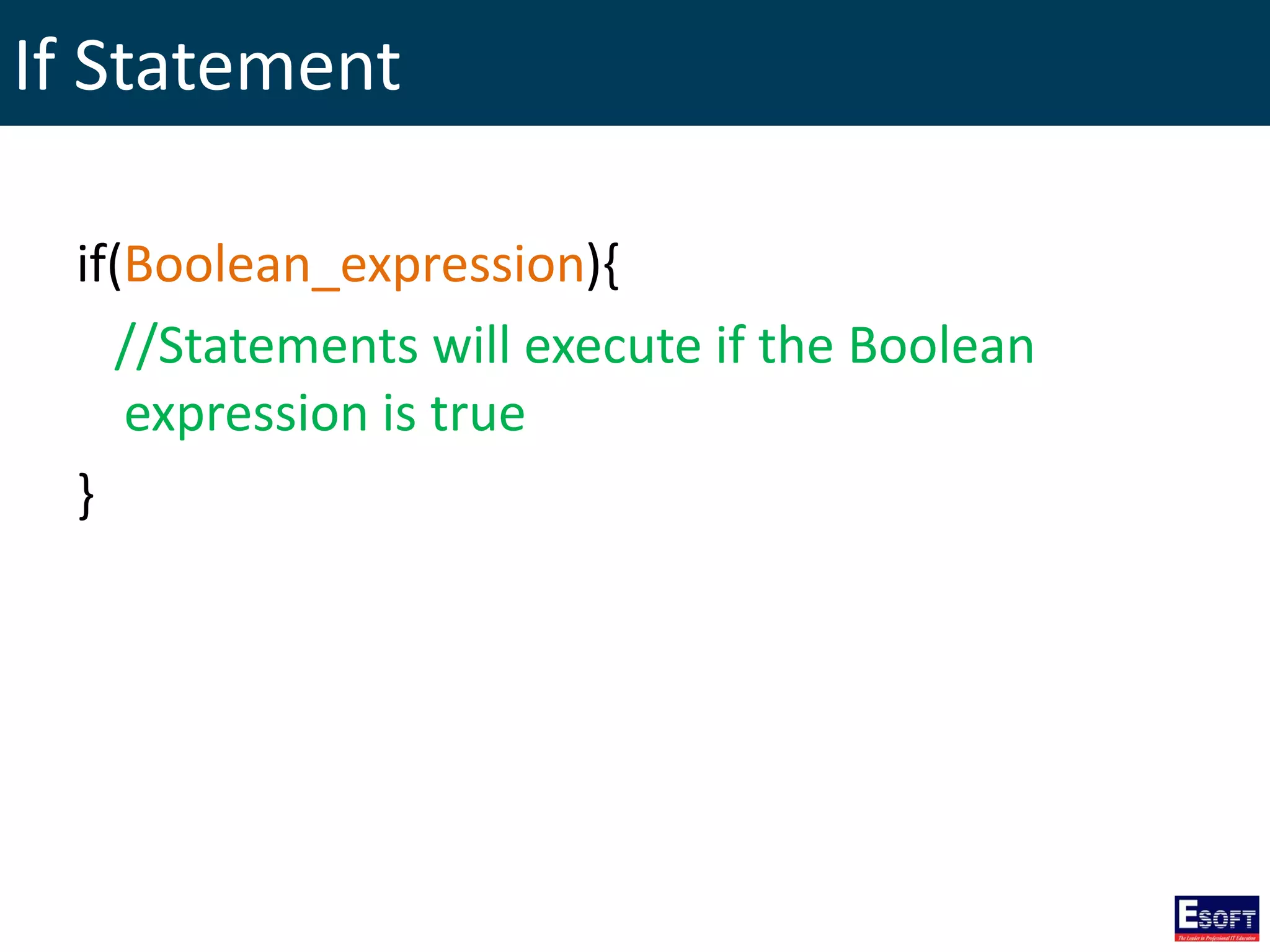
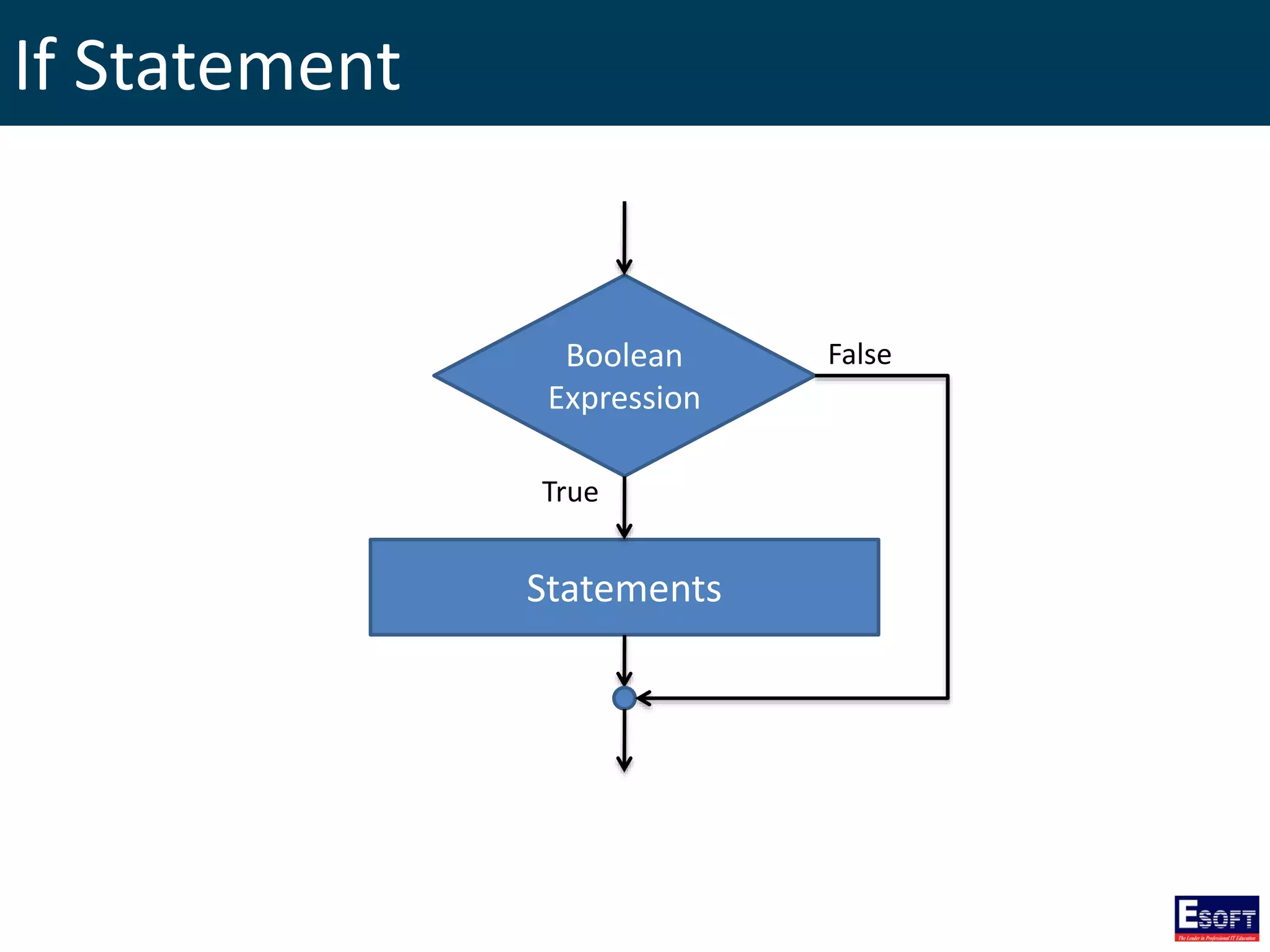
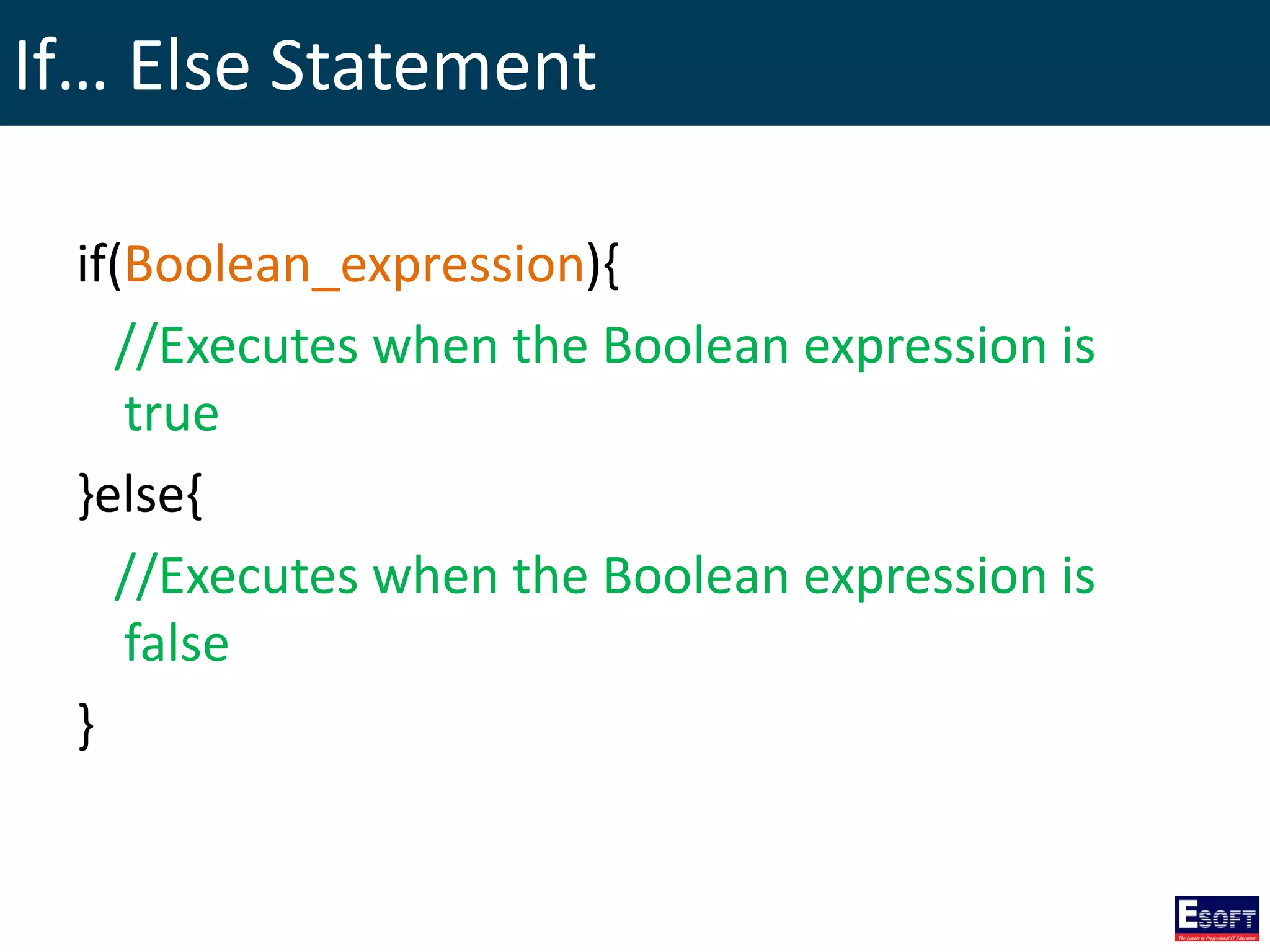
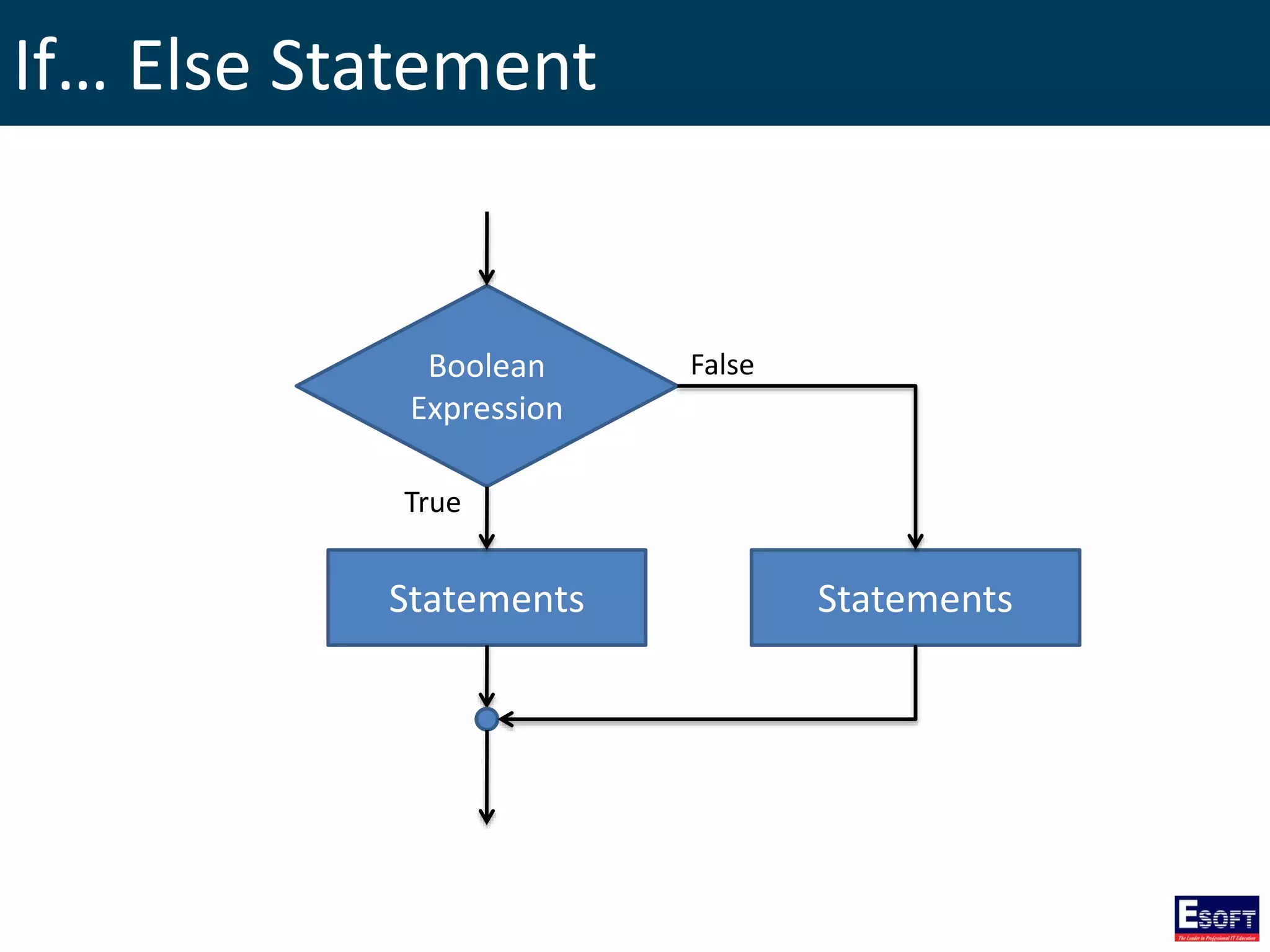
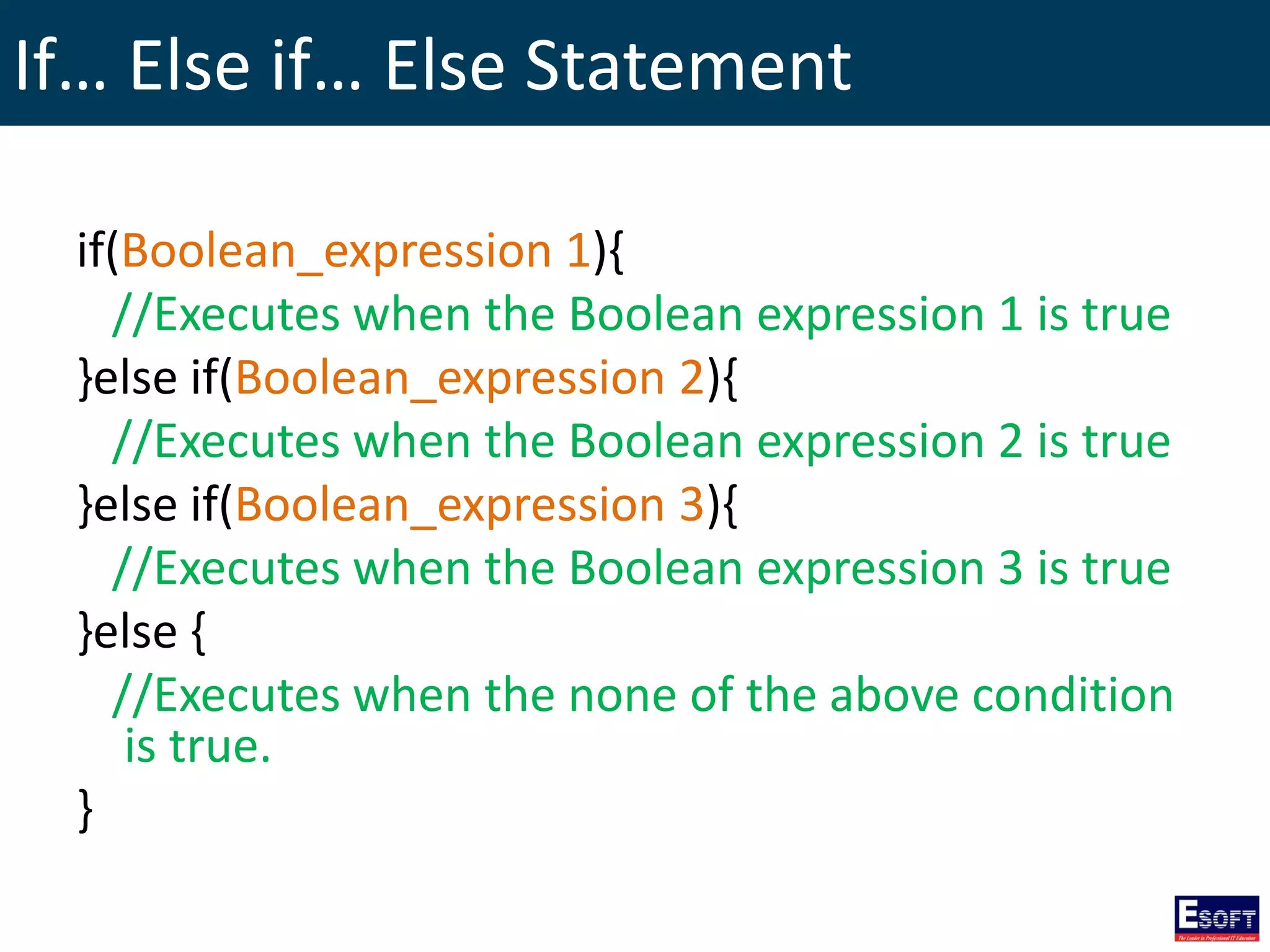
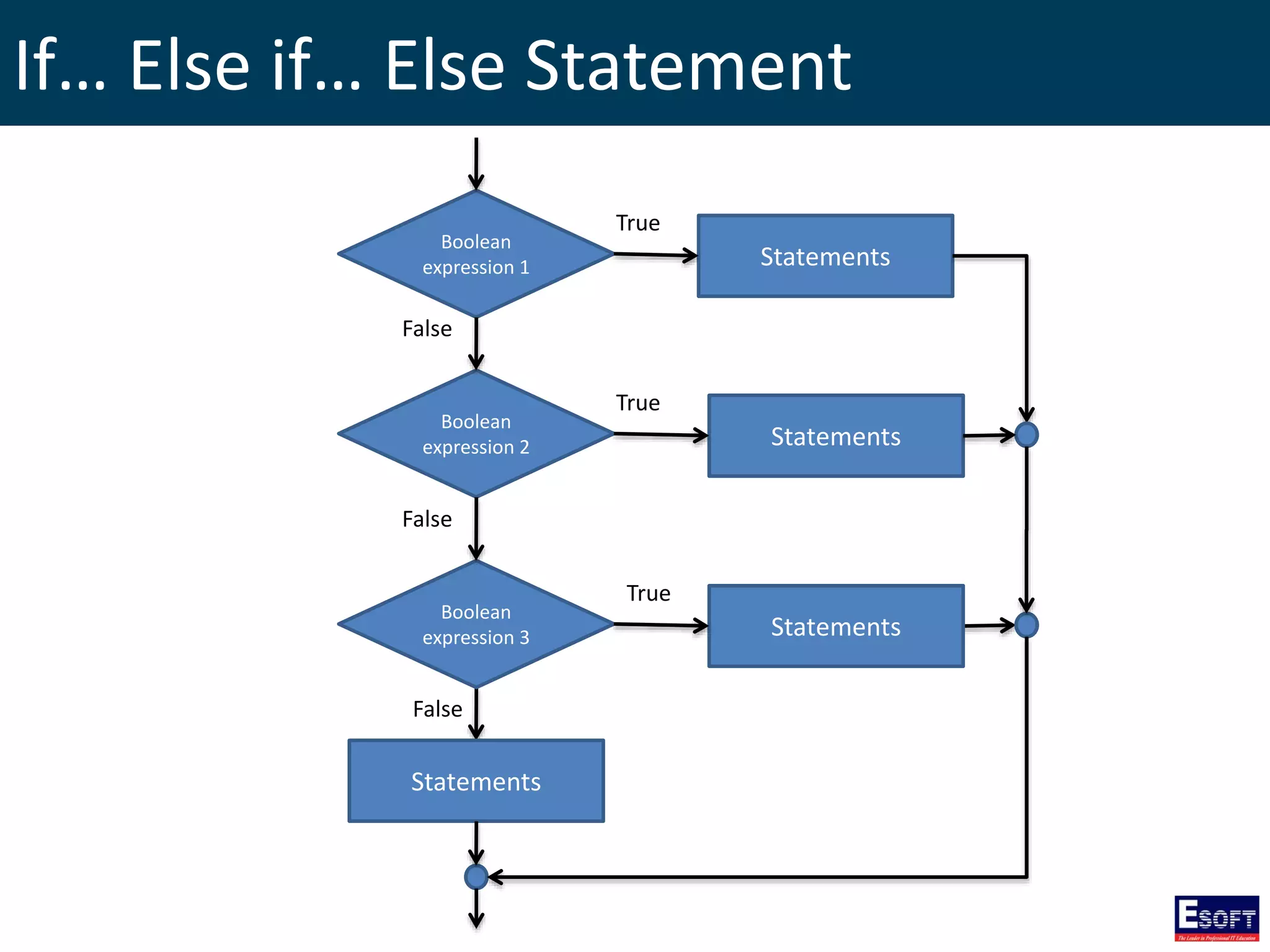
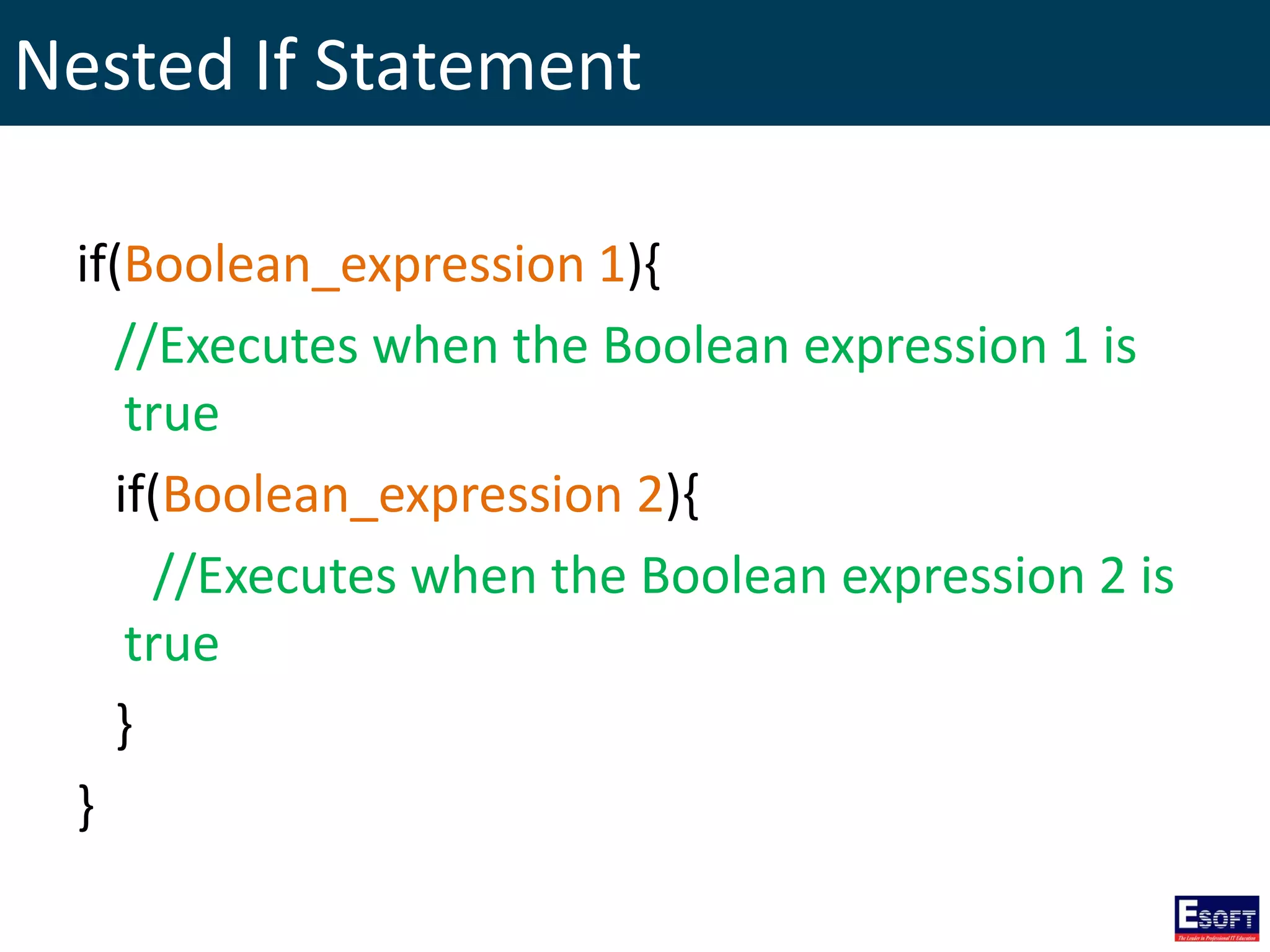
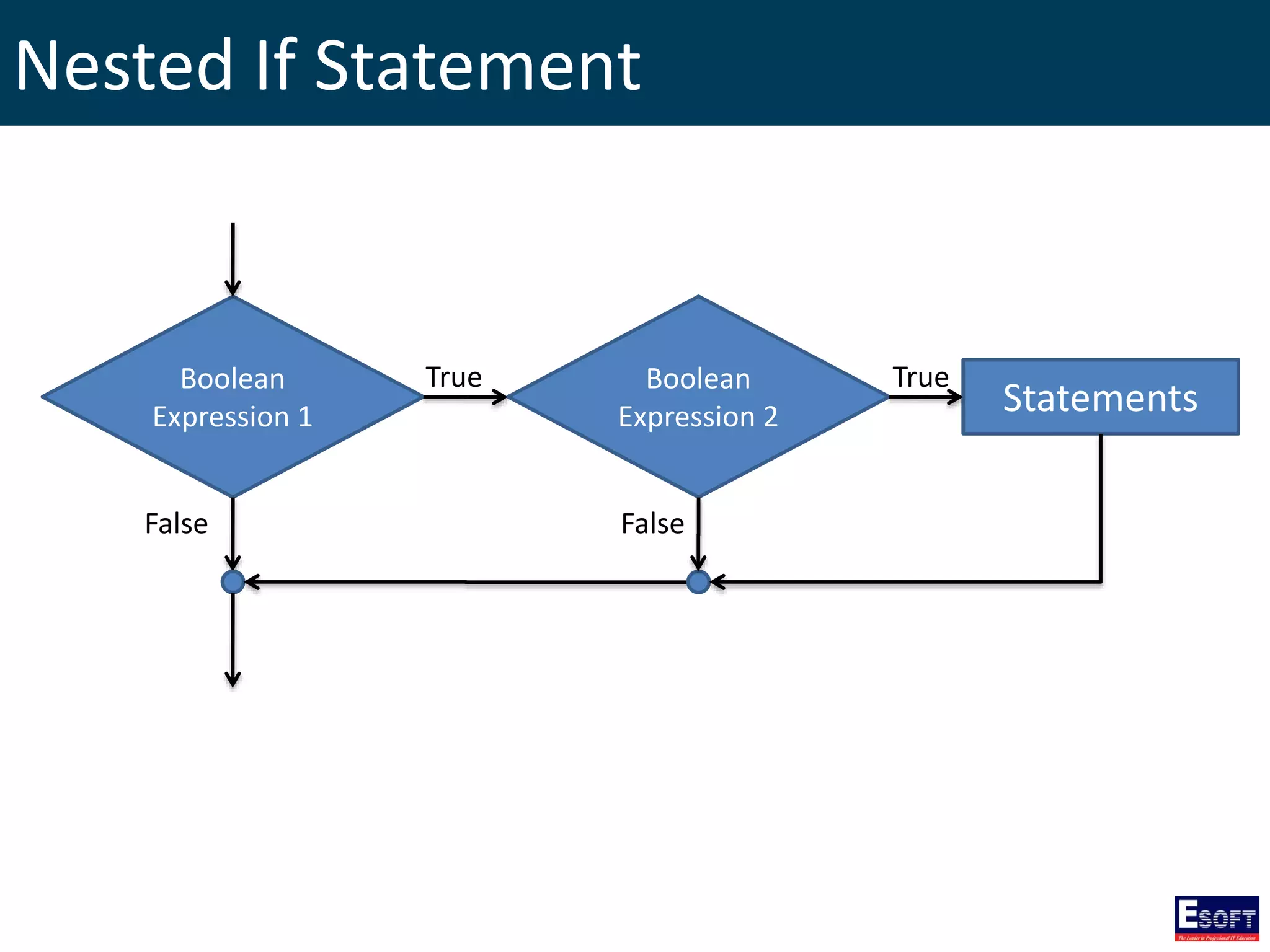
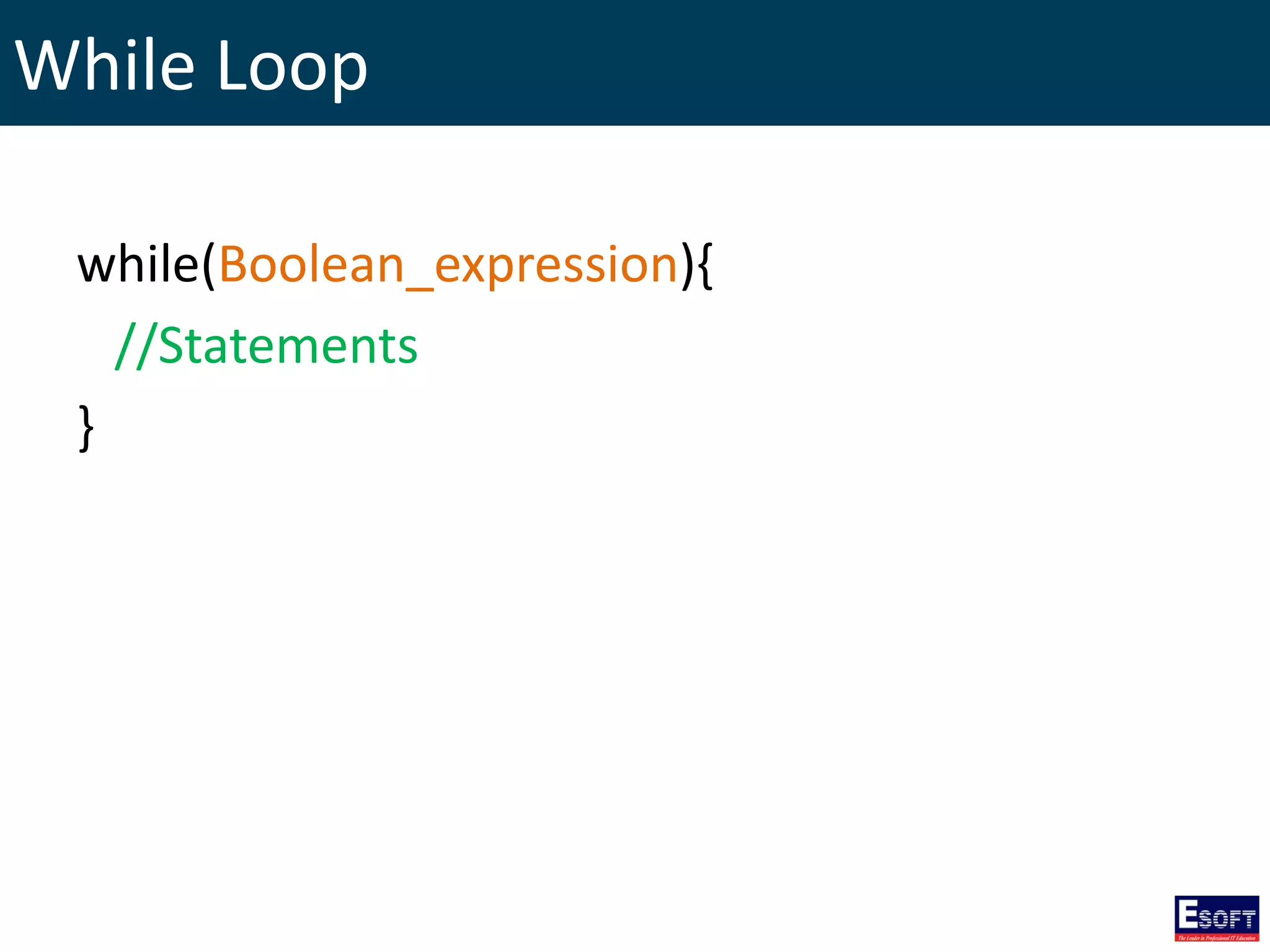
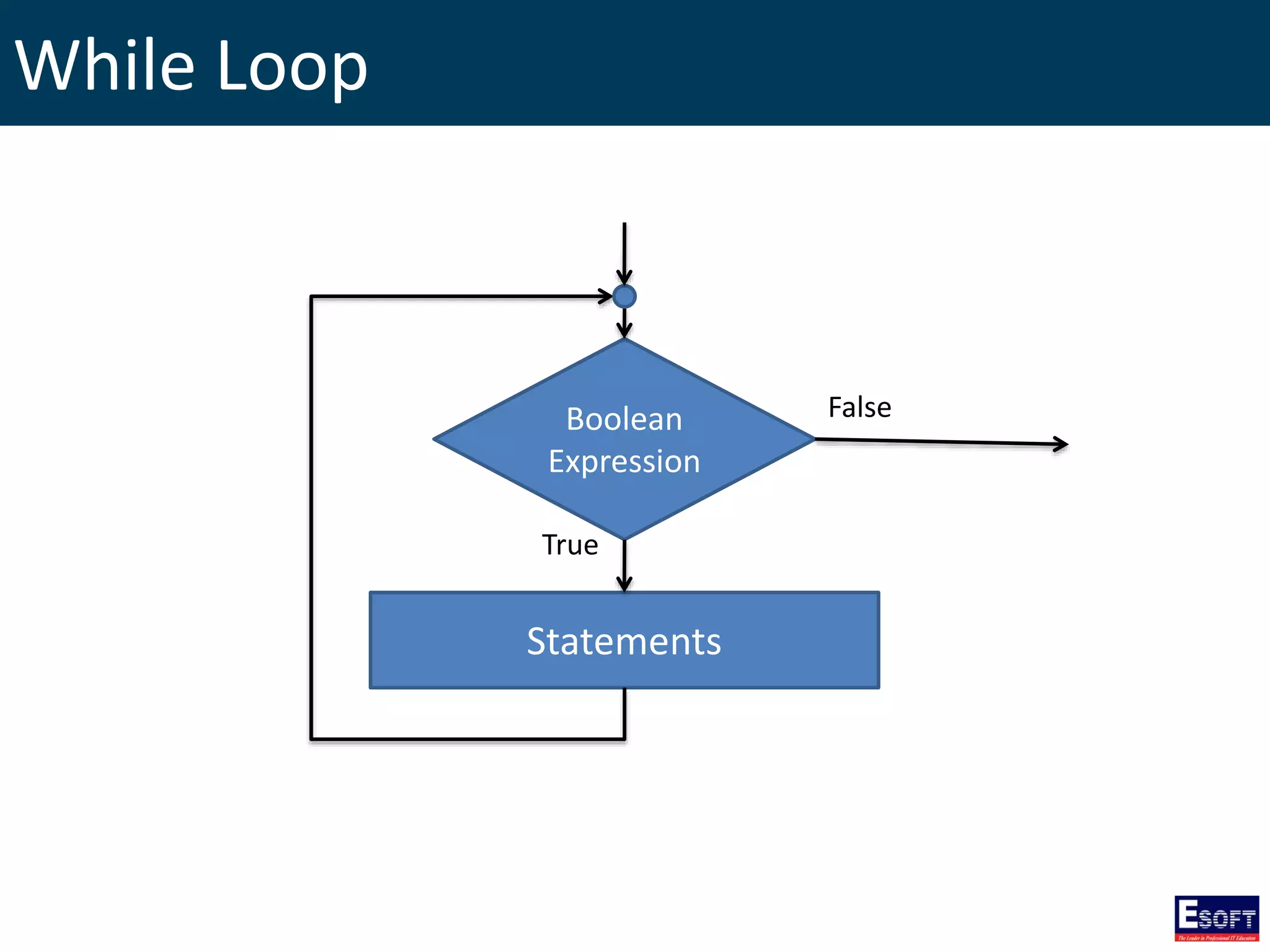
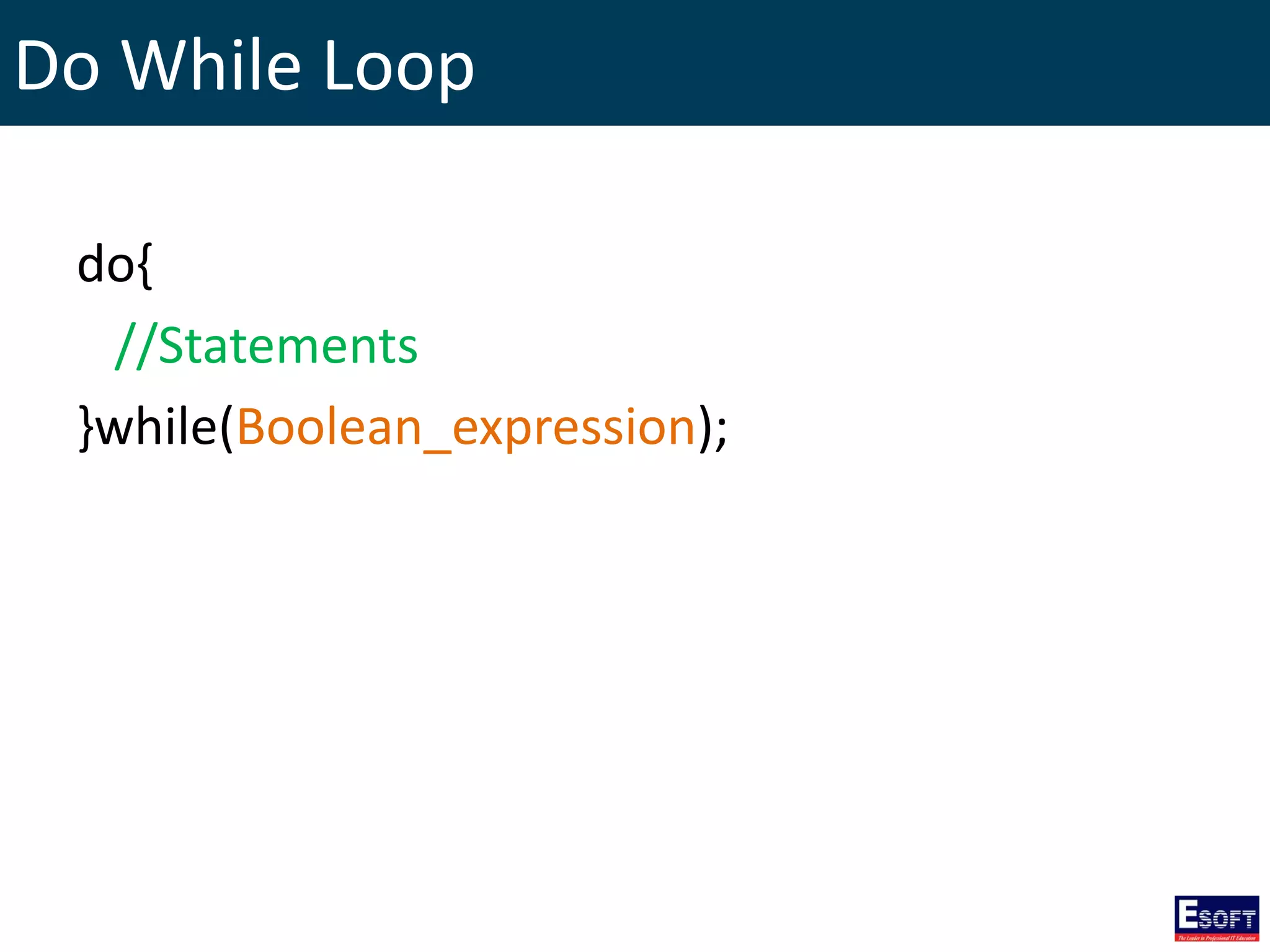
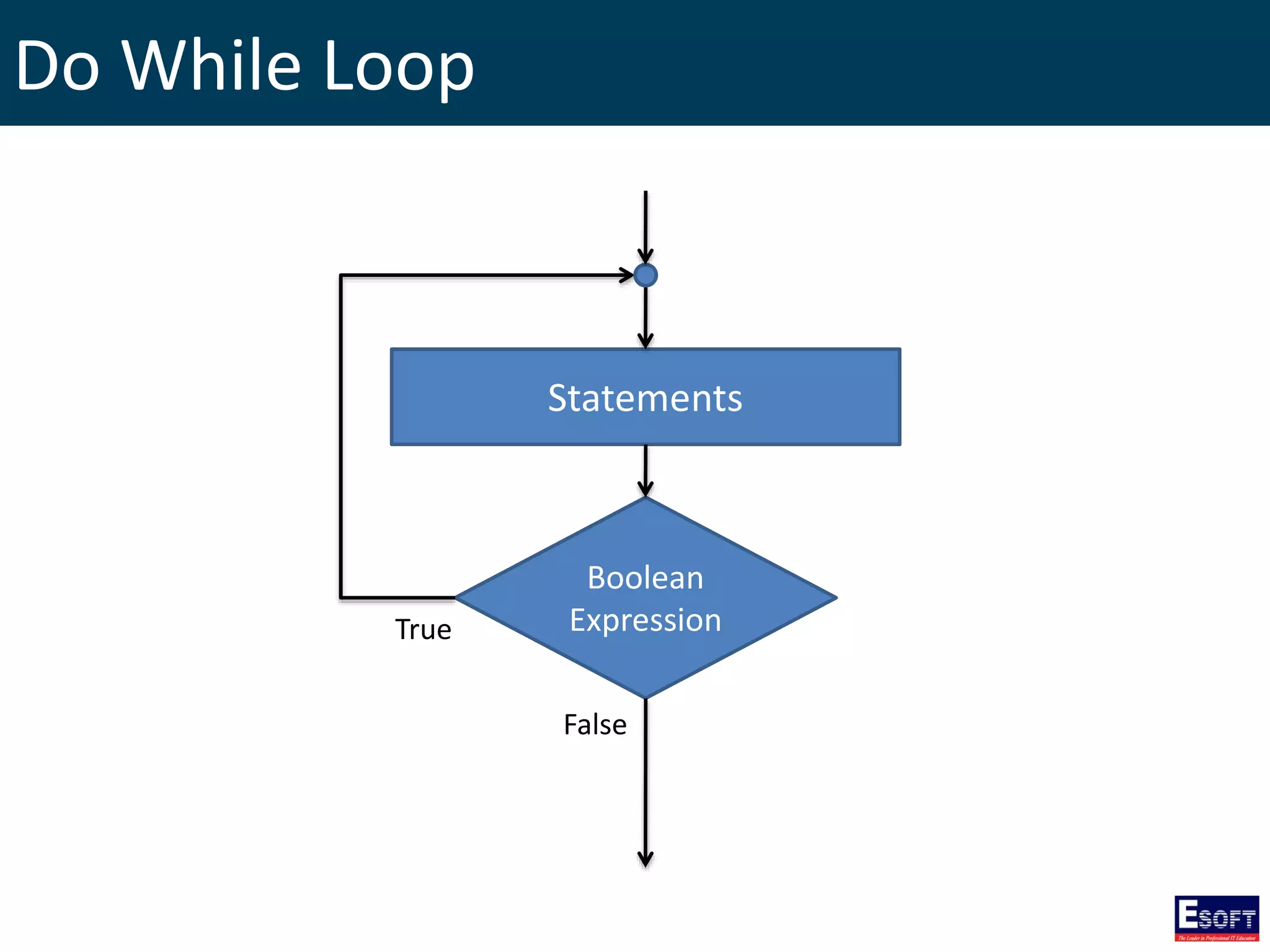
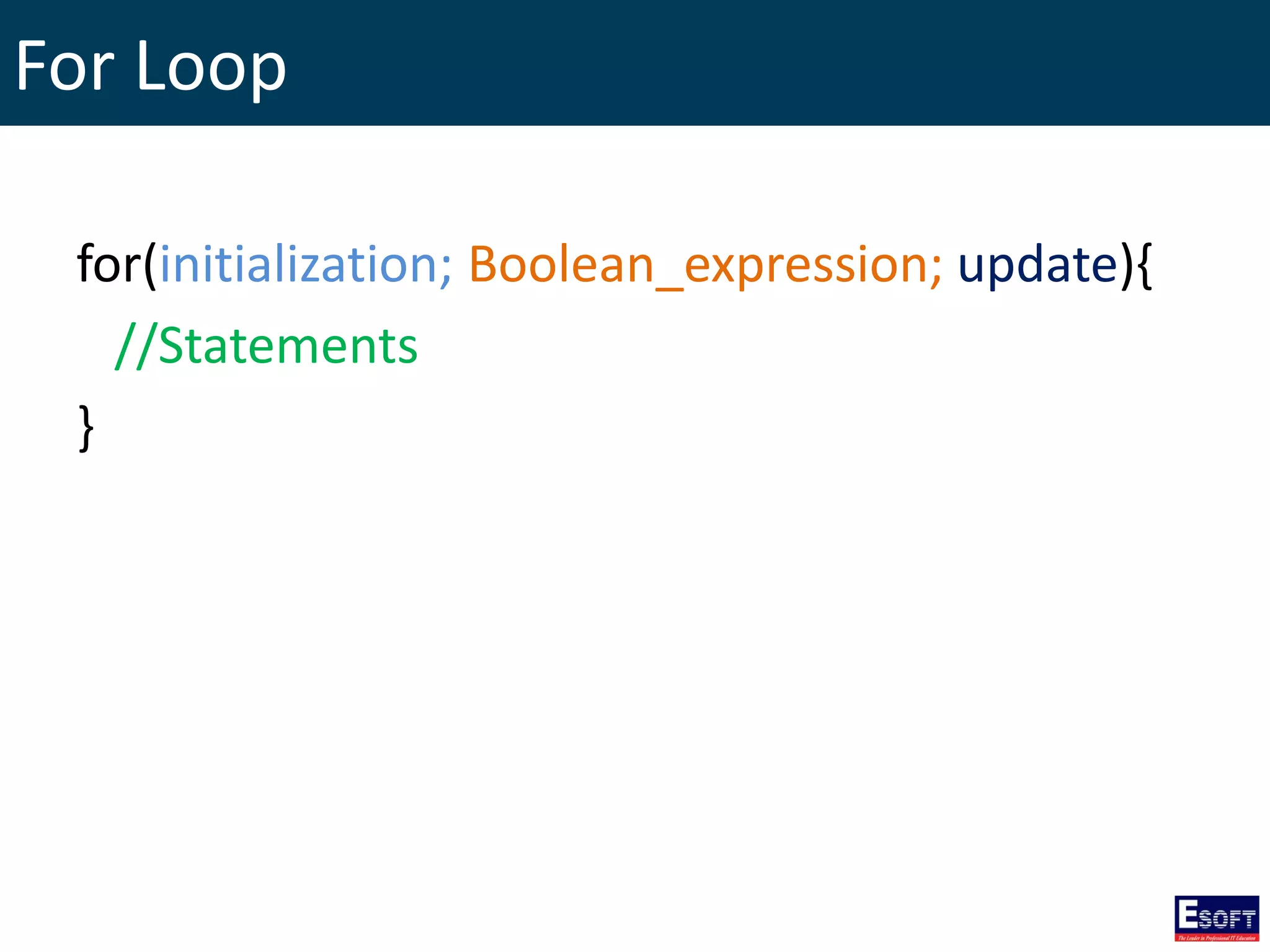
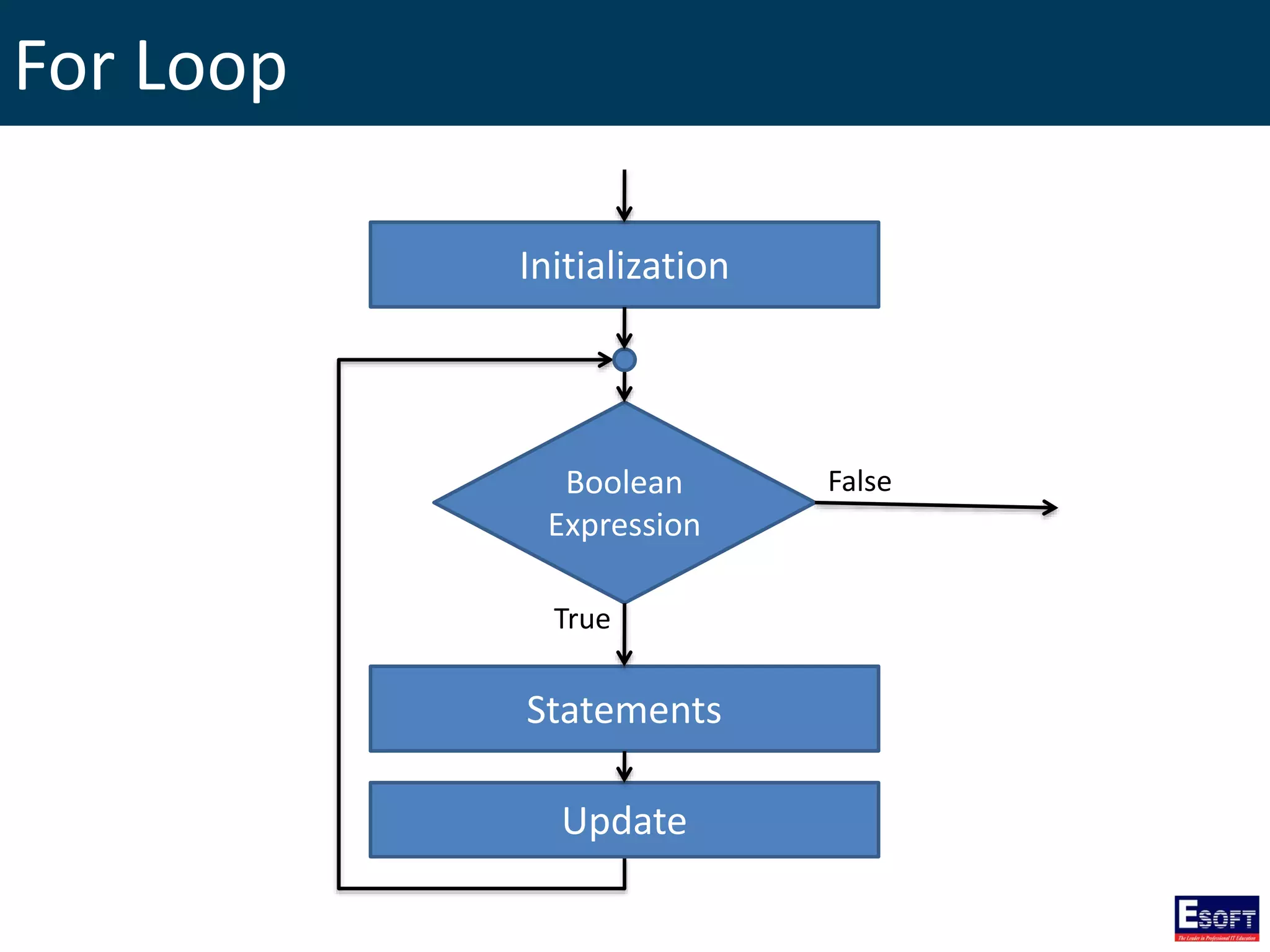
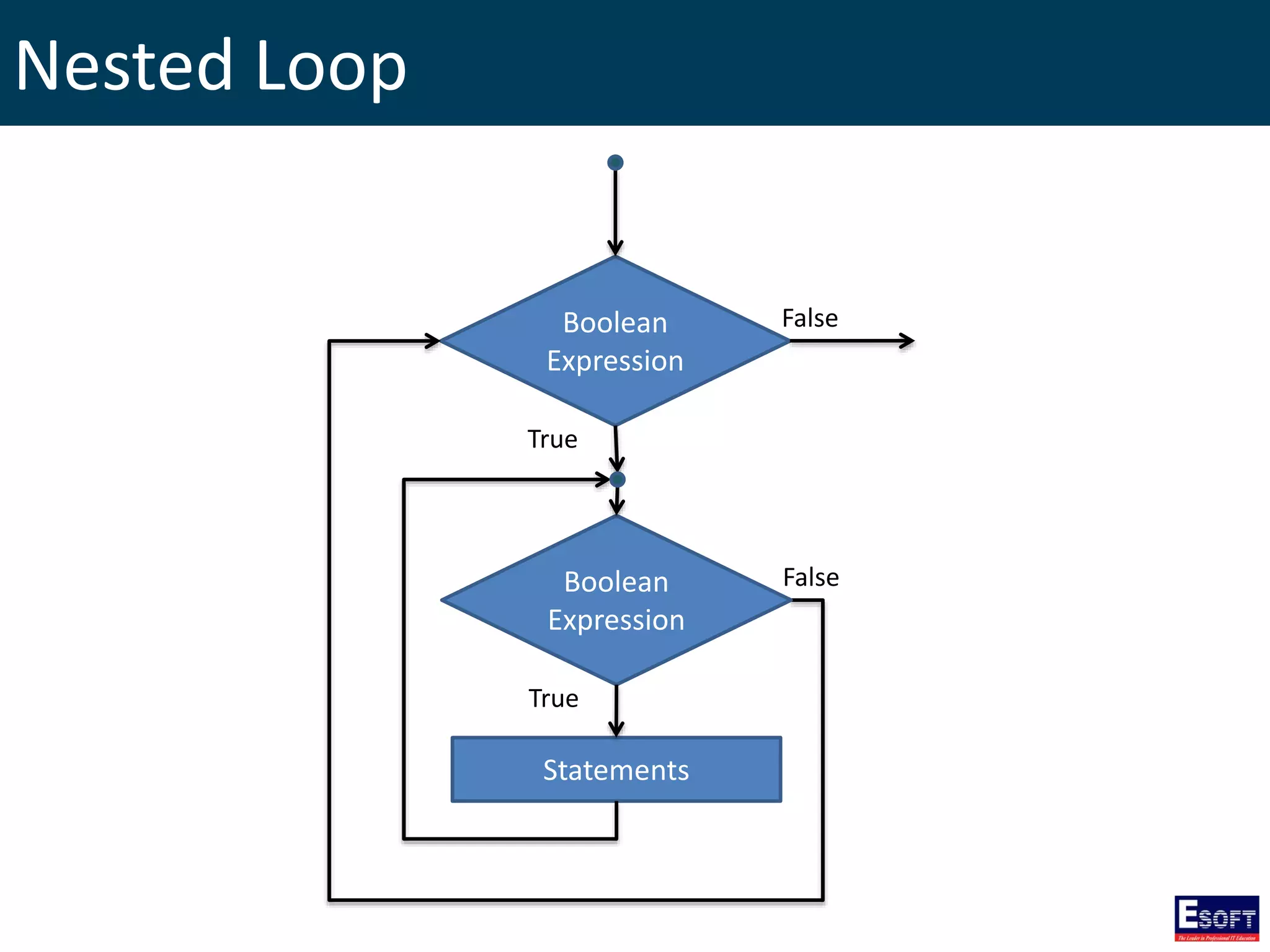
![Reading User Input by the Keyboard
import java.io.*;
public class DemoApp{
public static void main(String [] args) throws IOException{
BufferedReader br = new BufferedReader(new
InputStreamReader(System.in));
System.out.print(“Enter your text: “);
String txt = br.readLine();
System.out.println(“You have entered:” + txt);
}
}](https://image.slidesharecdn.com/moduleviii-160810184317/75/DITEC-Programming-with-Java-40-2048.jpg)
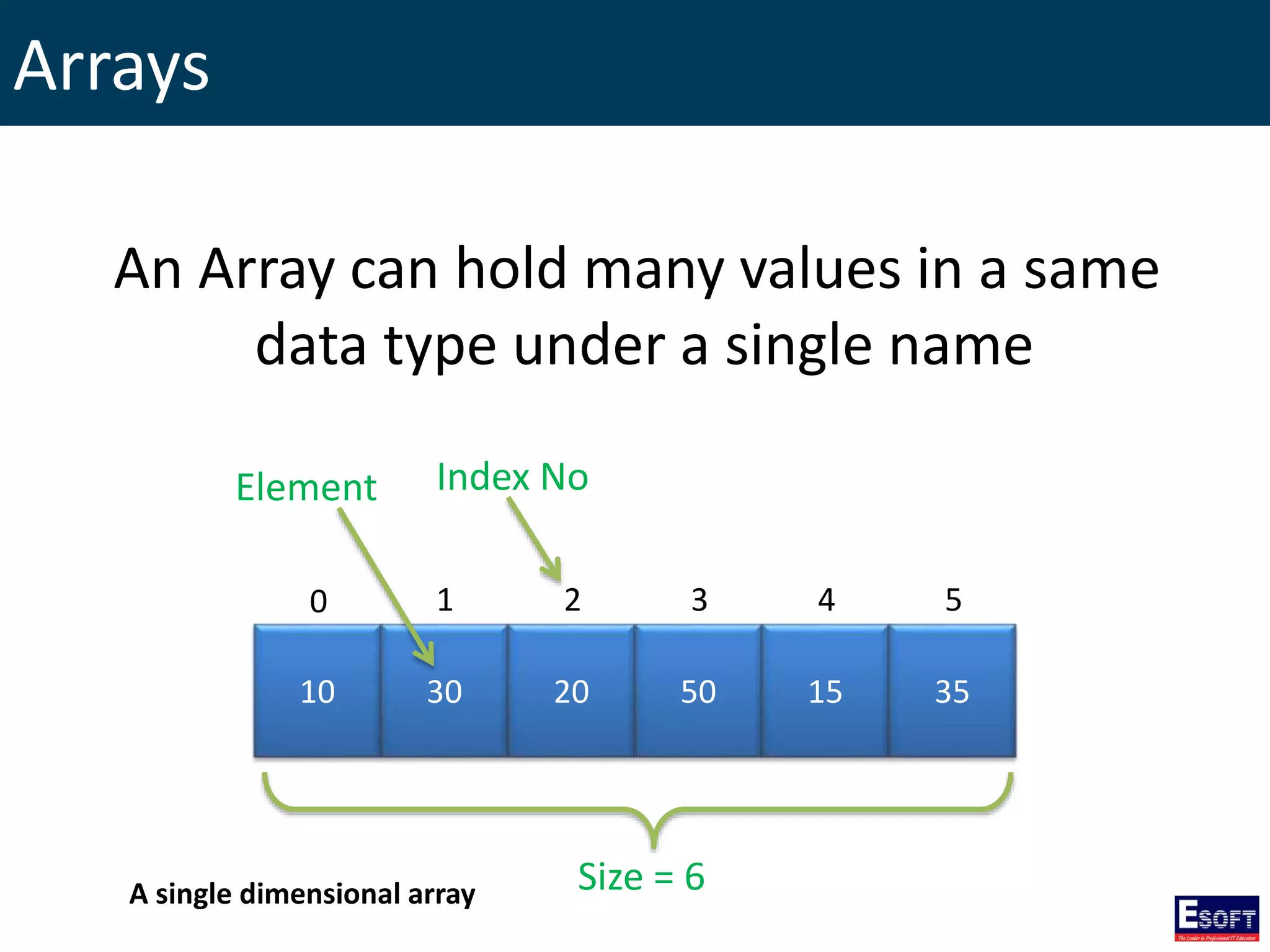
![Building a Single Dimensional Array
// Creating an Array
DataType[] ArrayName = new DataType[size];
// Assigning values
ArrayName[index] = value;
ArrayName[index] = value;
……..](https://image.slidesharecdn.com/moduleviii-160810184317/75/DITEC-Programming-with-Java-42-2048.jpg)
![Building a Single Dimensional Array
char[] letters = new char[4];
letters[0] = ‘a’;
letters[1] = ‘b’;
letters[2] = ‘c’;
letters[3] = ‘d’;
0 1 2 3
a b c d
0 1 2 3
letters
letters
Values in an Array can access
by referring index number](https://image.slidesharecdn.com/moduleviii-160810184317/75/DITEC-Programming-with-Java-43-2048.jpg)
![Building a Single Dimensional Array
//using an array initializer
DataType[] ArrayName = {element 1, element 2,
element 3, … element n}
int[] points = {10, 20, 30, 40, 50}; 10 20 30 40
0 1 2 3
points
50
4](https://image.slidesharecdn.com/moduleviii-160810184317/75/DITEC-Programming-with-Java-44-2048.jpg)
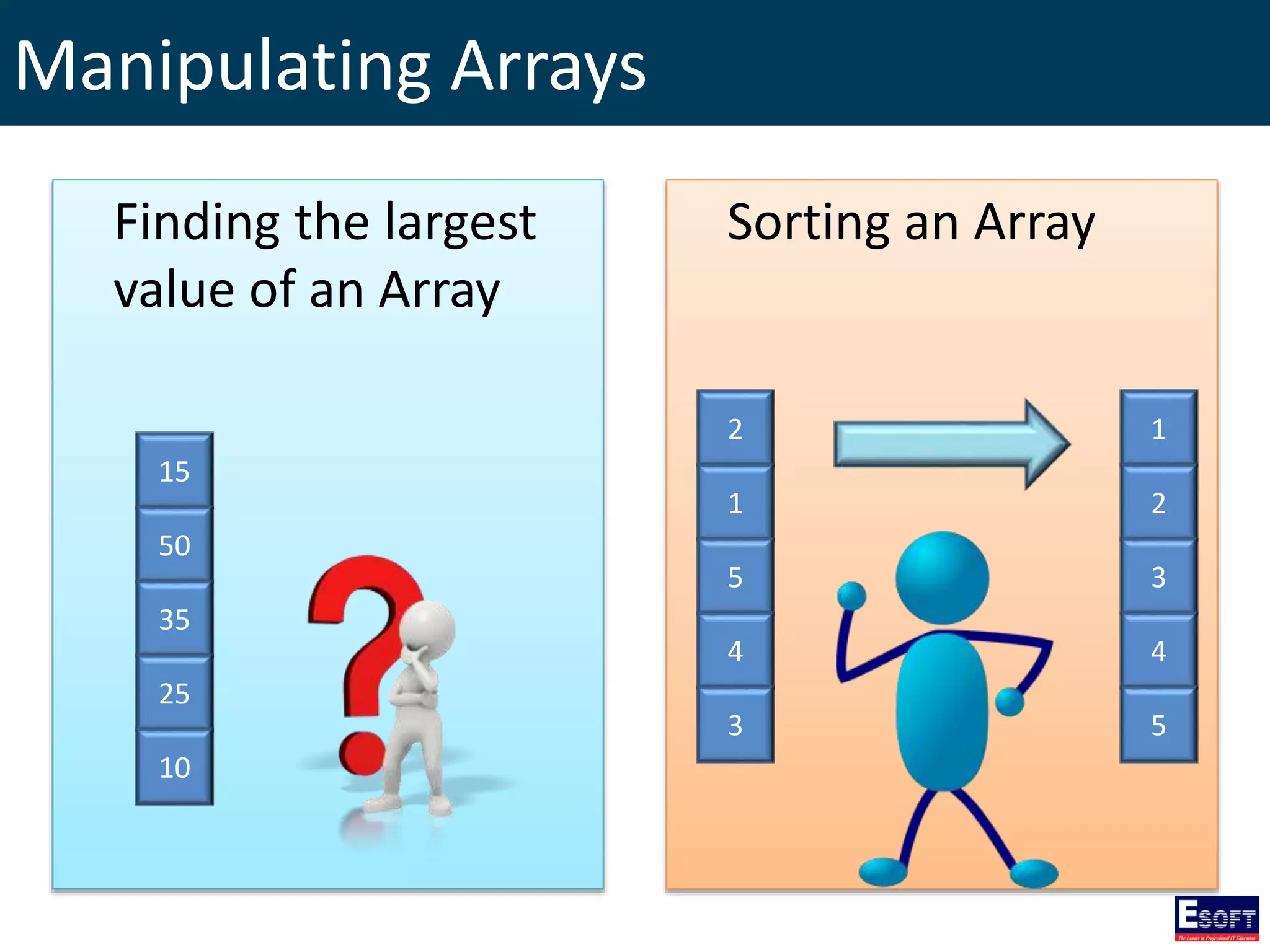
![Two Dimensional Arrays
10 20 30
100 200 300
0 1 2
0
1
int[][] abc = new int[2][3];
abc[0][0] = 10;
abc[0][1] = 20;
abc[0][2] = 30;
abc[1][0] = 100;
abc[1][1] = 200;
abc[1][2] = 300;
Rows Columns
Column Index
Row Index](https://image.slidesharecdn.com/moduleviii-160810184317/75/DITEC-Programming-with-Java-46-2048.jpg)
